Bye bye Kudat, and thanks for all the fish
I did like the market there, good fish, so cheap, and very tasty, sadly some stalls sold ray fish and sharks, which are protected here.
Anyway a few days ago I found my lost SIM card, this was the one with my UK number, and is used by various businesses I use the send me 2FA auth responses, you know, when they send you a code by txt/sms when logging in, so because I lost my main phone, I’m having to change SIMs on the backup phone a lot, this came to a halt with the phone refusing to accept any SIM, and the consequent loss of all communications, and internet access for me. I did plan to see if I could get my newer, soggy, iPhone repaired when I hit a main town, but I need weather forecasts, if nothing else before I get there, so off to town to look for a cheap phone to stand in. I settled on an Android RedMi Note 5, this cost about £90, and is pretty cool, it’s also a dual SIM device so I can have a Malay and Philippine SIM card in it. So far it’s been great. The old iPhone started seeing SIM cards again after a full reset, so things are good. Did I mention I also bought an iPad for the navigation, that’s great for pictures too. The RedMi has a high spec camera but the pictures don’t seem as good under low light, or if there’s movement. We shall see. A word of warning, should you chose to make your phone into an authenticator, using something like google or microsoft authenticator apps, should your phone pack in, or drown, then it’s no easy matter to get a new authenticator to take over, and in the case of some of my accounts, I am locked out now, until I have been through the verification process. Quite a pain, I thought the authenticator apps might make things simpler.
One thing I have to respect the Android developers for, is a fantastic bit of marketing, it’s the beautifier option, especially useful on selfies. I mean, who isn’t going to turn it on when doing a selfie, which is what 99.99% of all pictures I see being taken here are. I love the fact that it’s just going to be a few lines of software as well. I gave it a try and it seemed to work, see below:
Before
After
Not bad eh!
So I headed on downtown to checkout, and found there is no need for immigration between Labuan and Sabah, something I had been told was needed, between the states, Labuan is a state, but used to be part of Sabah. I caused a bit of concern with the staff by turning up and requesting a stamp, it seemed, so I made a quick retreat. I wonder if they feel the same way in Labuan, we will see in a few days time.
Tuesday morning 8AM was set for launch, but the NE monsoon perked up, and started blowing very hard and consistent from Sunday night, On Tuesday morning the sea state was quite rough and the wind was still blowing strong, the yard didn’t want to launch me so I thought best to wait a couple of days and launch Thursday 8AM.
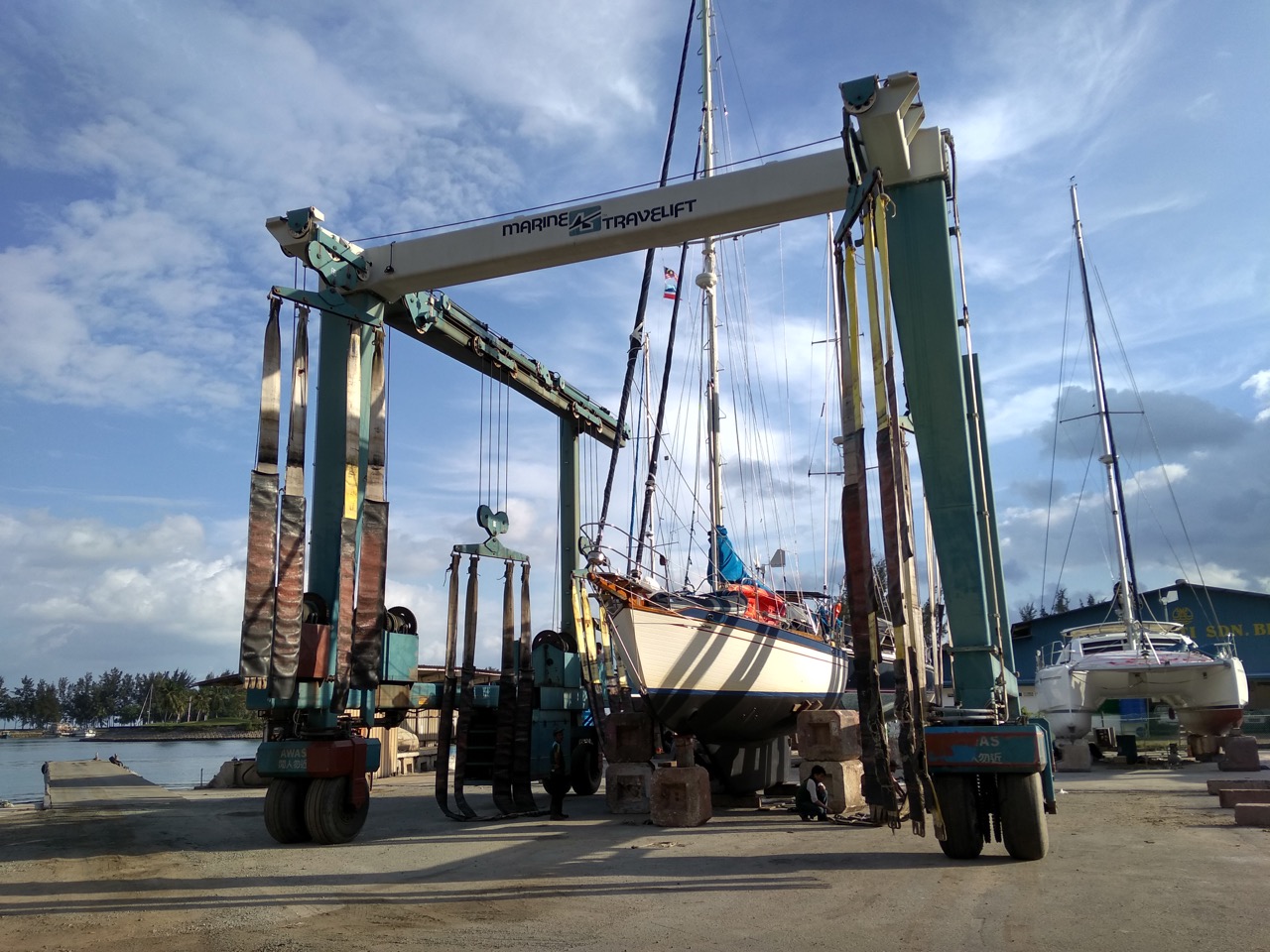 The travel lift arrived bang on time at 8AM, and I was in the water 20 minutes later, doing the old reversing the wrong way trick. still I missed all the hard concrete piles and got out just fine. I would have had a lot more trouble without the bow thruster.
The travel lift arrived bang on time at 8AM, and I was in the water 20 minutes later, doing the old reversing the wrong way trick. still I missed all the hard concrete piles and got out just fine. I would have had a lot more trouble without the bow thruster.
Before launch, I waited for the boat to be lifted off its supports so I could paint those areas that had been inaccessible, they had removed the ladder and to get me back on board for the launch, a fork lift truck arrived and I stood on the forks and was raised some 15ft up to the boat, that was fun.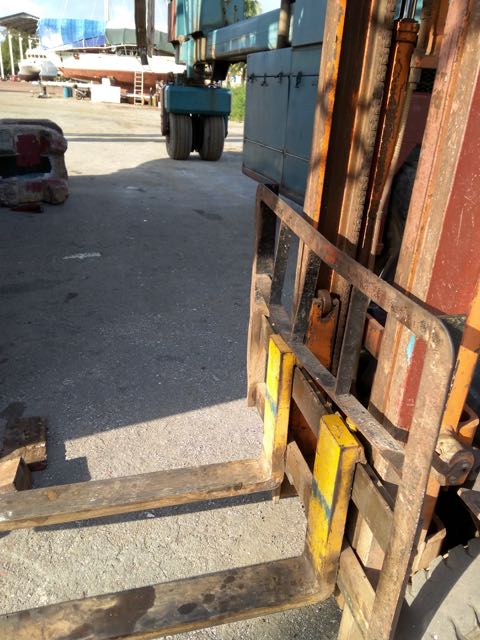
Below you can see the strops being passed underneath the hull, 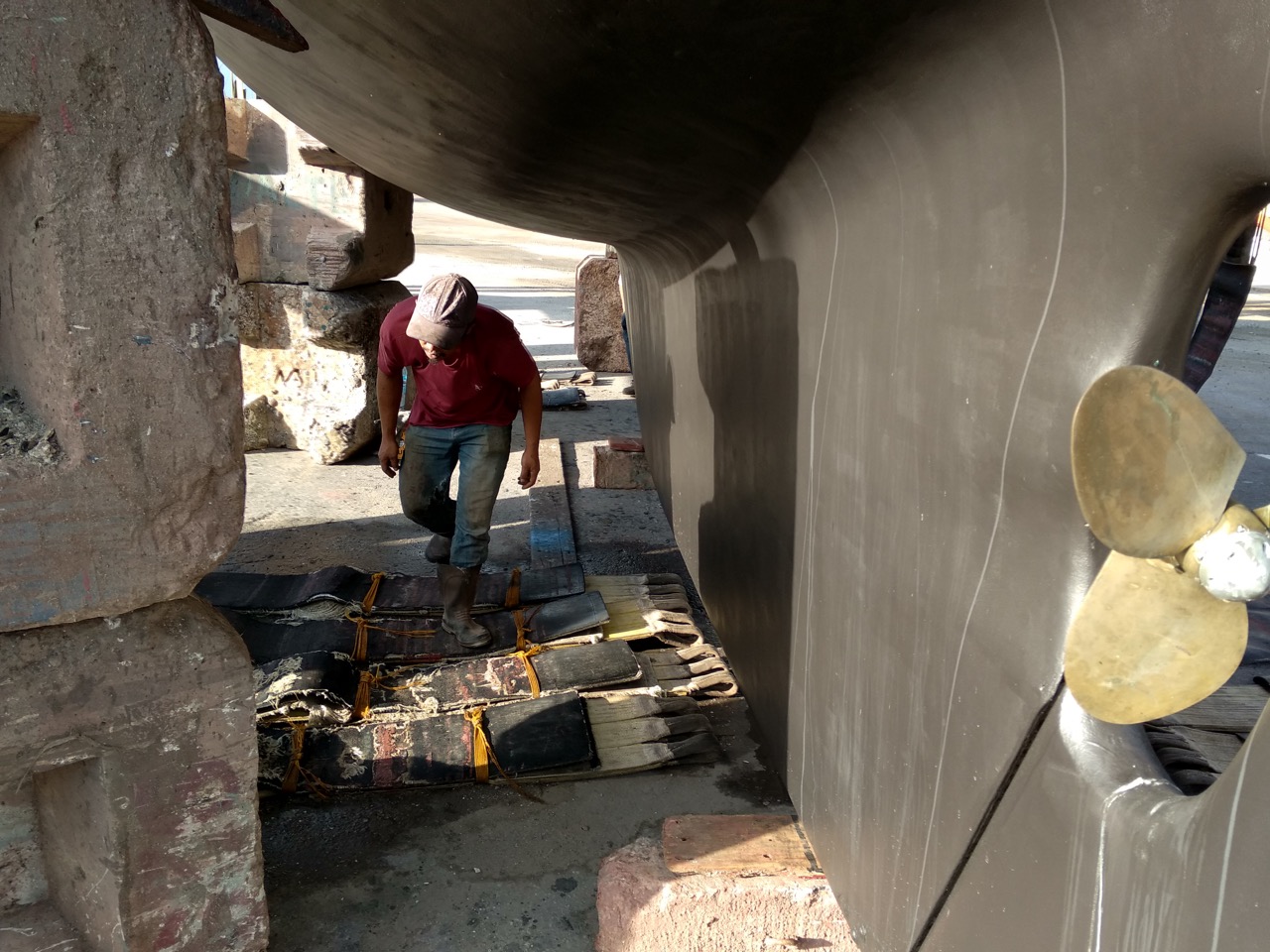 they are joined together by pushing steel rods through the hoops at the end. Human ingenuity never ceases to delight me.
they are joined together by pushing steel rods through the hoops at the end. Human ingenuity never ceases to delight me.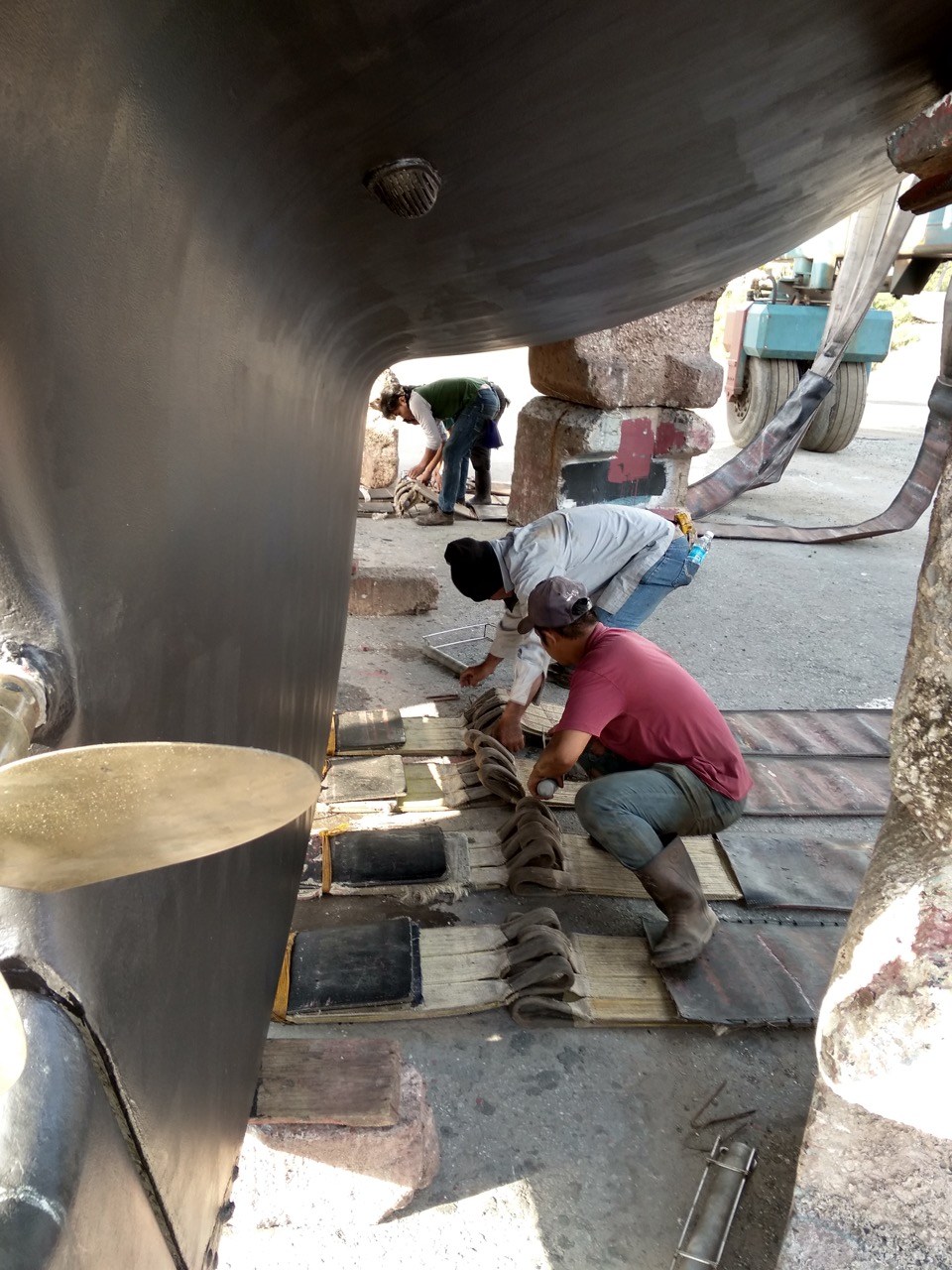
As I left the little basin and headed out into the South China Sea, I was confronted with big waves, the remnants of the previous few days high winds, I had about 15 knots of wind blowing onto me, but 10 ft high waves coming at me too. I was only able to make about 2 – 4 knots in these conditions, and I had 15 miles ahead, before I could turn and head south, putting all of this behind me.
It took a good three hours, and at the top of the Kudat peninsula I was rounding, the sea was quite rough and breaking in quite a scary way on the two reefs I had planned to motor in-between, I could hear the voice of uncle Arthur from Dads Army saying “Do you think that’s wise sir?” Anyway, I pushed on, and once round the top, I unfurled the Yankee headsail, turned of the engine and had a great 6-7 knot rush down the coast to my first nights anchorage at Agul Bay.
The problem here is that the NW coast is exposed to weather, wind and waves, coming in from the NW, and although the monsoon is primarily bringing winds from the NE at this time of year, the big swell and waves generally come from the NW, so you either hide behind an island, of which there are few, or you have to find a crag/inlet in the coast you can get behind. most of the spots on this stretch of coast still are affected by the NW swell, so Agul bay as lovely as it was, was still quite rolly.
Once I had dropped anchor and got settled, I heard some excited voices approaching, it turned out a local fisherman and his son had canoed out to see me and say hello, we had a little chat, they were ever so nice. Then he rowed back ashore.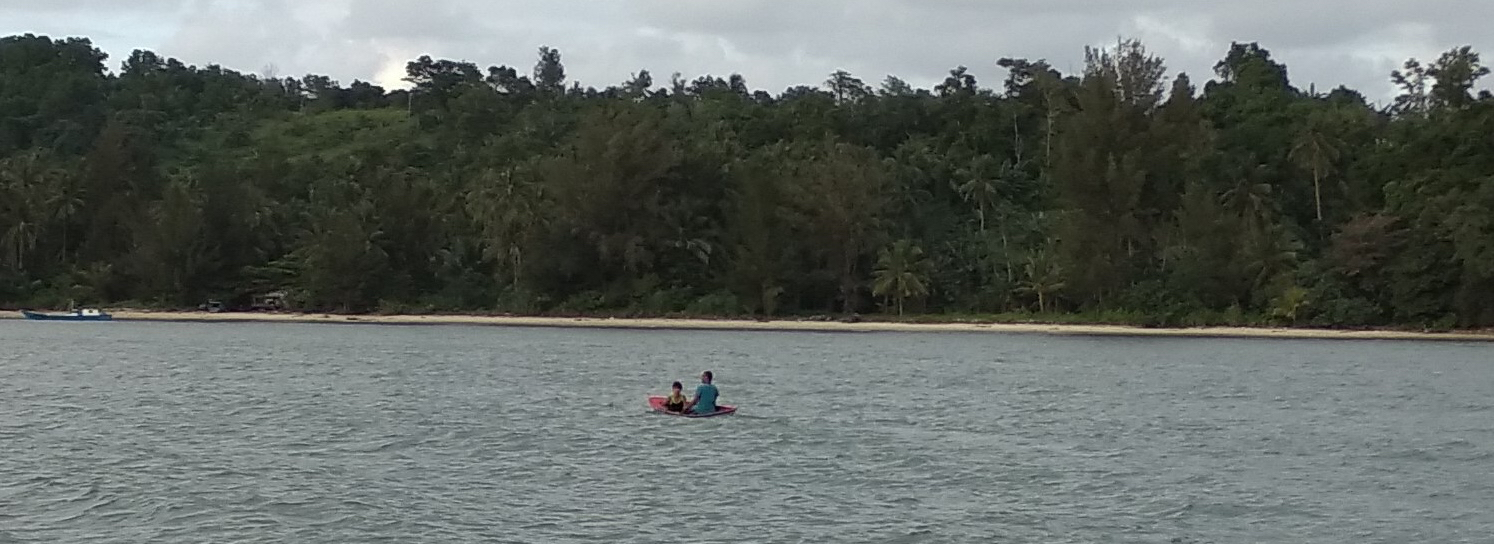
I was up at 6:00 the next morning and after a quick coffee, the anchor was up and we were away. It’s a good 8 hours to the next stop at Sambalong.
On route to Sambalong I was able to get the mainsail and headsail up, we were reaching along nicely in the morning breeze, which was now more westerly, WNW making it a reach, in sailing terms, this is quite a fast point of sail, and we were bombing along for a while. I decided to setup the wind steering and get more familiar with it. I made a little vid to show how it works.
By about 11 AM the wind had dropped right off as expected, and I had to motor sail the rest of the way, at one point I could see a trawler was crossing my path, he was travelling across my bow from starboard to port, showing me his red light (meaning he had right of way, also trawlers trump sailing boats regardless). It looked as if he would be way past me by the time I got close, but as I closed on him, he had slowed down, and we were now on a collision course, we were still a mile apart, so I increased my speed a lot to pass his bow, but it seems he sped up too, because the gains I made were lost and we were back on a collision course. This has happened before, so this time I just carried on until I was quite close to him, and could see that he did intend to carry on regardless and run me over, then I killed my speed, let him pass in front, turned to starboard and followed his wake along until I was sure I was past his trawl then resumed my journey. Just after the encounter, he turned to port, which confirmed my suspicions that he was heading for me. My track is the wiggly line below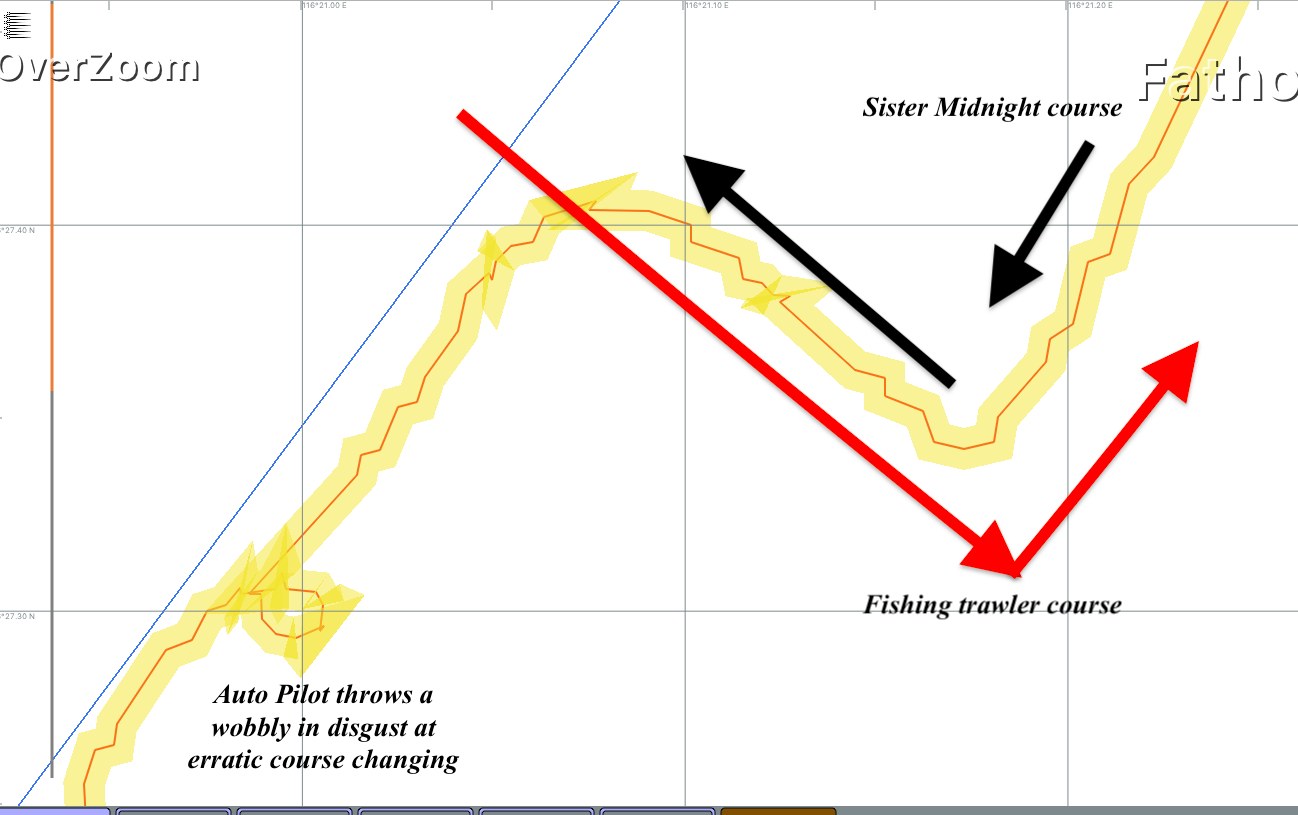
I mention this because I would love to know what was going on. I have two theories, based on the fact all the fishermen I have met have been friendly decent folks, I don’t think he’s trying to kill me! Theory 1 is that they have been at sea for a good while and seen nothing but sea and sky, and get so bored that when they see a fancy American yacht, something pretty rare out here, they make a bee line, to break the boredom and out of genuine curiosity. Theory 2 is that they have had a bad time fishing, no catches and the most obvious reason is they have an evil demon onboard. I have heard this is quite a common belief, now the best way to get rid of the demon, apparently, is to steer very close to another ship and turn away at the last moment, just as the demon jumps from your ship to the other. If this is the case, I must have a shed load of demons somewhere on board. Maybe I didn’t fall off the boat but was pushed in Kudat!
So after this encounter it was just a few more hours to Sambalong where I anchored just behind a bit of headland that was sticking out protecting me from the strong NW swell that was out there, however as I type this it appears the swell has moved around to the west and the rolling is on the rise, the boat is getting quite noisy now, if I wasn’t so tired, I might not sleep in all this rock and roll. I may go to KK tomorrow and check into Sutera harbour, just so I can get a good night’s sleep. Below the sunset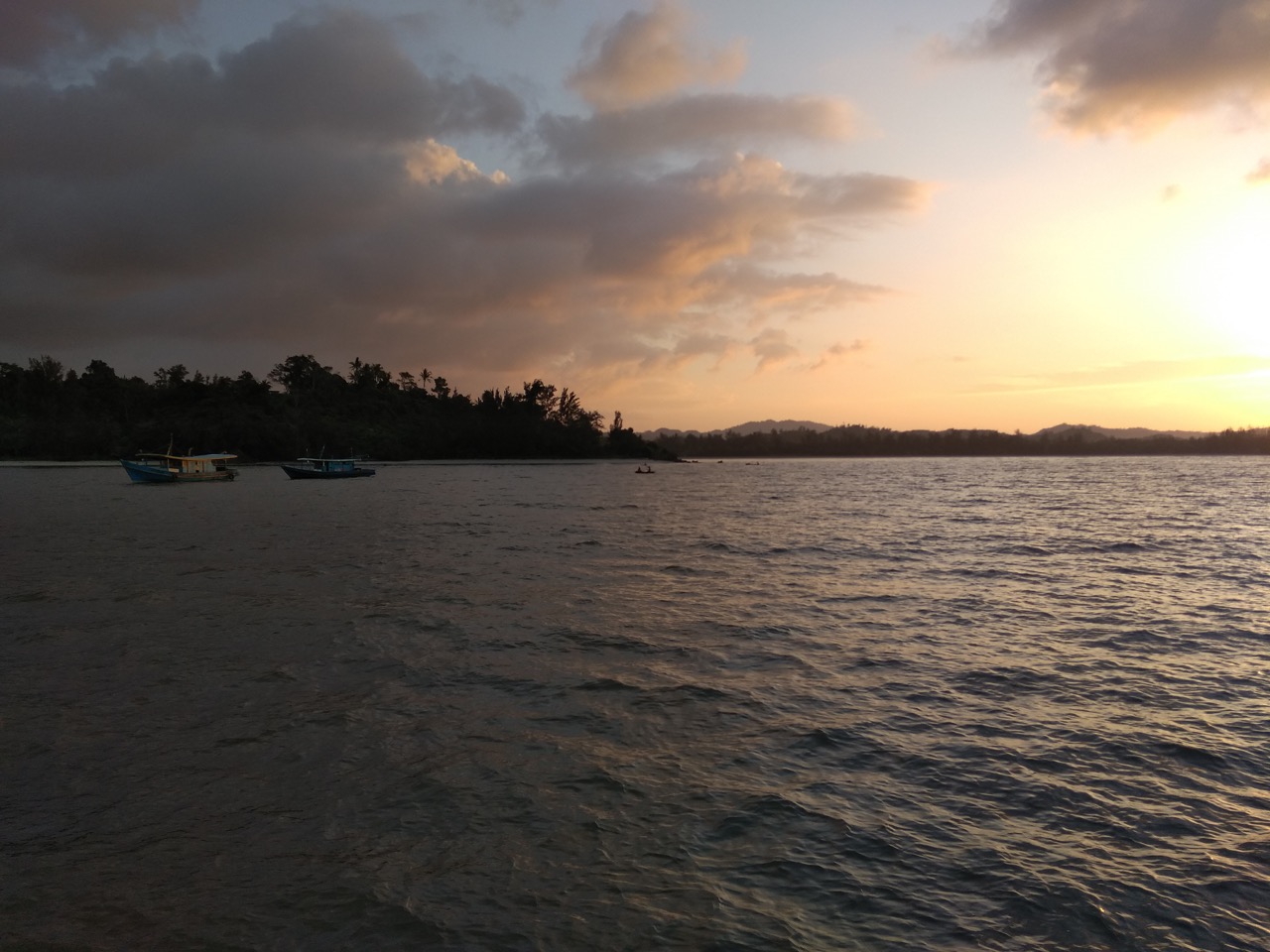
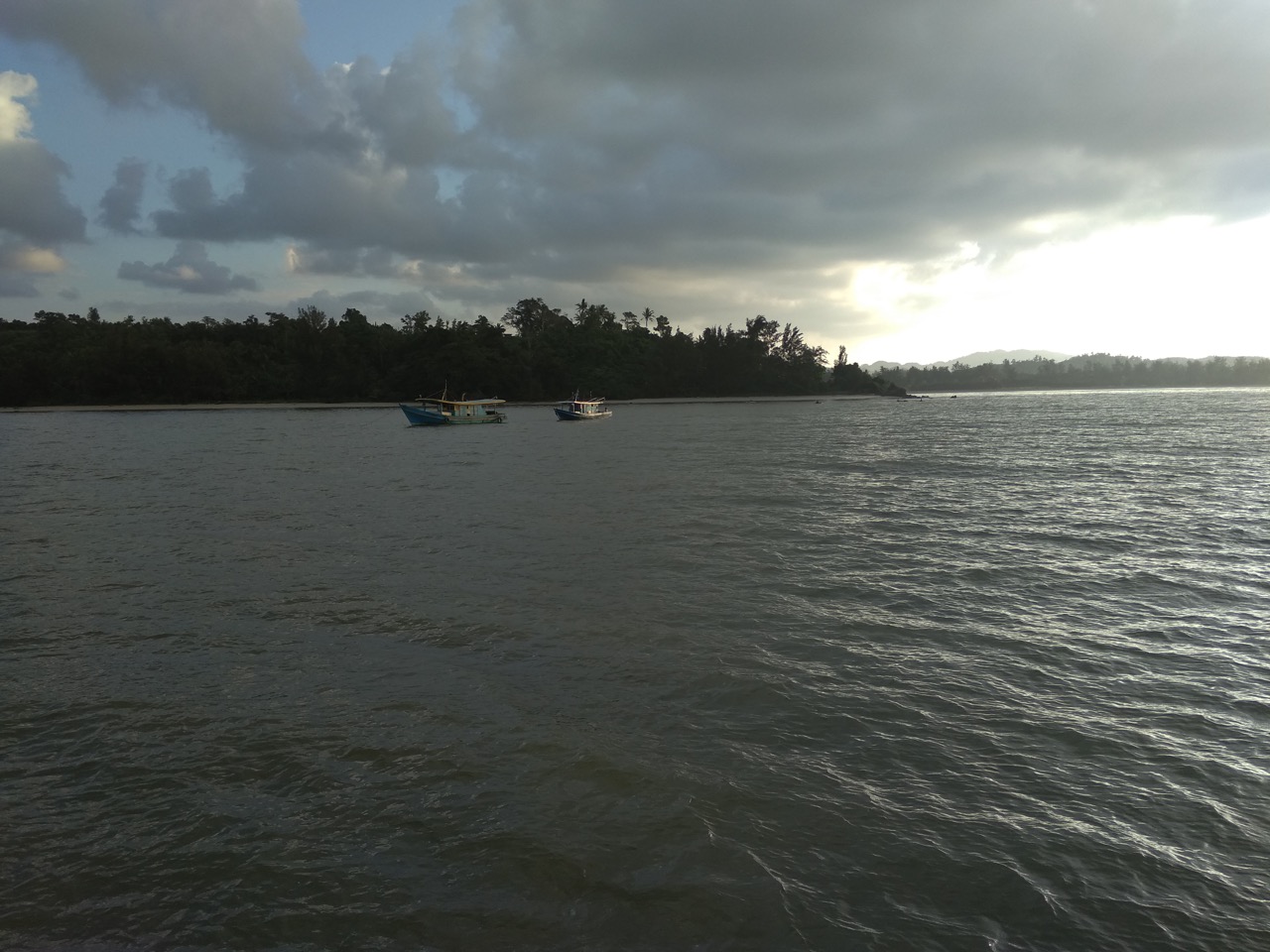 At this point I lose my internet connection, so I’m finishing this off from Sutera harbour.
At this point I lose my internet connection, so I’m finishing this off from Sutera harbour.
Saturday morning, 7am, and I’m up, I had a quite broken nights sleep, the boat kept swinging to be beam onto the sea, that means the waves hit the side of the boat causing it to roll a lot, and kick me out of my bunk.
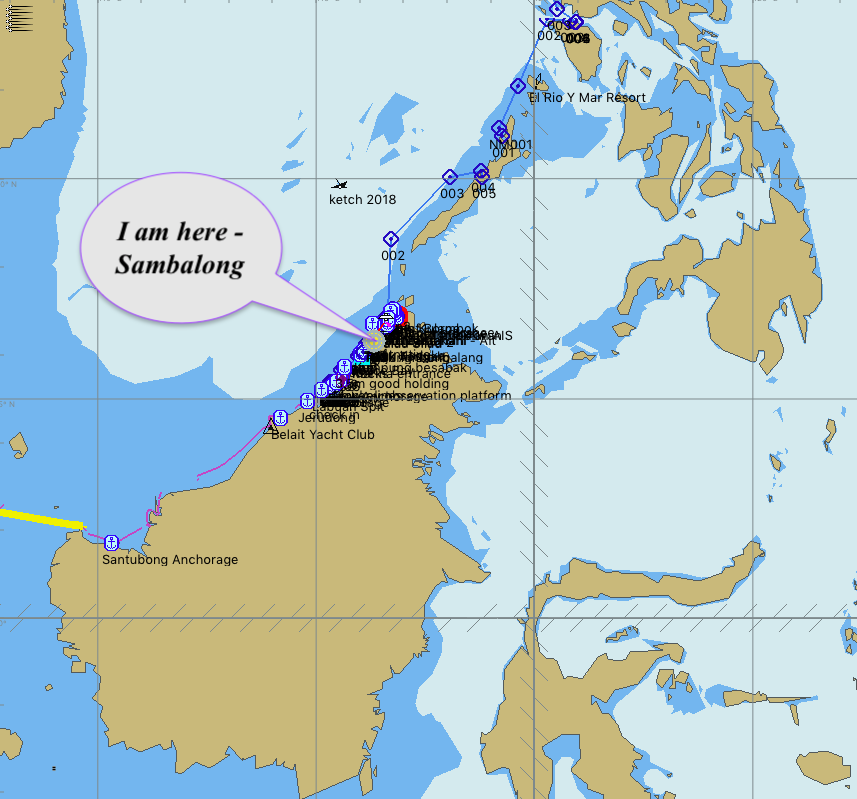 The north side of the bay looked lovely in the morning sunrise light
The north side of the bay looked lovely in the morning sunrise light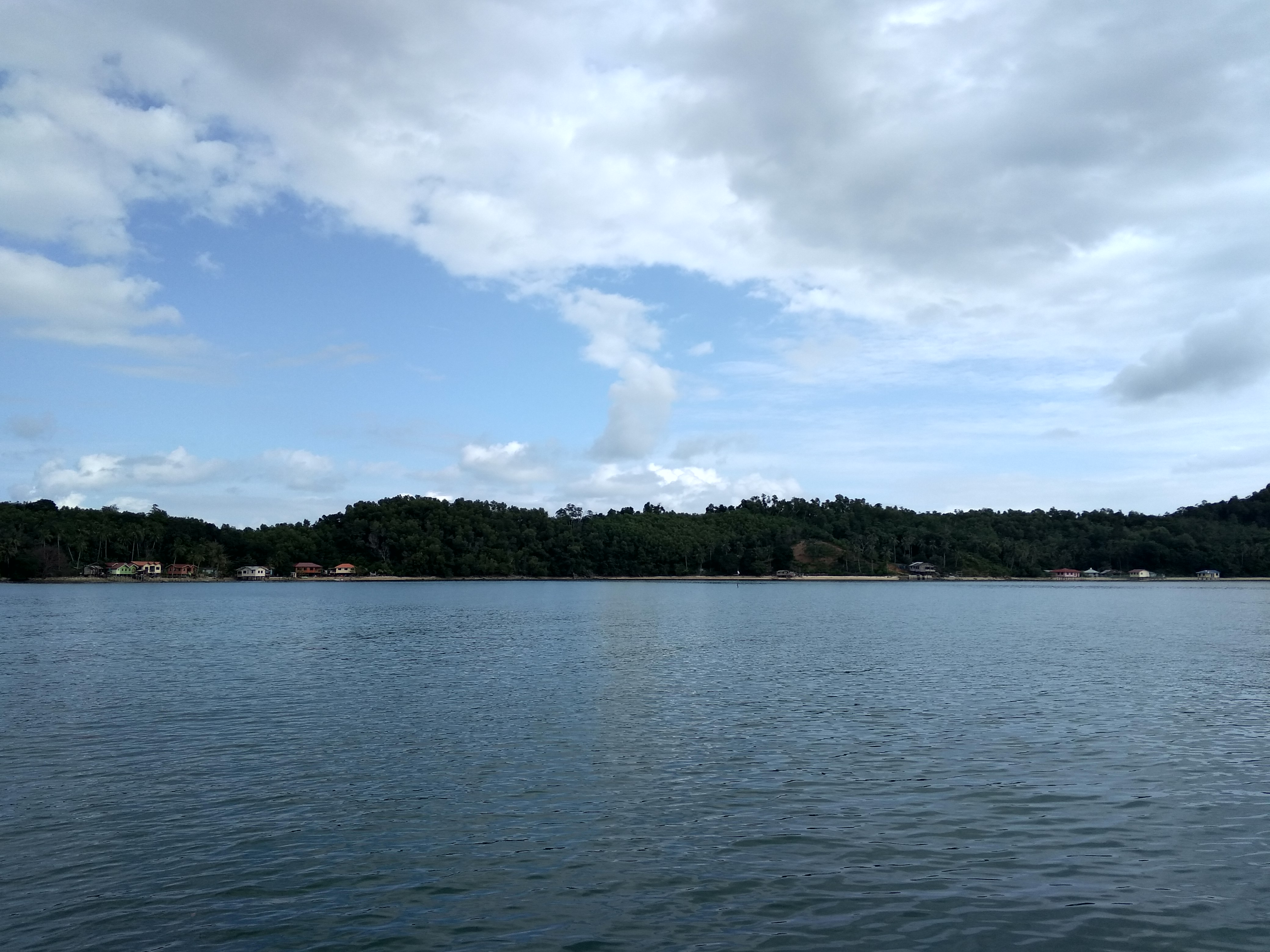 Now below you can see my course to leave the bay, The Khaki is the land, and the green is underwater mud/sand which is less than 0.5 mtrs deep.
Now below you can see my course to leave the bay, The Khaki is the land, and the green is underwater mud/sand which is less than 0.5 mtrs deep. 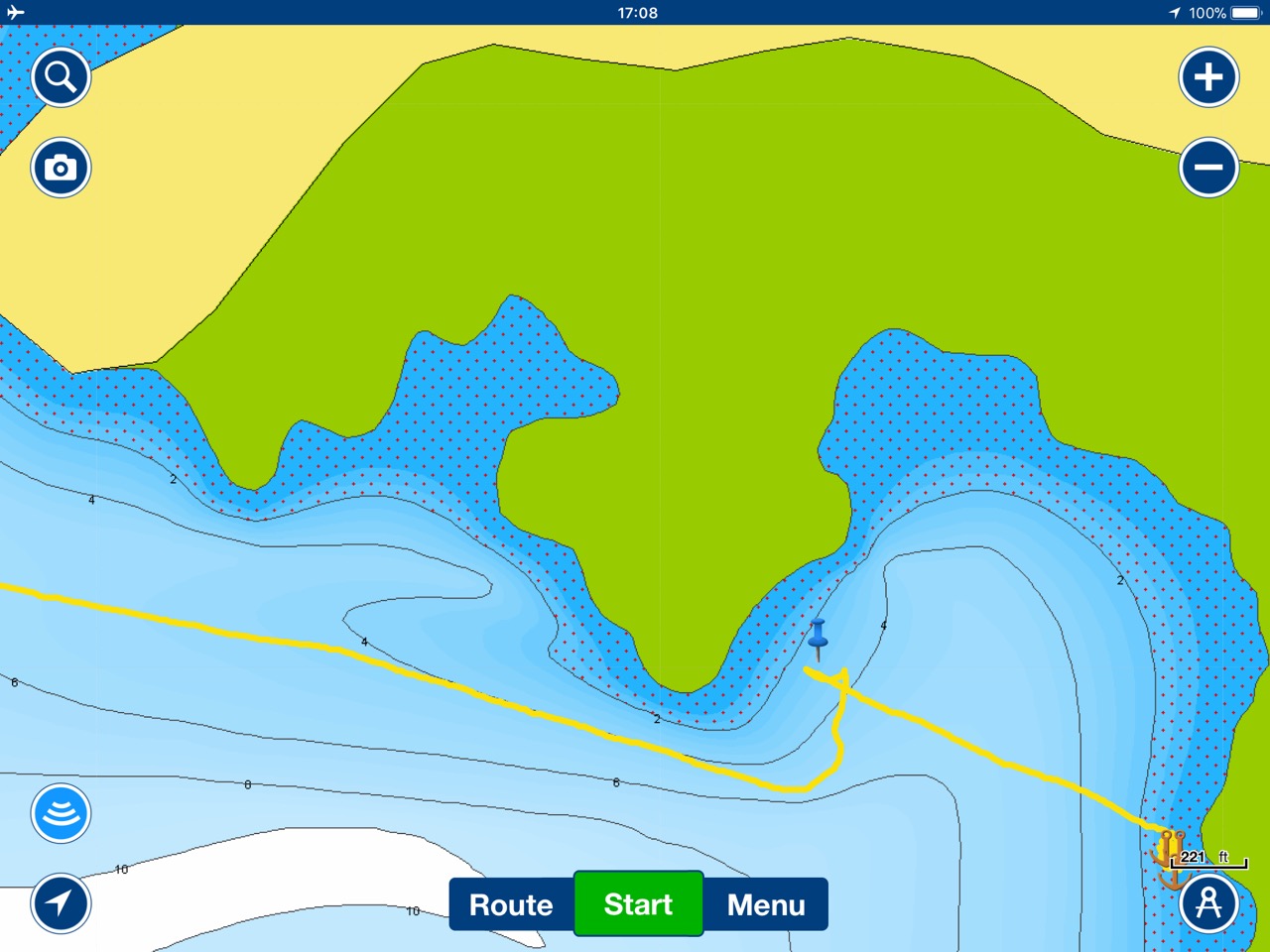 I left the anchorage on the bottom right and set the autohelm to slowly take me out, using my eye to work out the course, as you can see it wasnt a good idea, I was going very slow, about 1 knot, so I could secure the anchor to the boat, while doing this I looked over the side to see the bottom of the sea was quite close, it looked to be about 2-3 foot, but it’s usually deeper, is that parallax, or some other effect, either way we were going to go aground for sure, and before I had time to react the boat made a small gravelly sound and stopped. Bugger, not again, a quick sprint to the wheel, a blast in reverse and we motored back without any effort, yet the wheel wouldn’t turn, it seemed jammed, I’m thinking has the grounding damaged it, could the rudder be in mud still somehow, what to do. Then I remembered, the computer was steering, so quickly turning the autopilot off, and we were away. You really wouldn’t know there was a shallow there without the navionics chart, which is nearly always wrong on these matters anyway. My Cmap chart has the water as being 8 mtrs deep there. Attention to detail is required, or even just attention would help!
I left the anchorage on the bottom right and set the autohelm to slowly take me out, using my eye to work out the course, as you can see it wasnt a good idea, I was going very slow, about 1 knot, so I could secure the anchor to the boat, while doing this I looked over the side to see the bottom of the sea was quite close, it looked to be about 2-3 foot, but it’s usually deeper, is that parallax, or some other effect, either way we were going to go aground for sure, and before I had time to react the boat made a small gravelly sound and stopped. Bugger, not again, a quick sprint to the wheel, a blast in reverse and we motored back without any effort, yet the wheel wouldn’t turn, it seemed jammed, I’m thinking has the grounding damaged it, could the rudder be in mud still somehow, what to do. Then I remembered, the computer was steering, so quickly turning the autopilot off, and we were away. You really wouldn’t know there was a shallow there without the navionics chart, which is nearly always wrong on these matters anyway. My Cmap chart has the water as being 8 mtrs deep there. Attention to detail is required, or even just attention would help!
So onto the 6 hour trip back to Sutera harbour so I can get a good night’s sleep, and buy some lettuce and sugar free bread. Very hot, no wind and a still rolly sea. A totally uneventful trip, but good 4g data all the way allowed me to catch up on emails and make some decent scrabble moves. Arrival at Sutera harbour was a doddle, I didn’t hit anything or fall off the boat/pontoon. Perhaps I’m getting better slowly.
Finally, I try to keep the blog just about boating, but I had to put this picture on, if you haven’t seen the video of these two rockets landing you must, I was so excited, it was the most awesome thing I have seen in a very long time, this was human endeavor and science working together brilliantly. Well done everyone at spaceX, not that I expect you are reading my blog, and if you are, get back to work, you still screwed up on the third rocket return.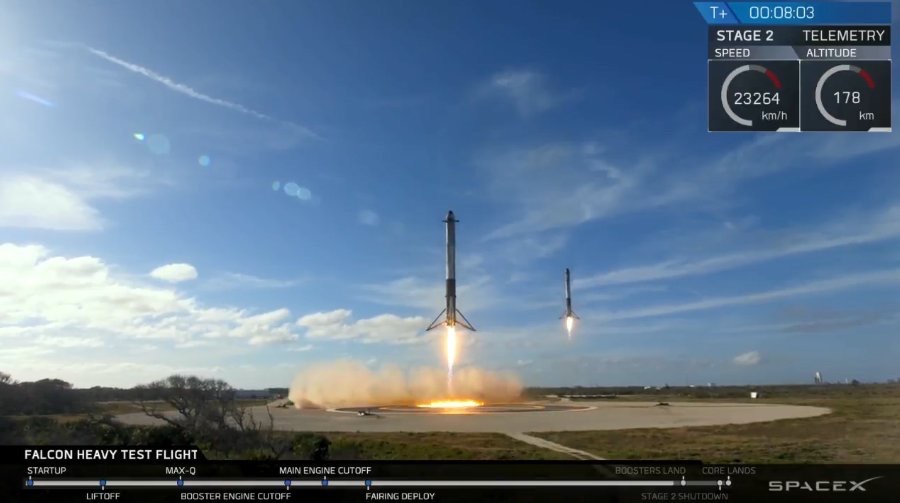
Paul Collister
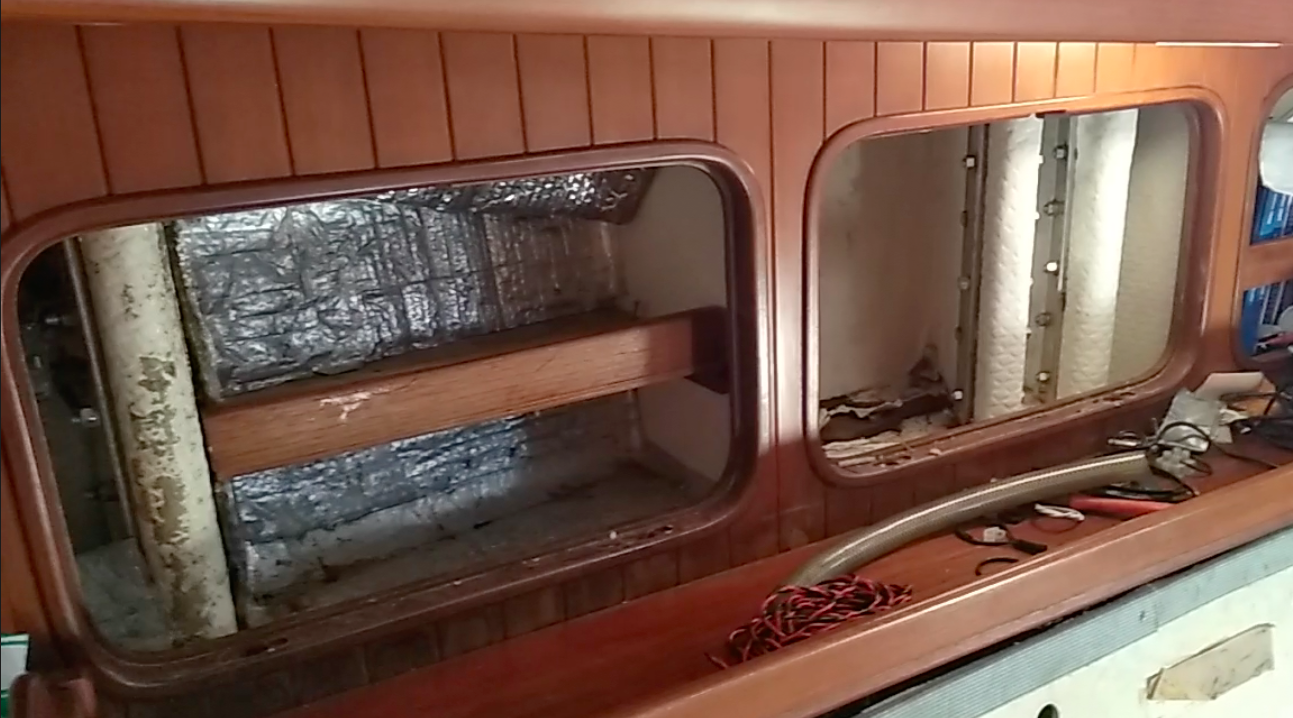
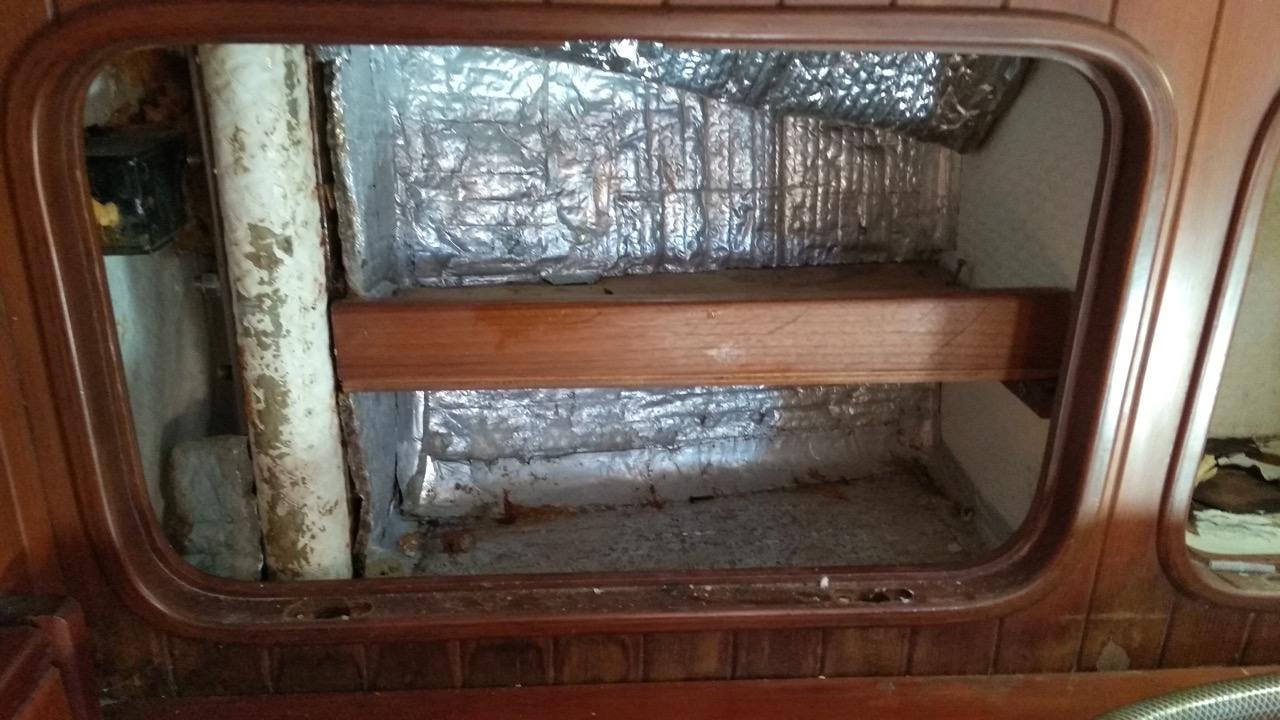
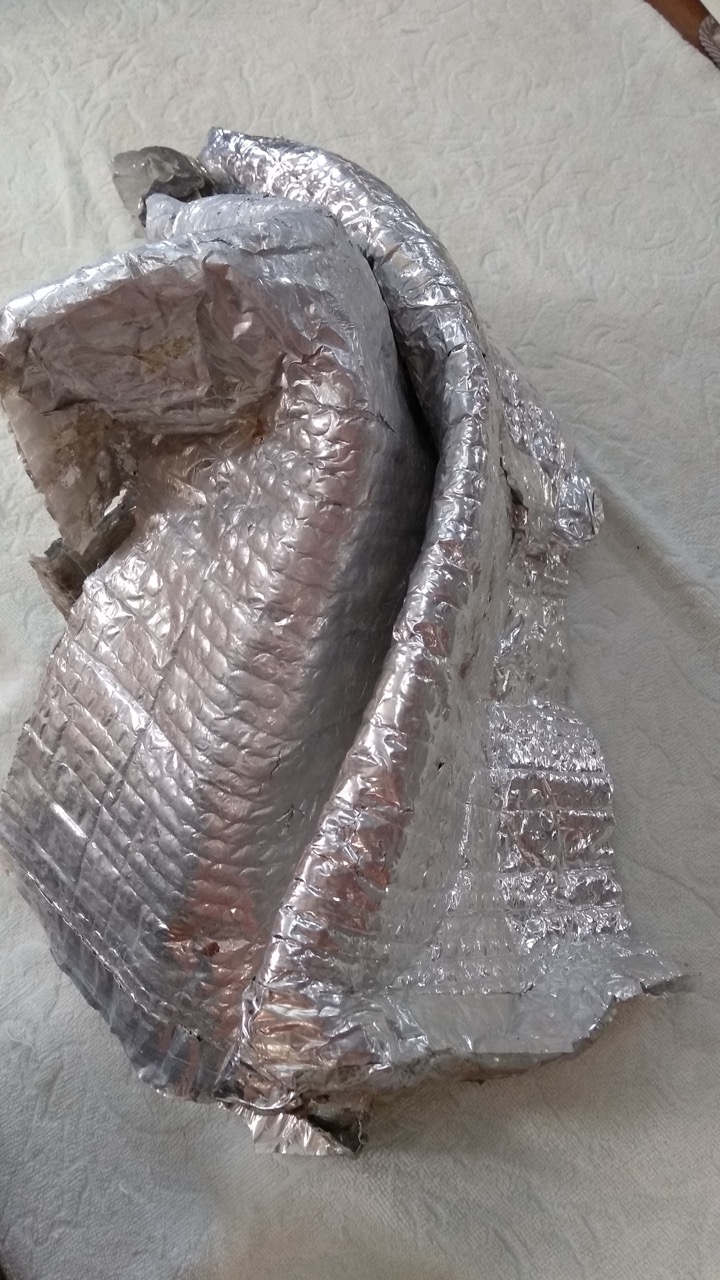
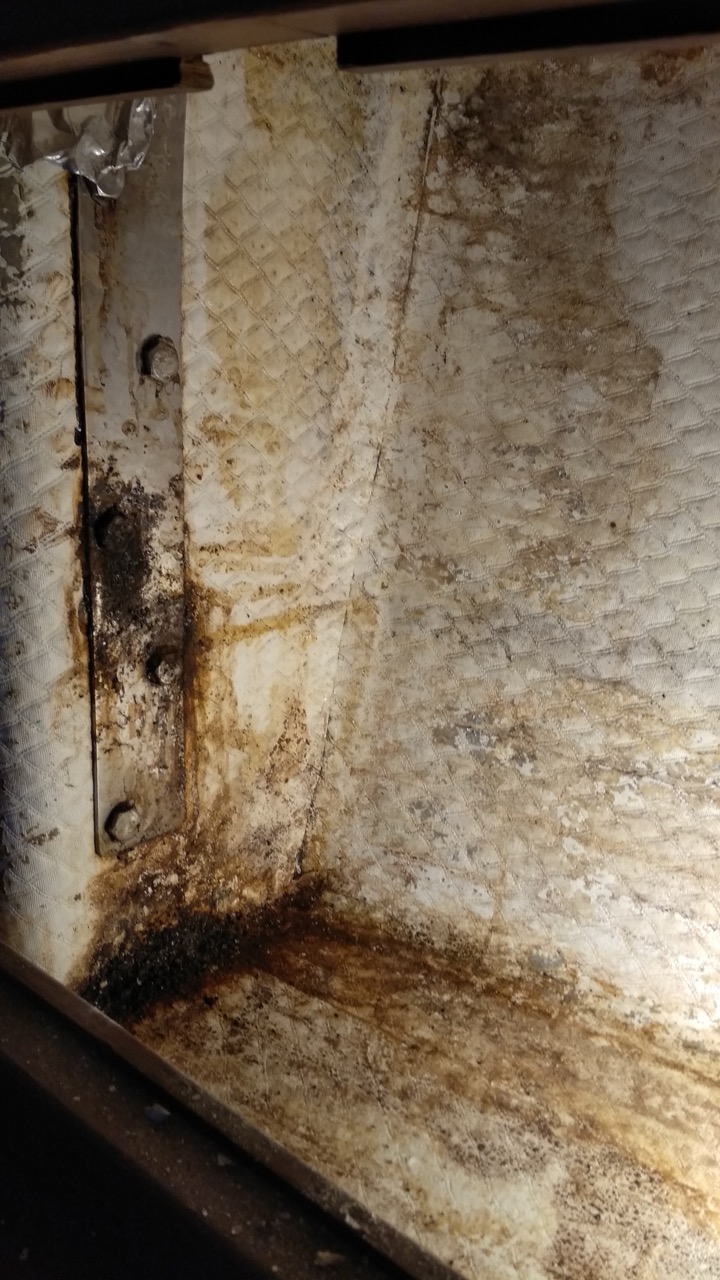
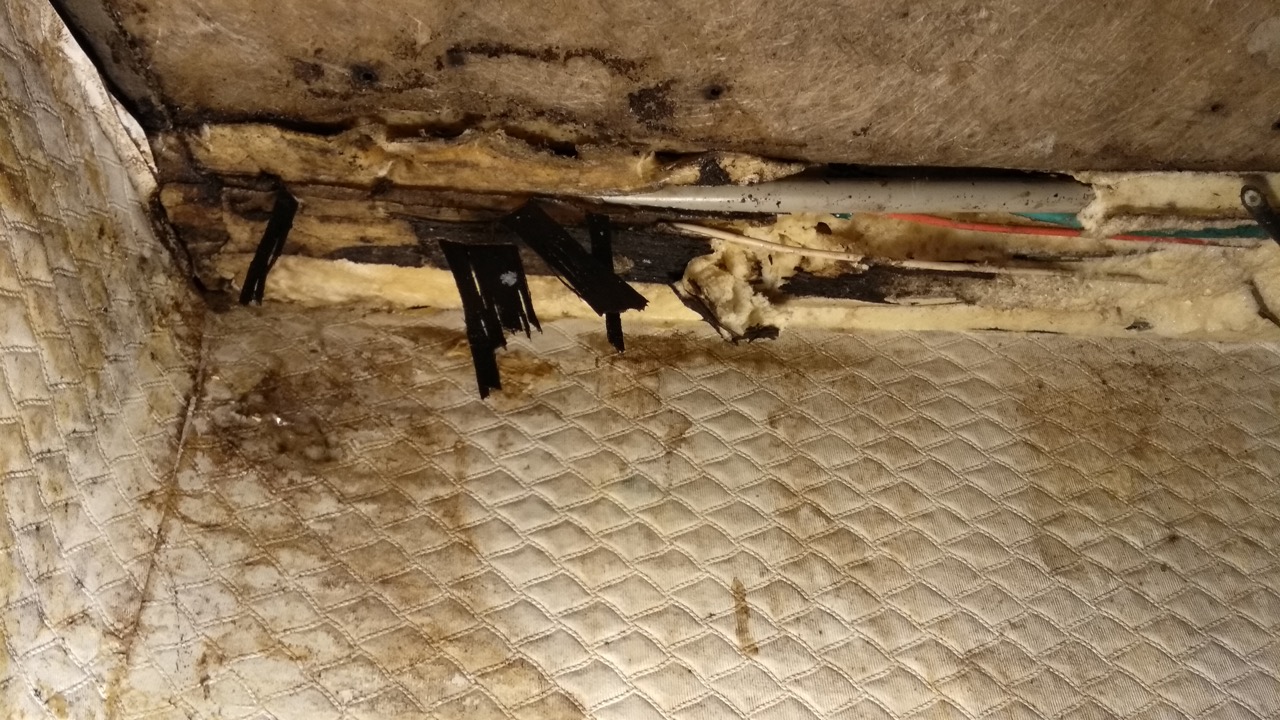
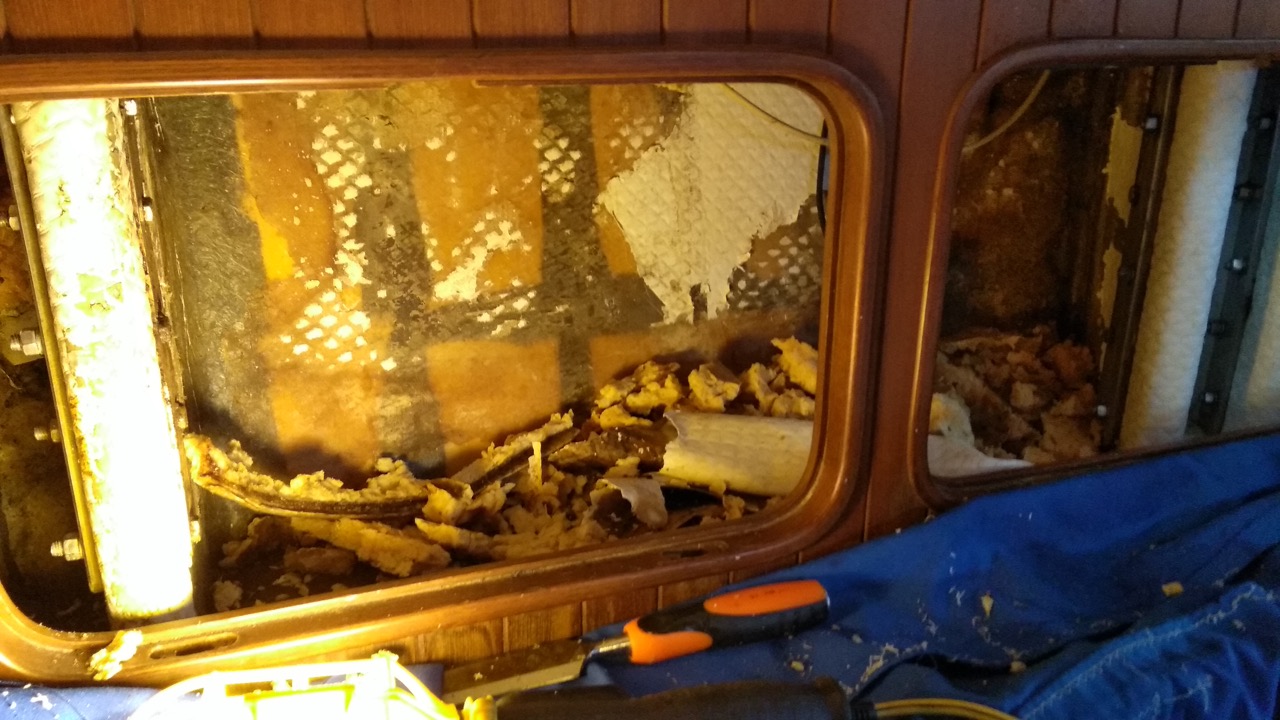
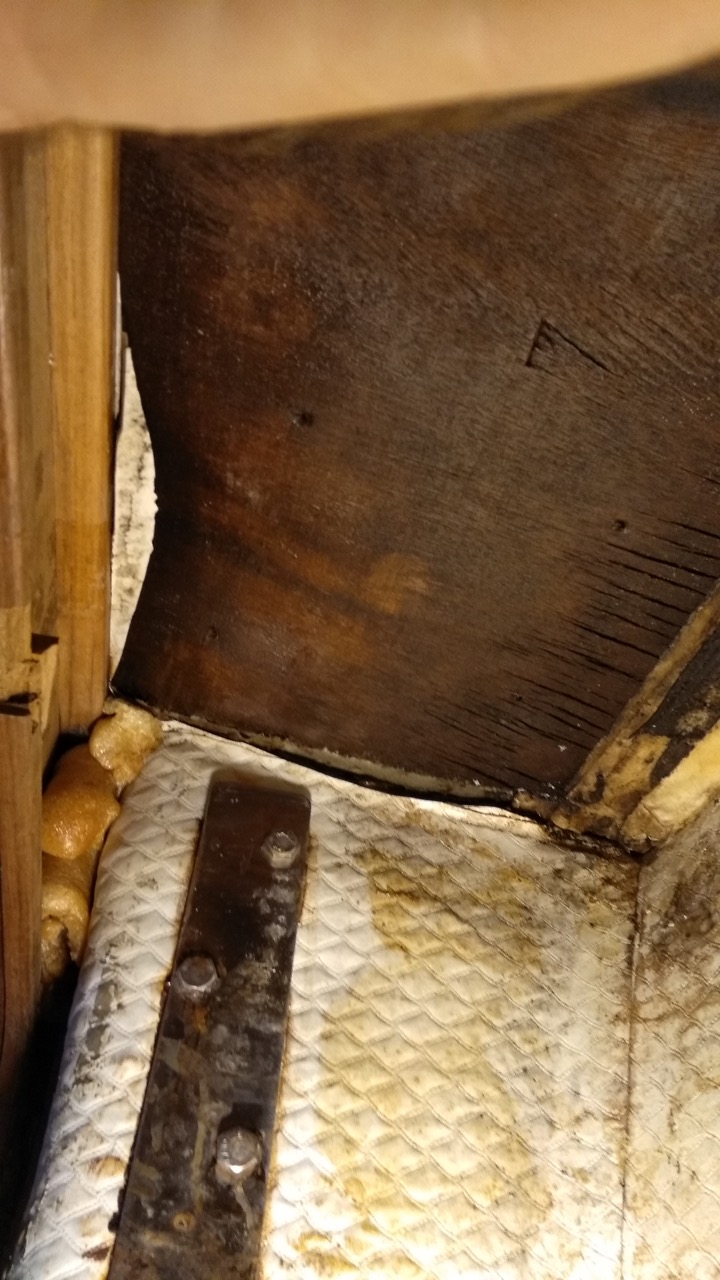 Eventually all the foil, foam, lining and rotted wood was removed. The the sealant was replaced. Before I did this I ran a hosepipe over the area and could clearly see the water coming in on each of the 4 chain plates, before I couldn’t see this as it was trapped in the foam, but spread around over time.
Eventually all the foil, foam, lining and rotted wood was removed. The the sealant was replaced. Before I did this I ran a hosepipe over the area and could clearly see the water coming in on each of the 4 chain plates, before I couldn’t see this as it was trapped in the foam, but spread around over time.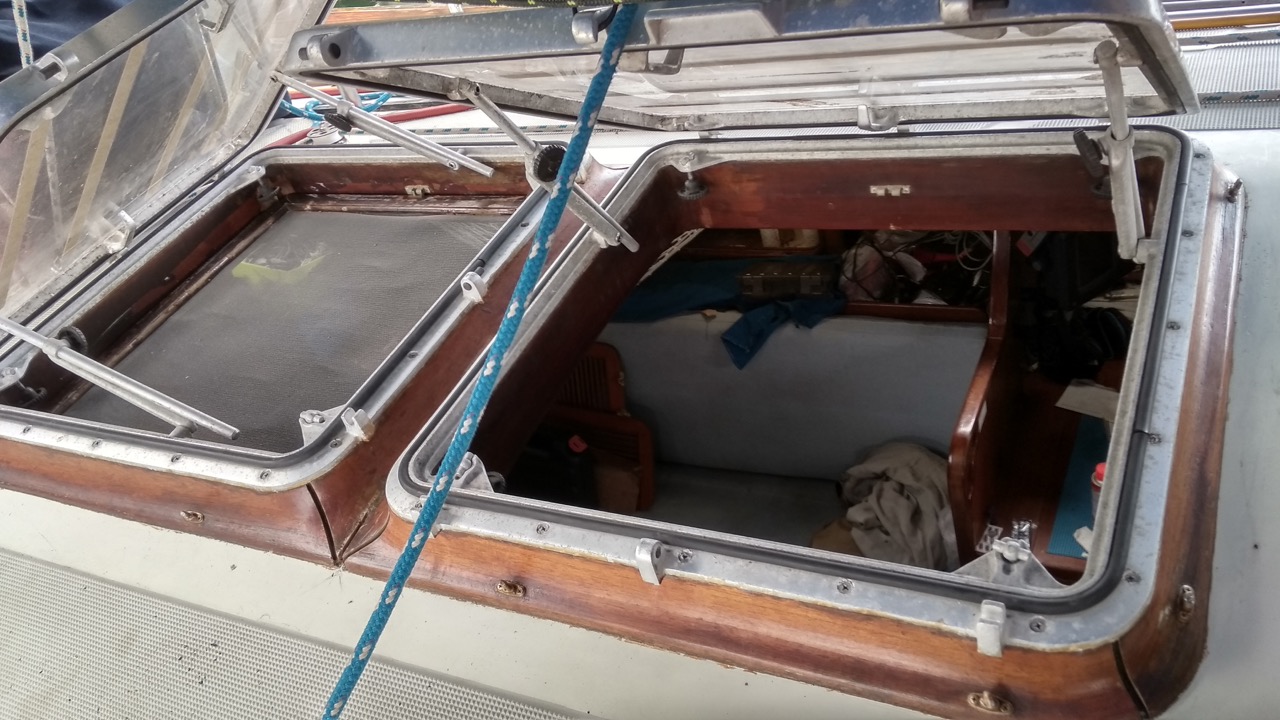 However the teak bases are made of 4 pieces, one on each side, and joined at the corners, and sealed with caulking, this is what I think has failed and is an easy fix. I have a special multimaster machine, made by the German firm Fein, which has a special fitting designed just for this job of cutting out the old caulking. Here you can see the results, and you can also see the gap underneath where the caulking sits that was leaking.
However the teak bases are made of 4 pieces, one on each side, and joined at the corners, and sealed with caulking, this is what I think has failed and is an easy fix. I have a special multimaster machine, made by the German firm Fein, which has a special fitting designed just for this job of cutting out the old caulking. Here you can see the results, and you can also see the gap underneath where the caulking sits that was leaking.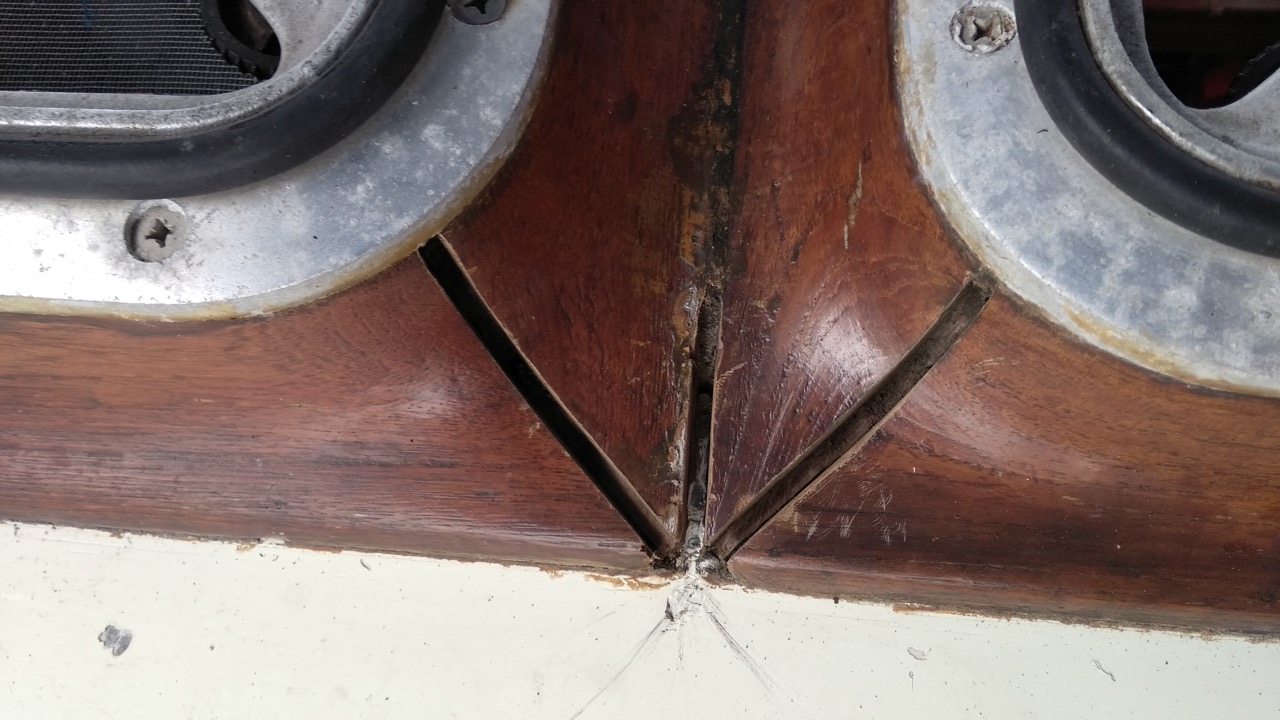
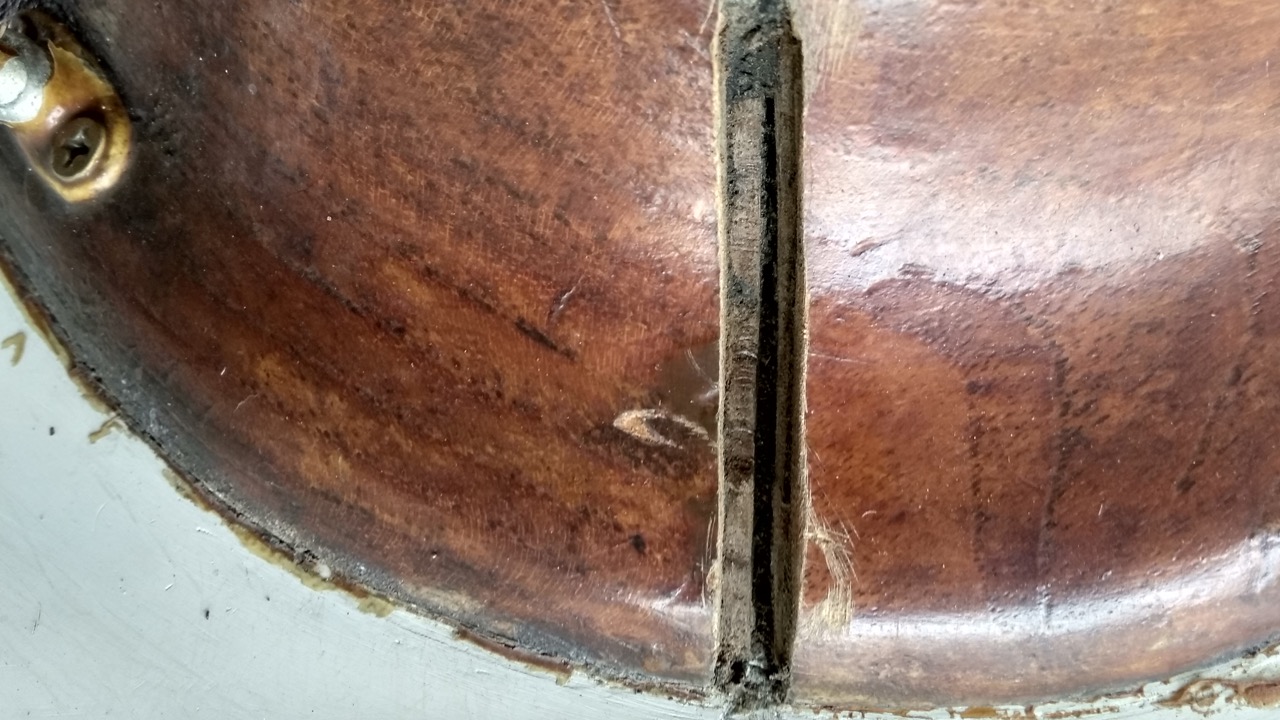
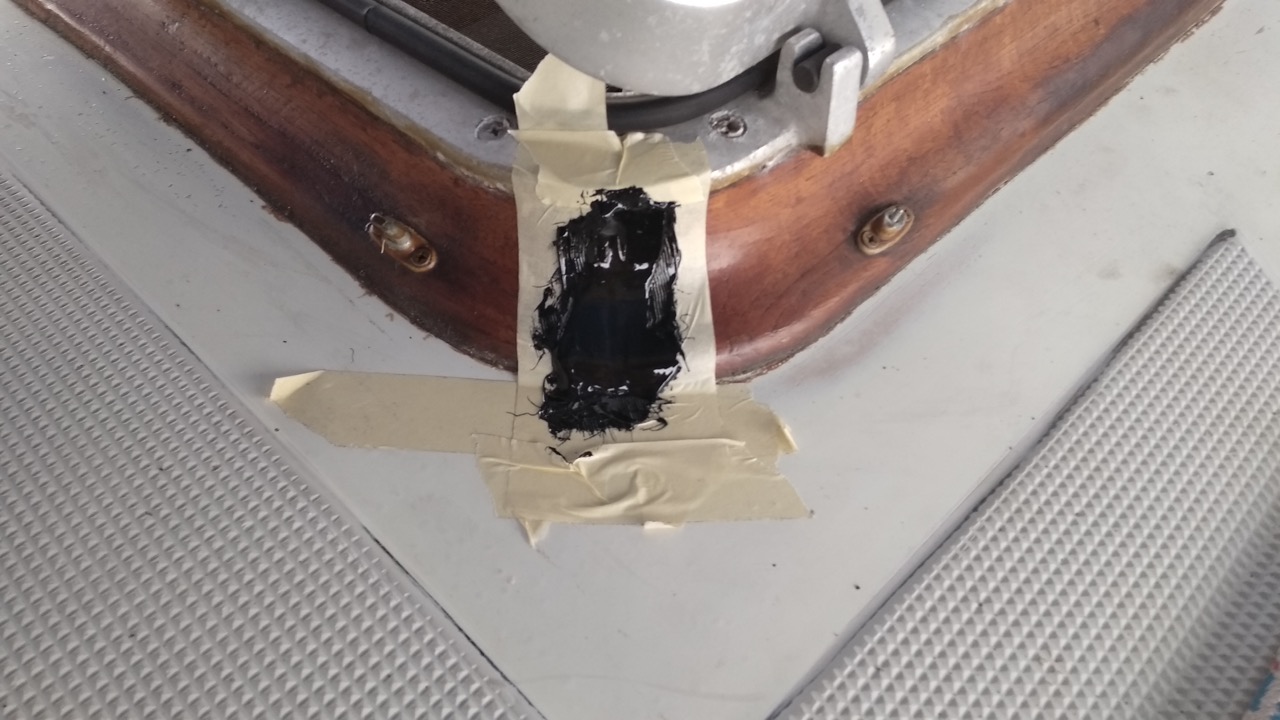
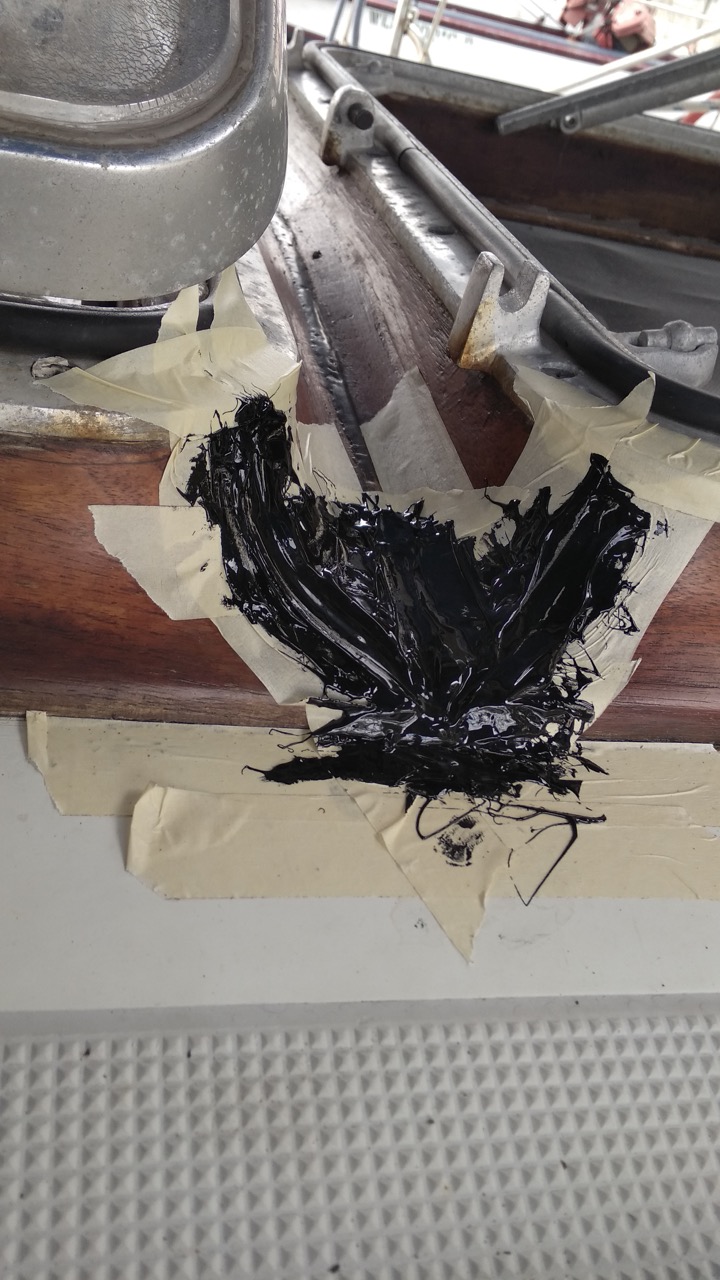 The trick with caulking is to get the stuff on quickly, and then get the masking tape off pretty quickly too, before it develops a skin. I thought I could fill all 10 seams then be back for the first before it skinned, but I was a bit slow, and ended up rushing and getting gunk in the wrong places. However, I can tidy this up once it has set, as I will be sanding down the wood a re-varnishing soon.
The trick with caulking is to get the stuff on quickly, and then get the masking tape off pretty quickly too, before it develops a skin. I thought I could fill all 10 seams then be back for the first before it skinned, but I was a bit slow, and ended up rushing and getting gunk in the wrong places. However, I can tidy this up once it has set, as I will be sanding down the wood a re-varnishing soon.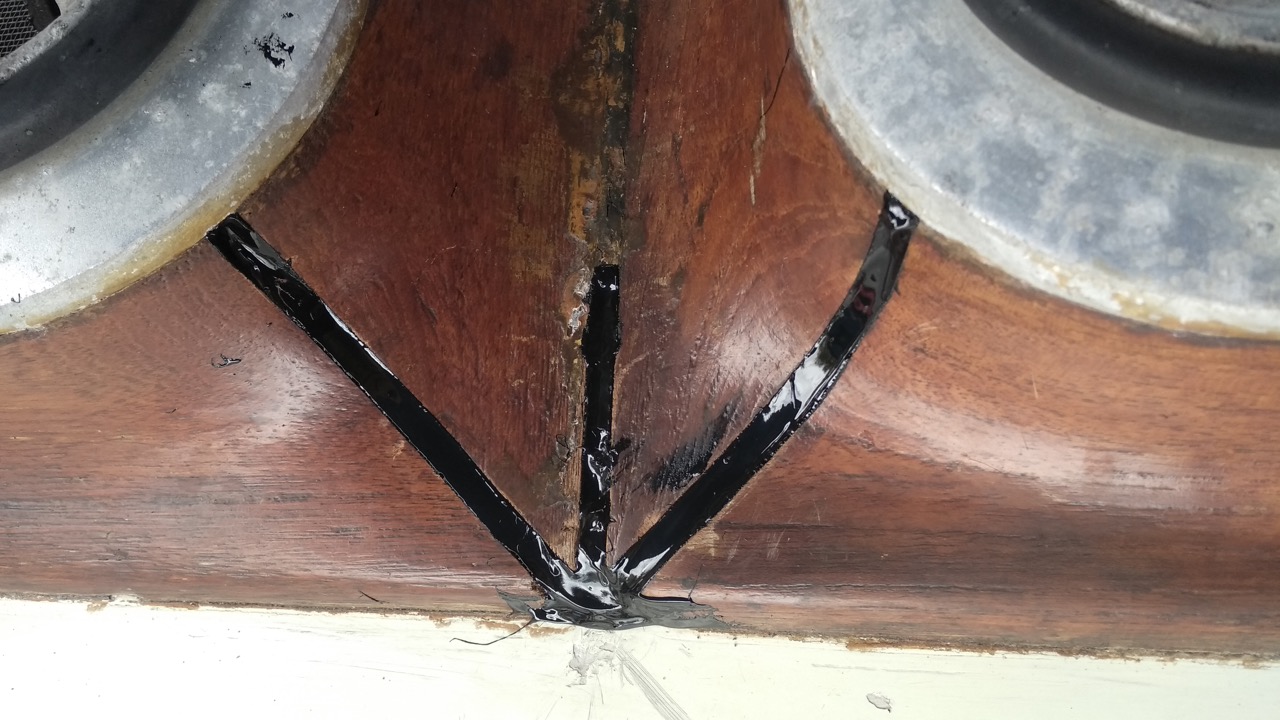
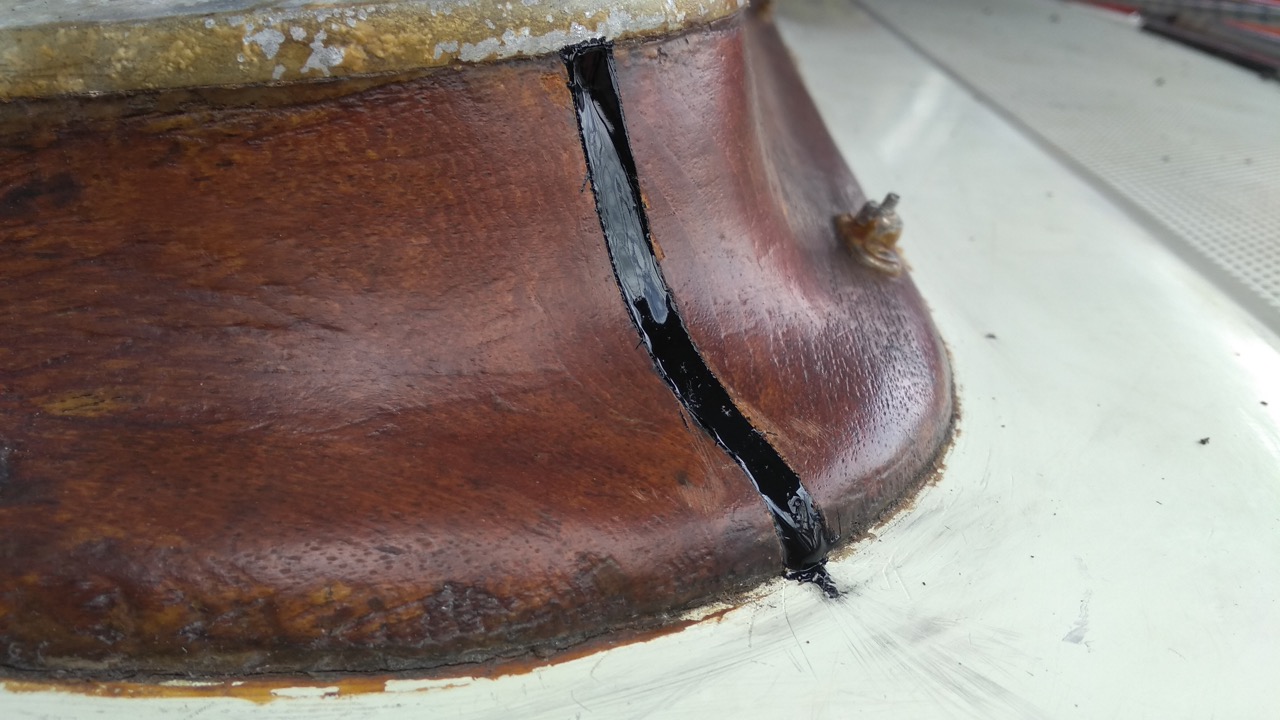

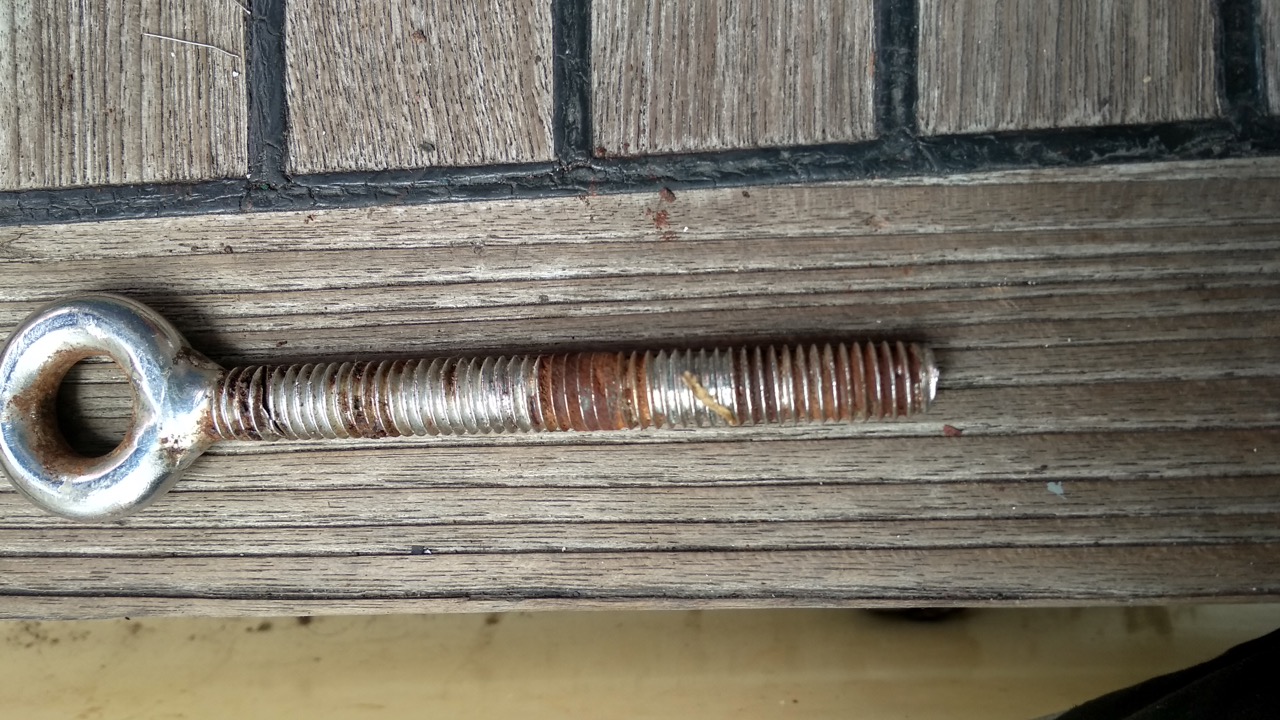
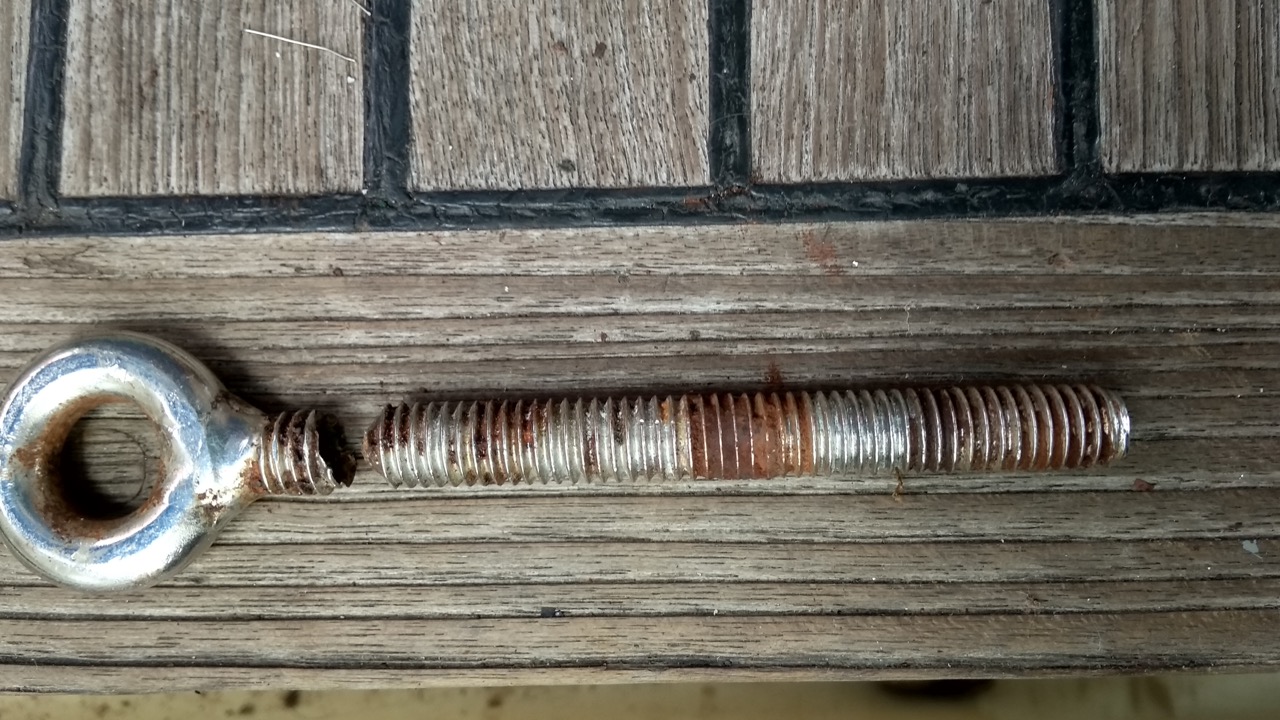 Obviously I had either acquired ‘super powers’ like spiderman, or I had been steering this boat around with the steering ready to fail at any moment because of a condition known as crevice corrosion.
Obviously I had either acquired ‘super powers’ like spiderman, or I had been steering this boat around with the steering ready to fail at any moment because of a condition known as crevice corrosion.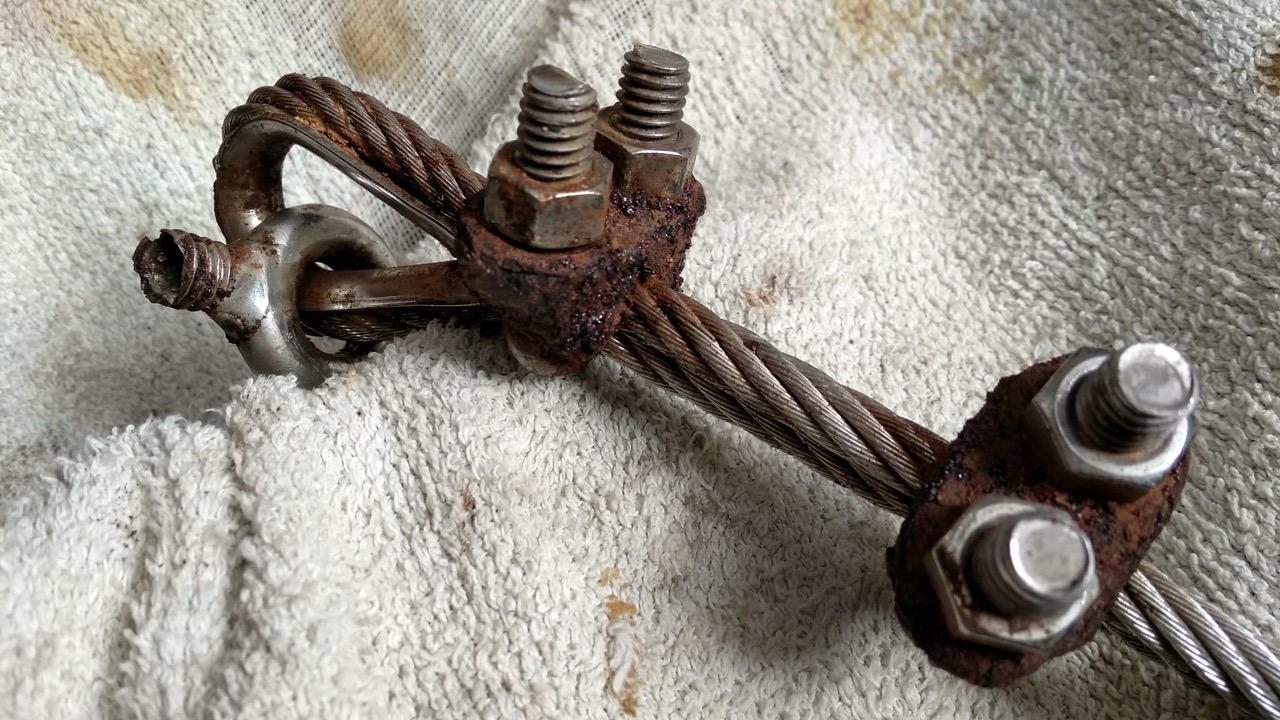
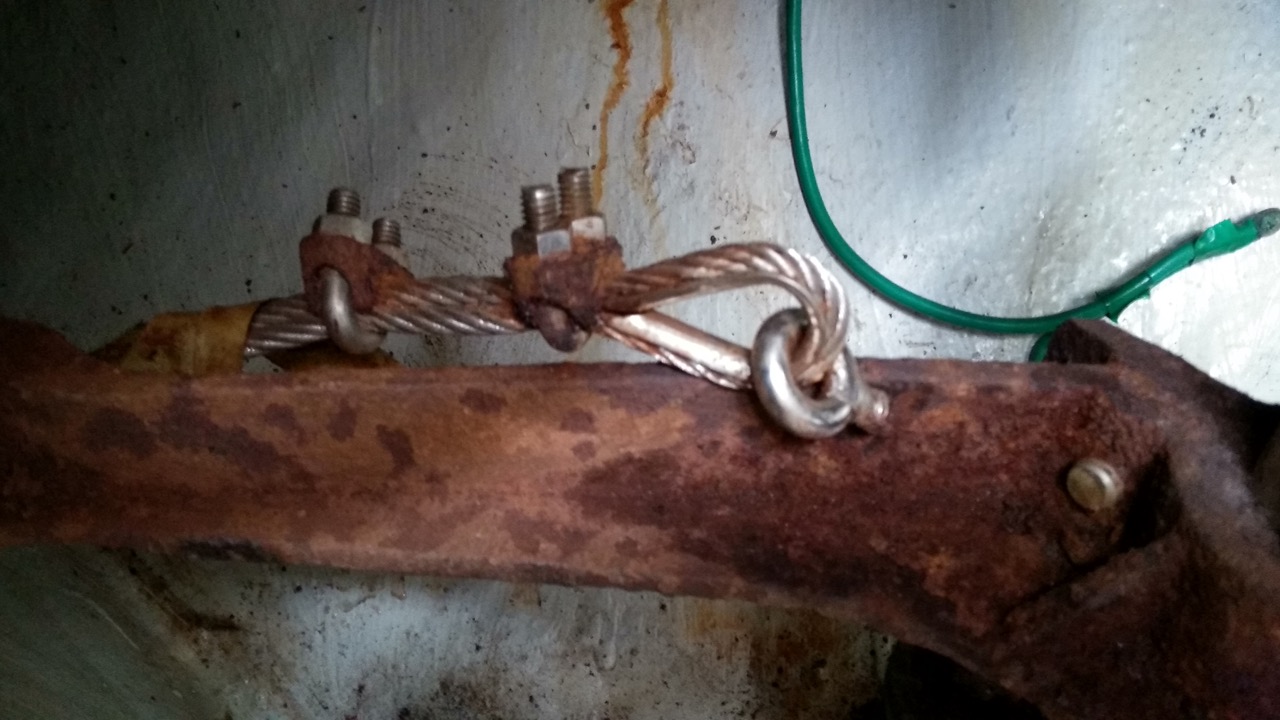
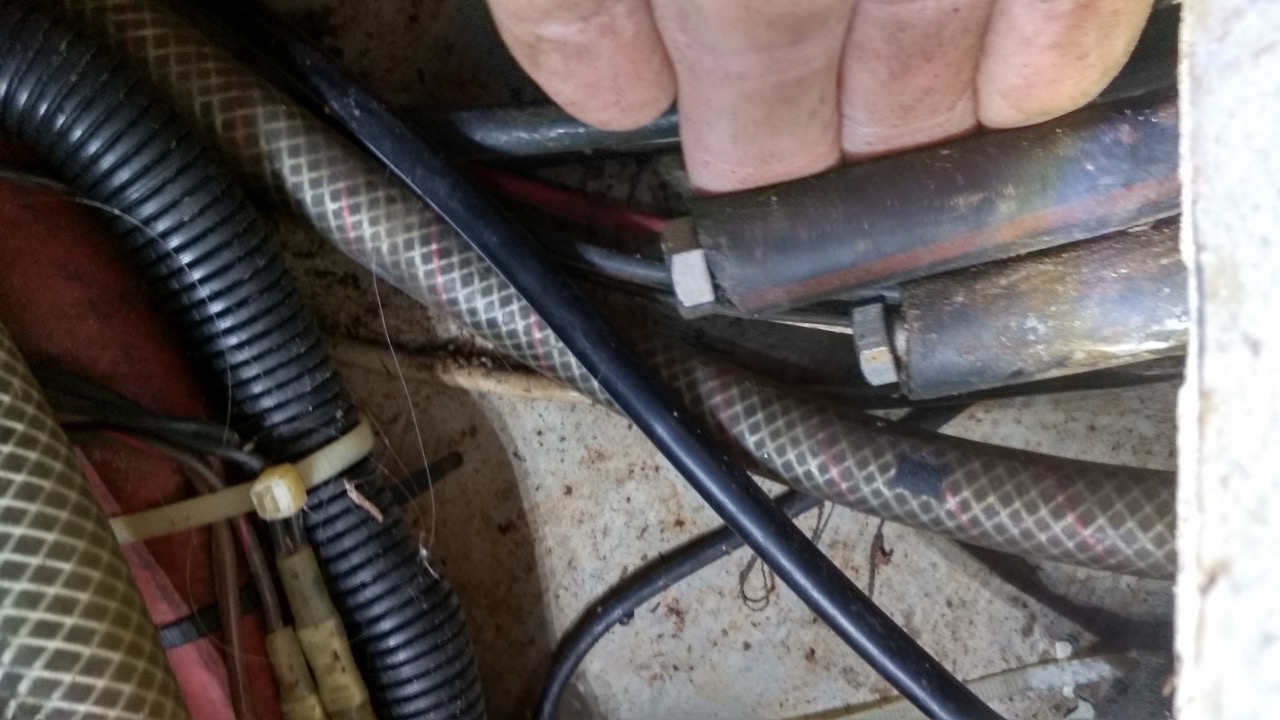 Here they had been terminated with some bolts being screwed into the pipes. I may well resurrect them and use them to create a fuel polishing system. Anyone who thinks I have gone mad to want to polish my fuel needs to do a bit of research, polished fuel is the best!
Here they had been terminated with some bolts being screwed into the pipes. I may well resurrect them and use them to create a fuel polishing system. Anyone who thinks I have gone mad to want to polish my fuel needs to do a bit of research, polished fuel is the best!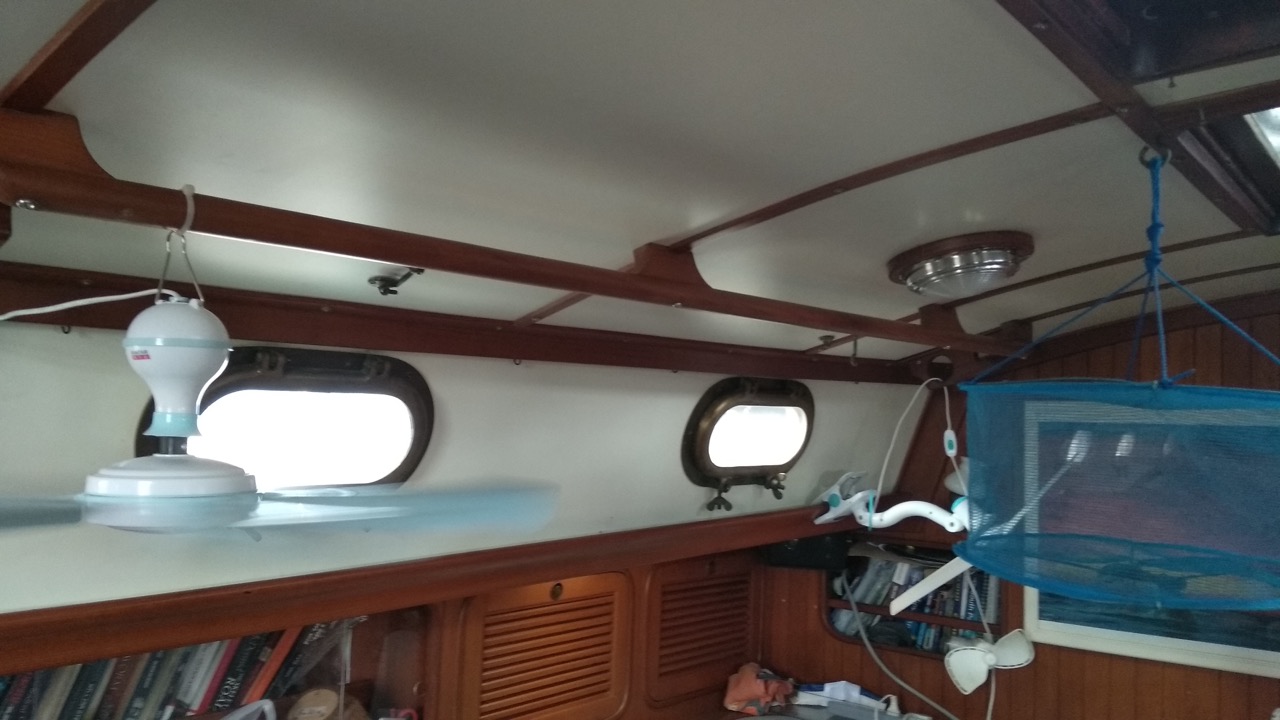
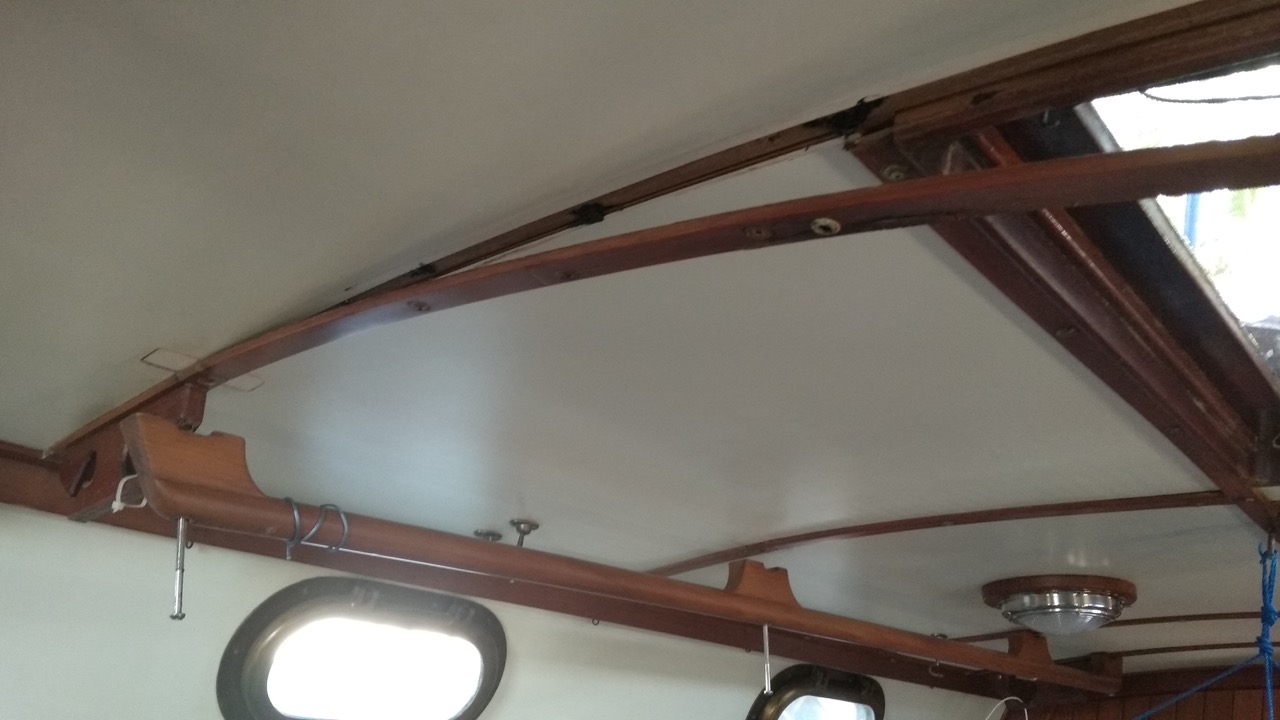
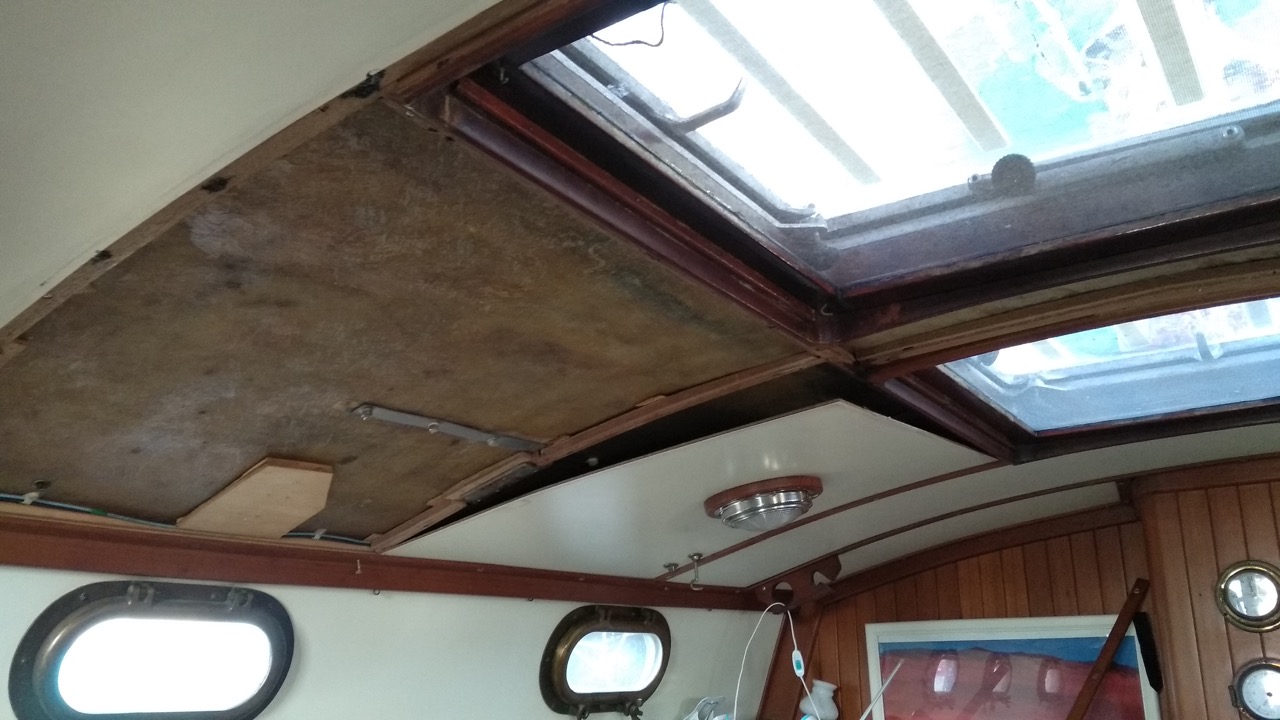 This revealed a very dry area, and no sign of any water, despite the hose above covering the area with lots of water. The water was coming through the wood, directly. Looking above I could see the caulking in the wood had failed, so that’s a relatively trivial job to fix. I hadn’t needed to dismantle the headlining, but it was reassuring to see it all dry inside anyway.
This revealed a very dry area, and no sign of any water, despite the hose above covering the area with lots of water. The water was coming through the wood, directly. Looking above I could see the caulking in the wood had failed, so that’s a relatively trivial job to fix. I hadn’t needed to dismantle the headlining, but it was reassuring to see it all dry inside anyway.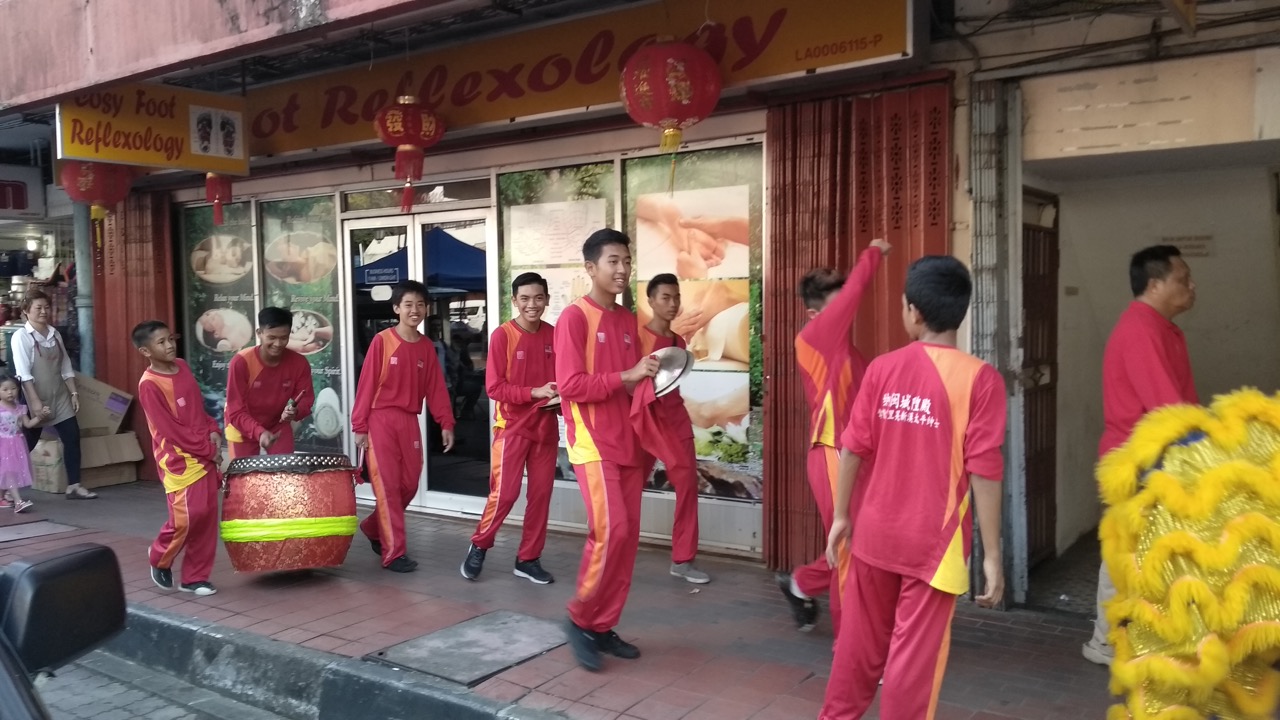
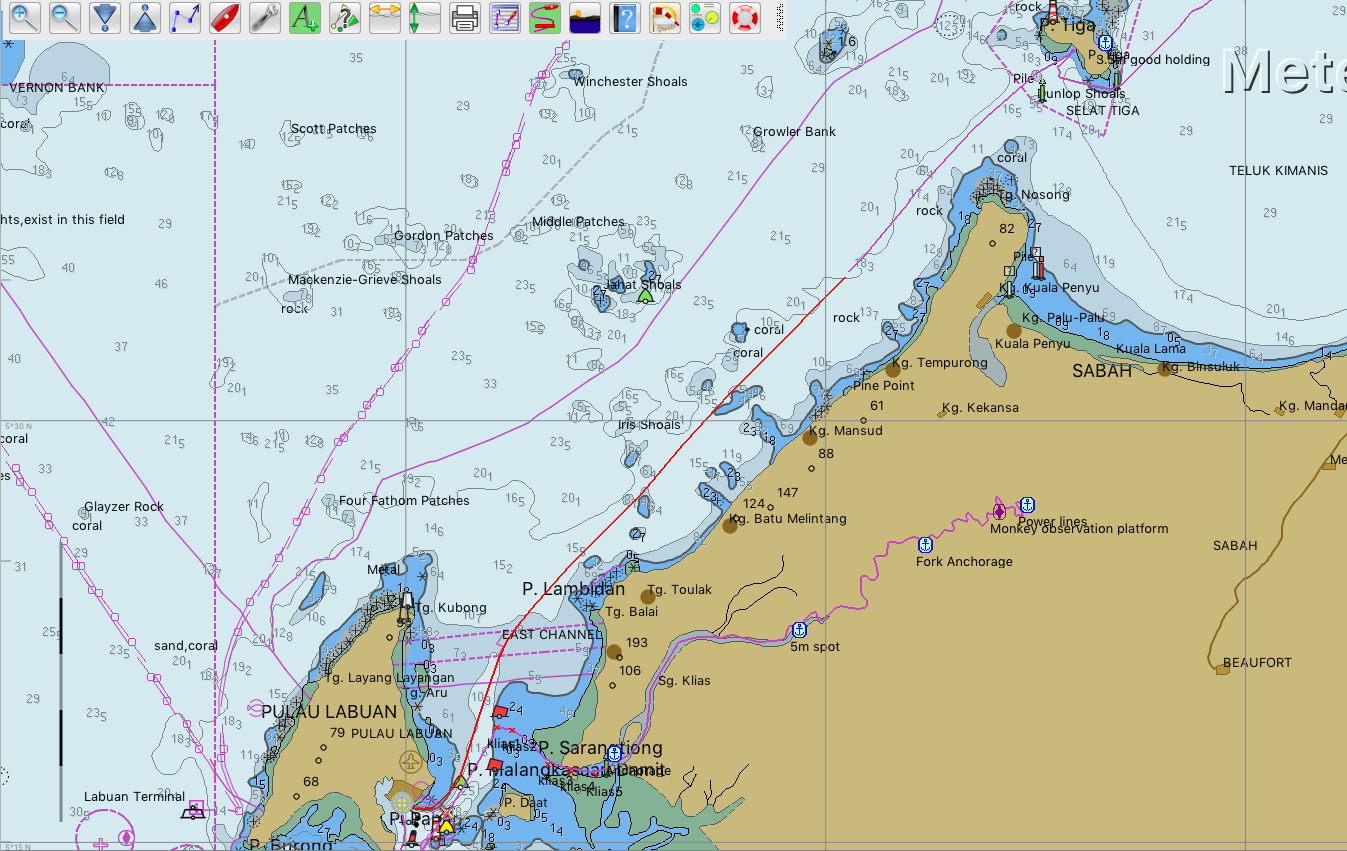


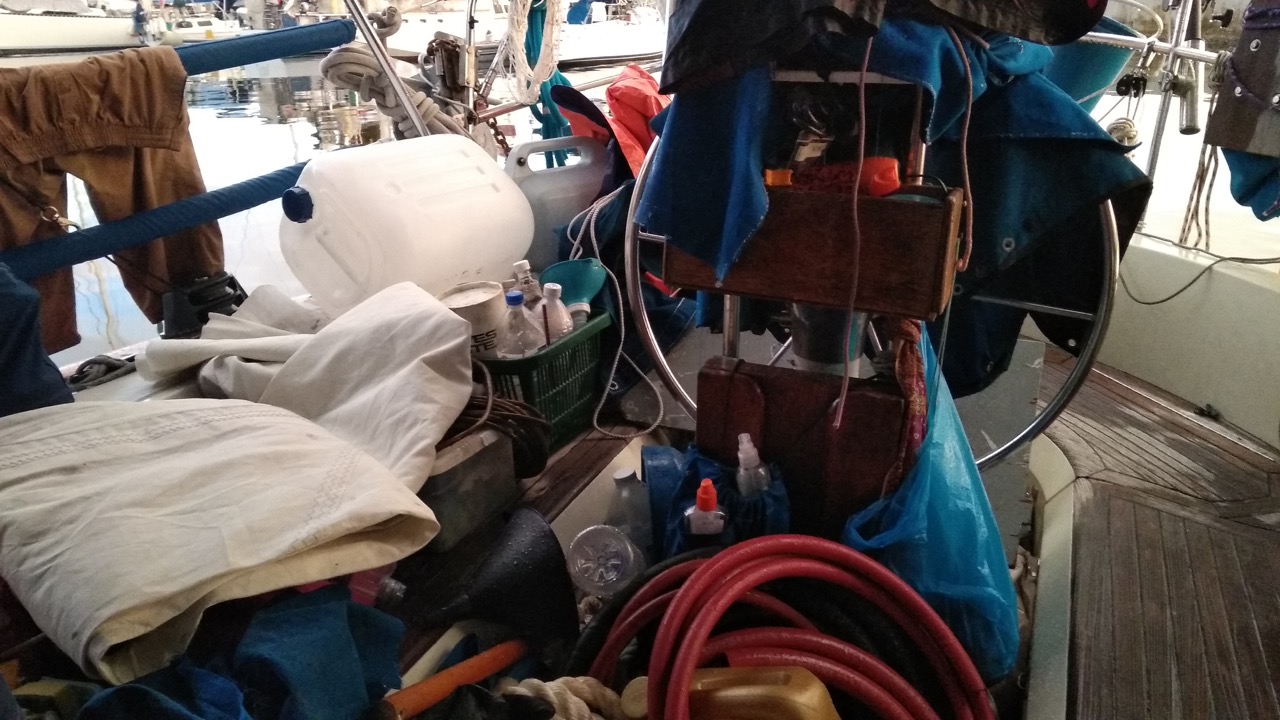
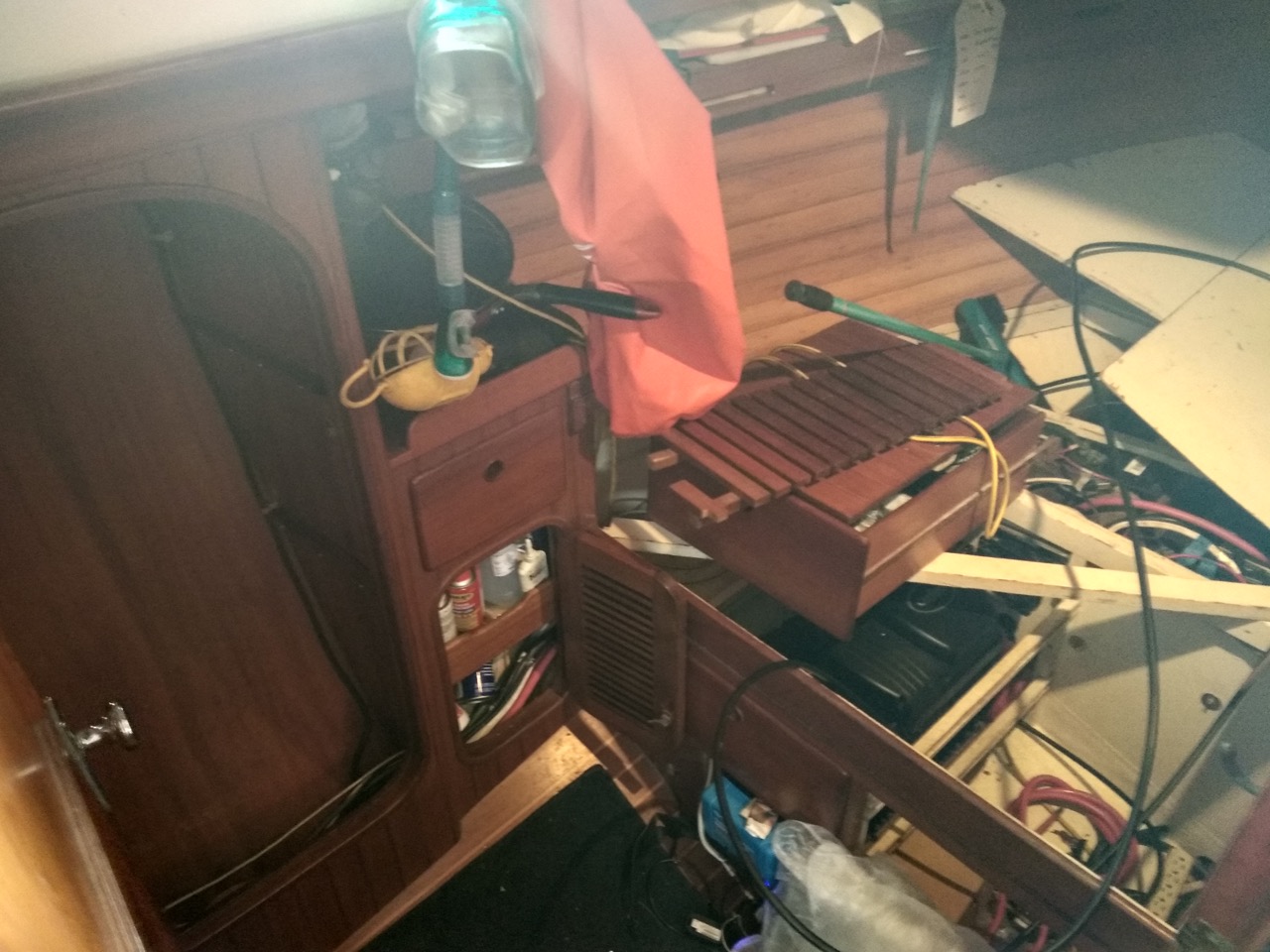
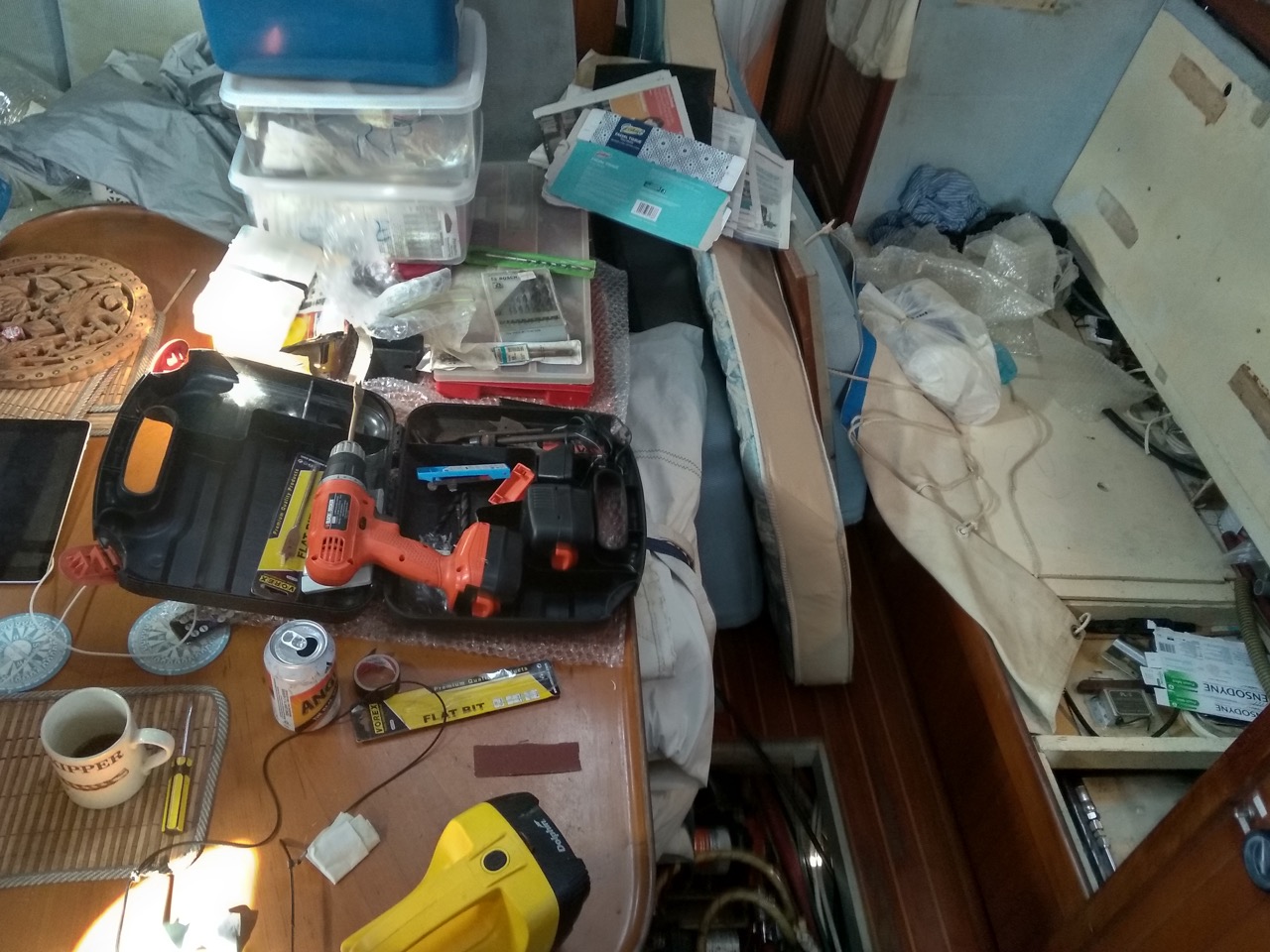

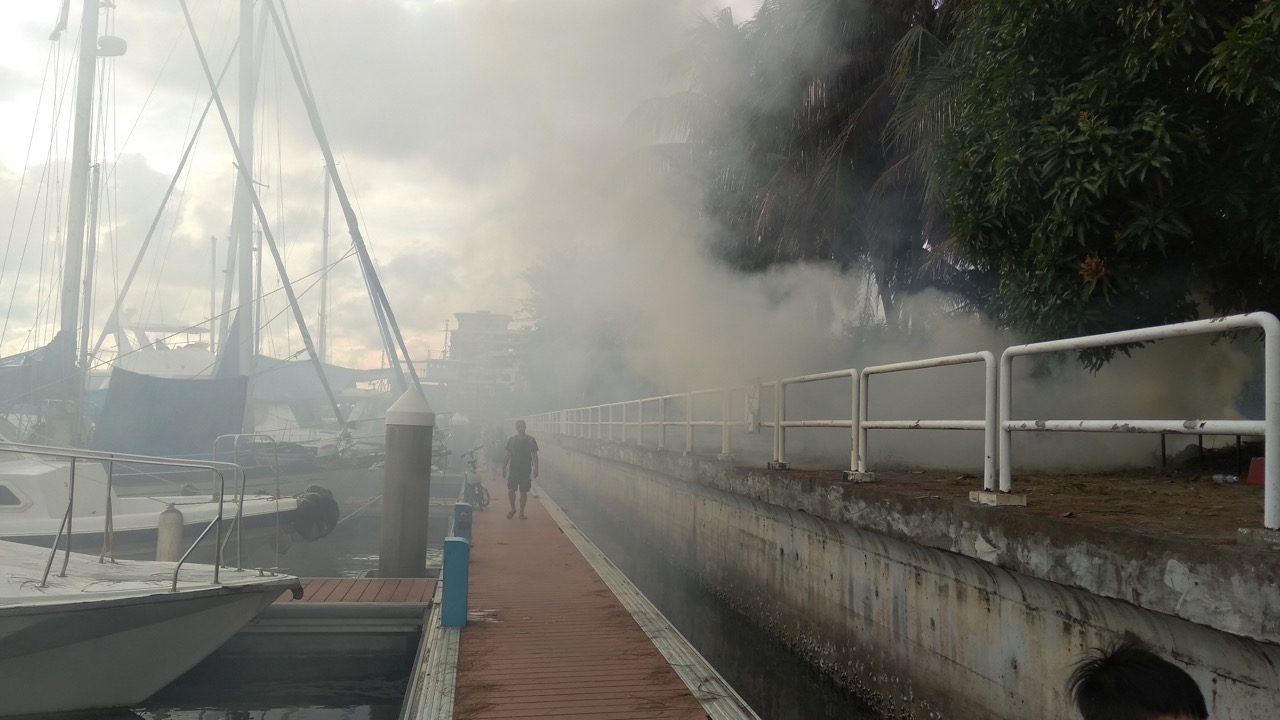
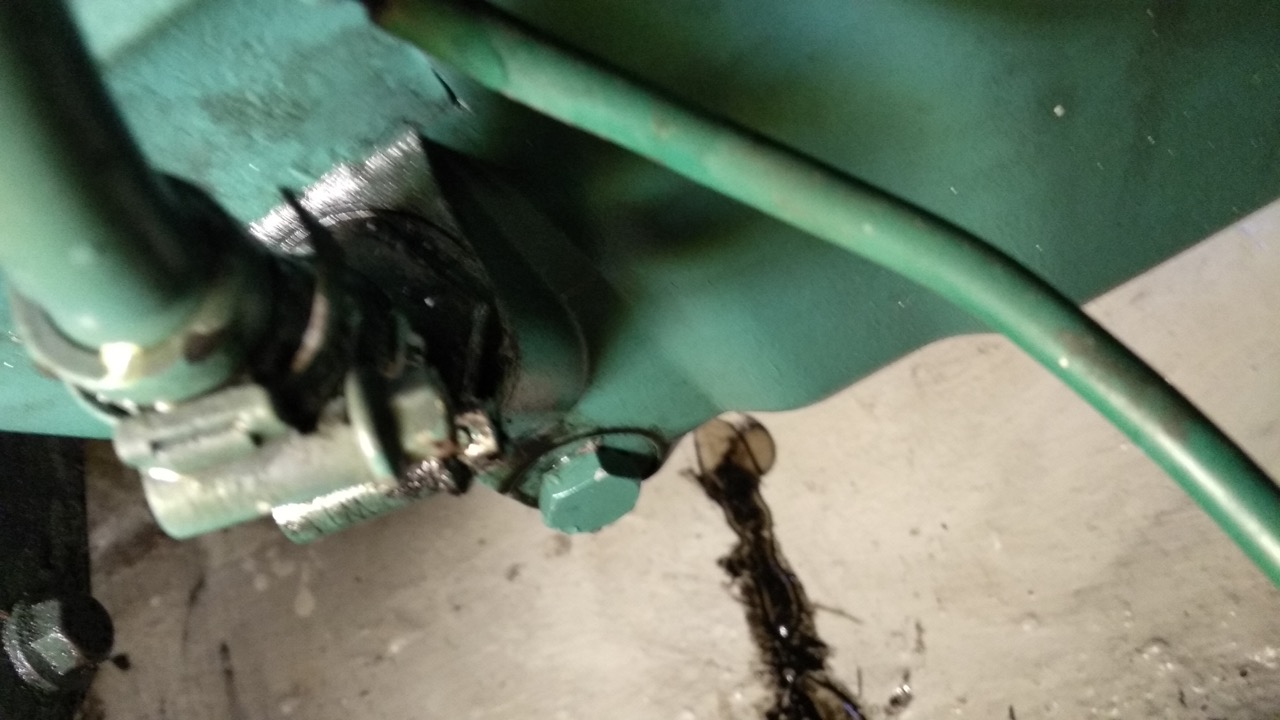
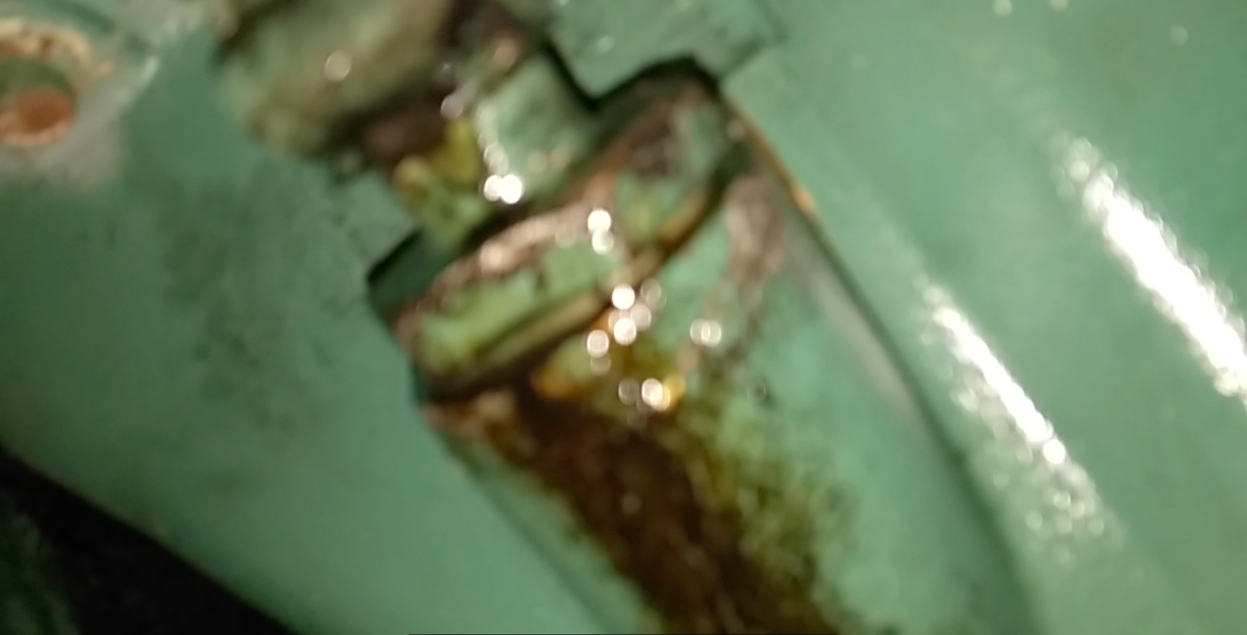
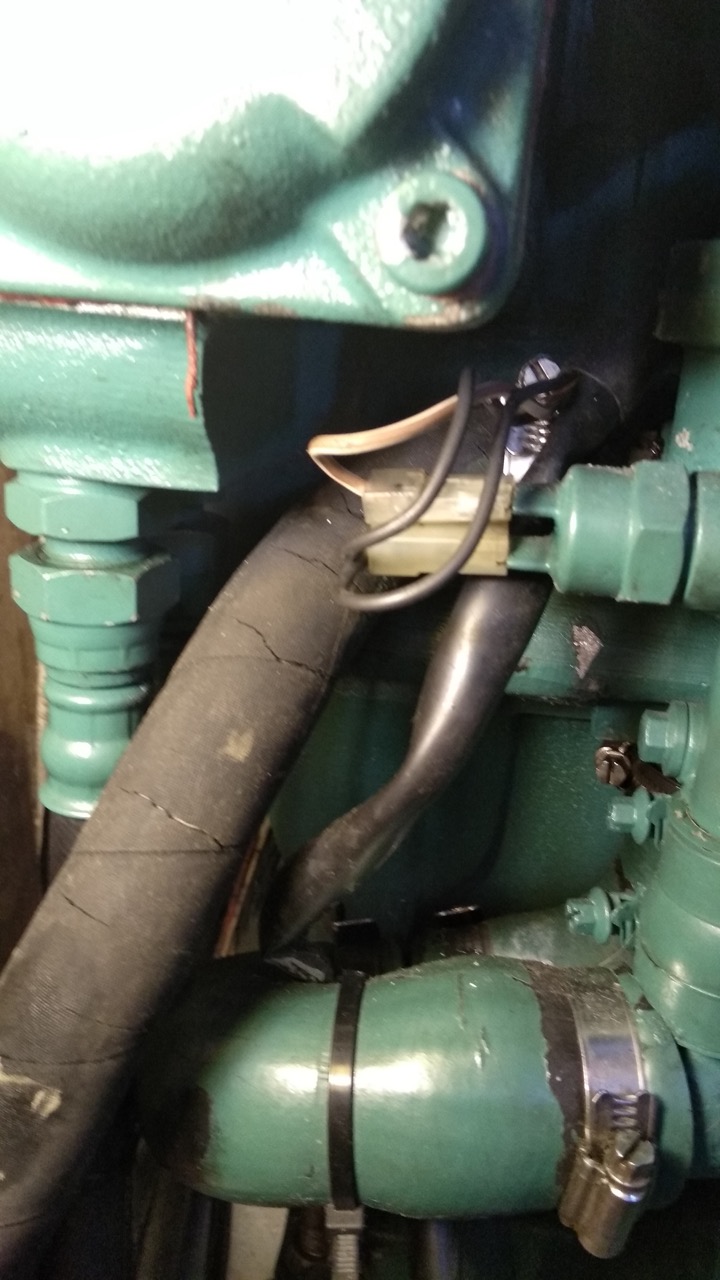
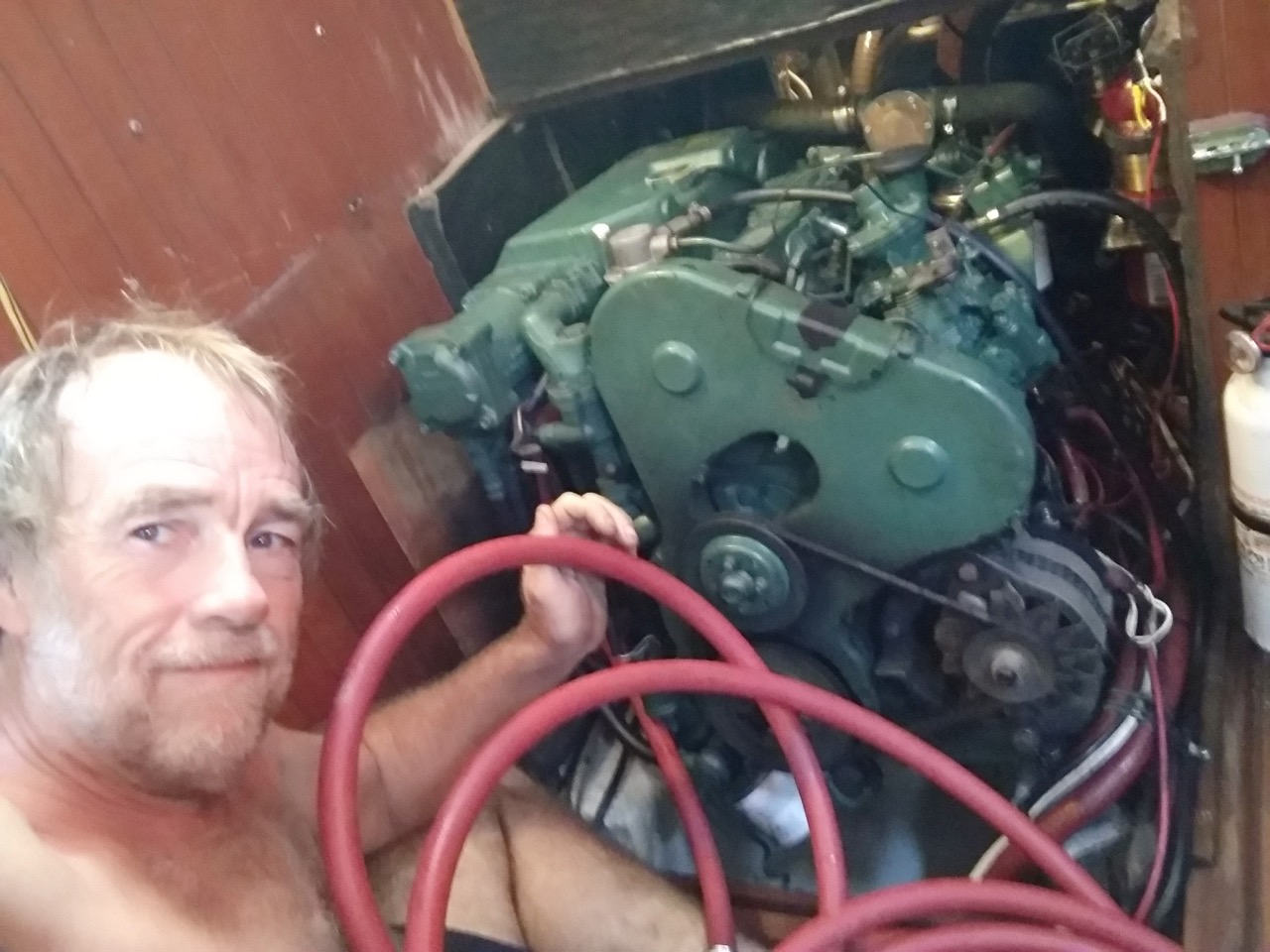 In the end the fitting of the pipes went quite easily, I had to drain the coolant from the engine, then flushed out the system with fresh water before adding antifreeze/rust inhibitor. Of course I can’t work with fluids without getting them everywhere, also the coolant is harmful to skin, so that was fun trying to keep dry.
In the end the fitting of the pipes went quite easily, I had to drain the coolant from the engine, then flushed out the system with fresh water before adding antifreeze/rust inhibitor. Of course I can’t work with fluids without getting them everywhere, also the coolant is harmful to skin, so that was fun trying to keep dry. The pipes take hot water from the engines heat exchanger (radiator) system, and sends it to the water heater at the back of the boat to heat the domestic tap water.
The pipes take hot water from the engines heat exchanger (radiator) system, and sends it to the water heater at the back of the boat to heat the domestic tap water.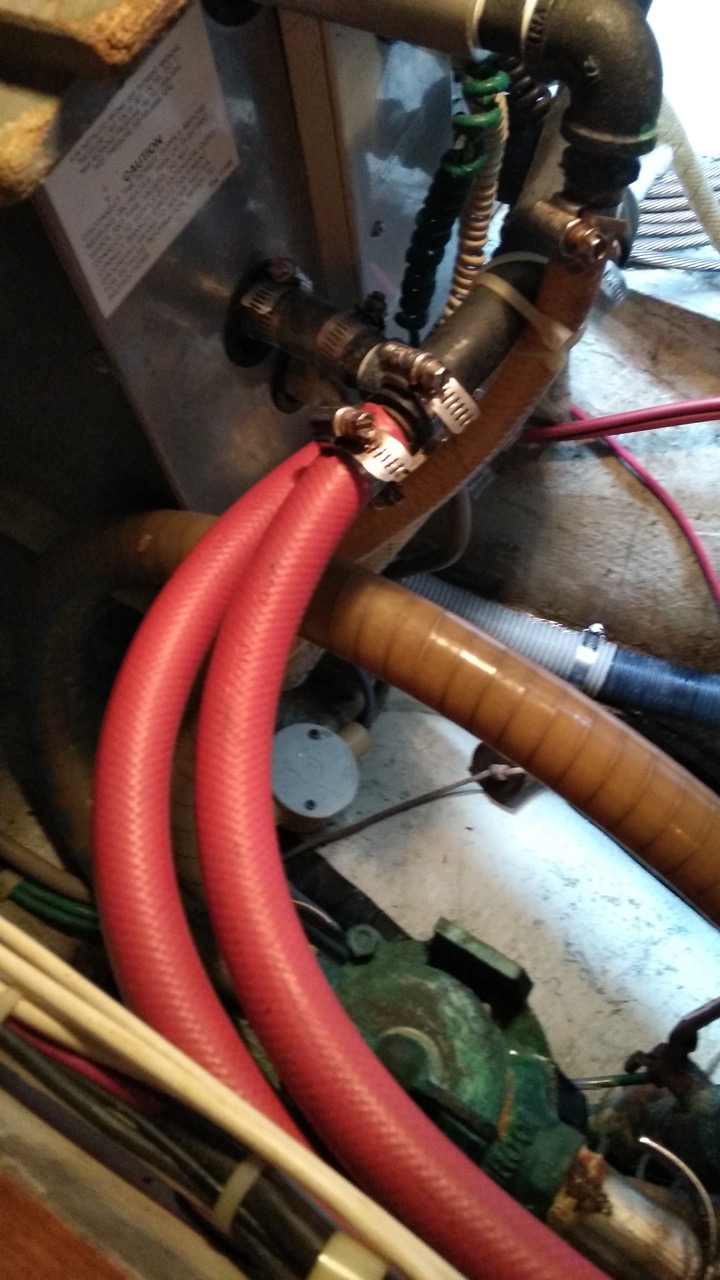
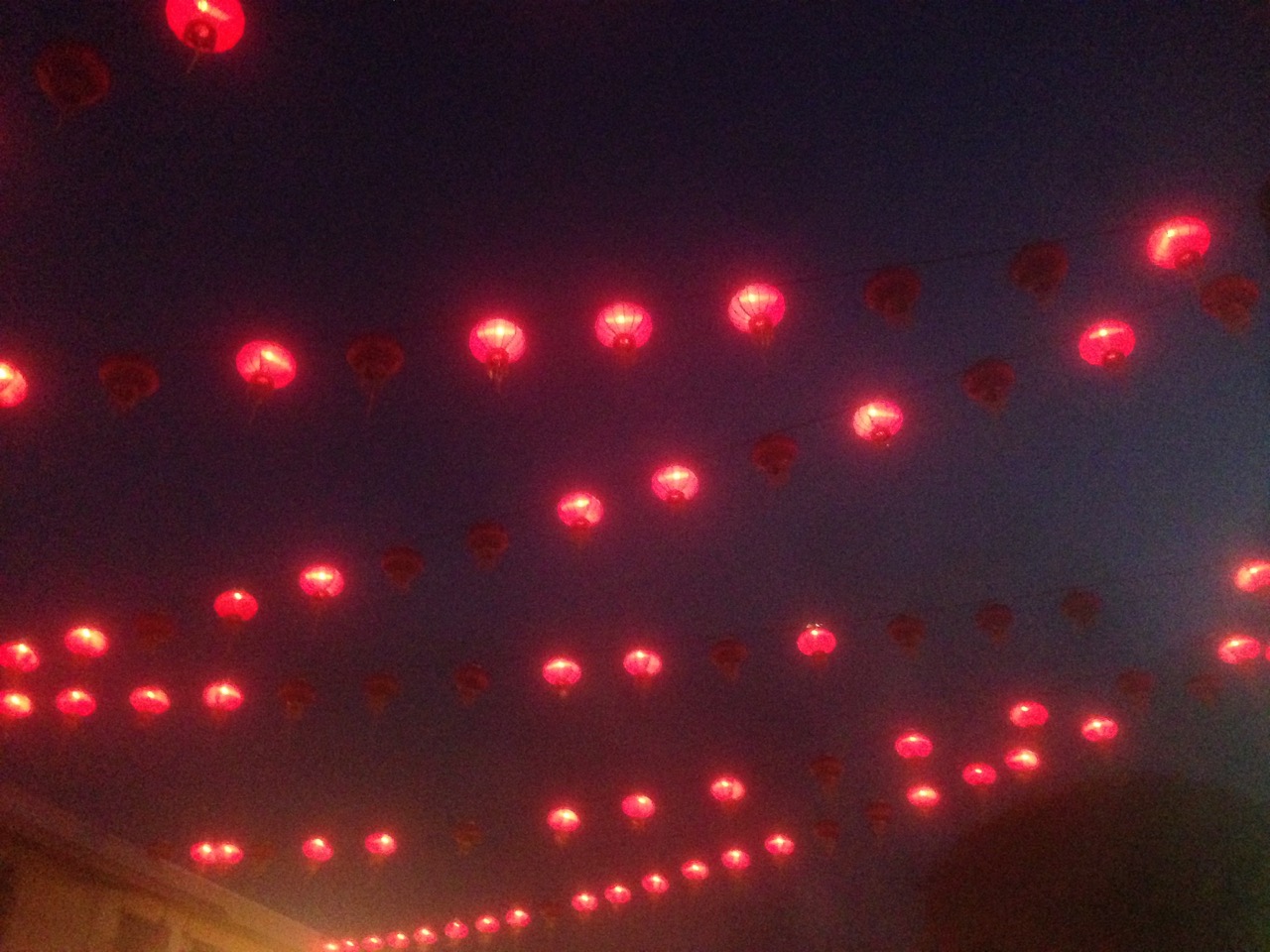
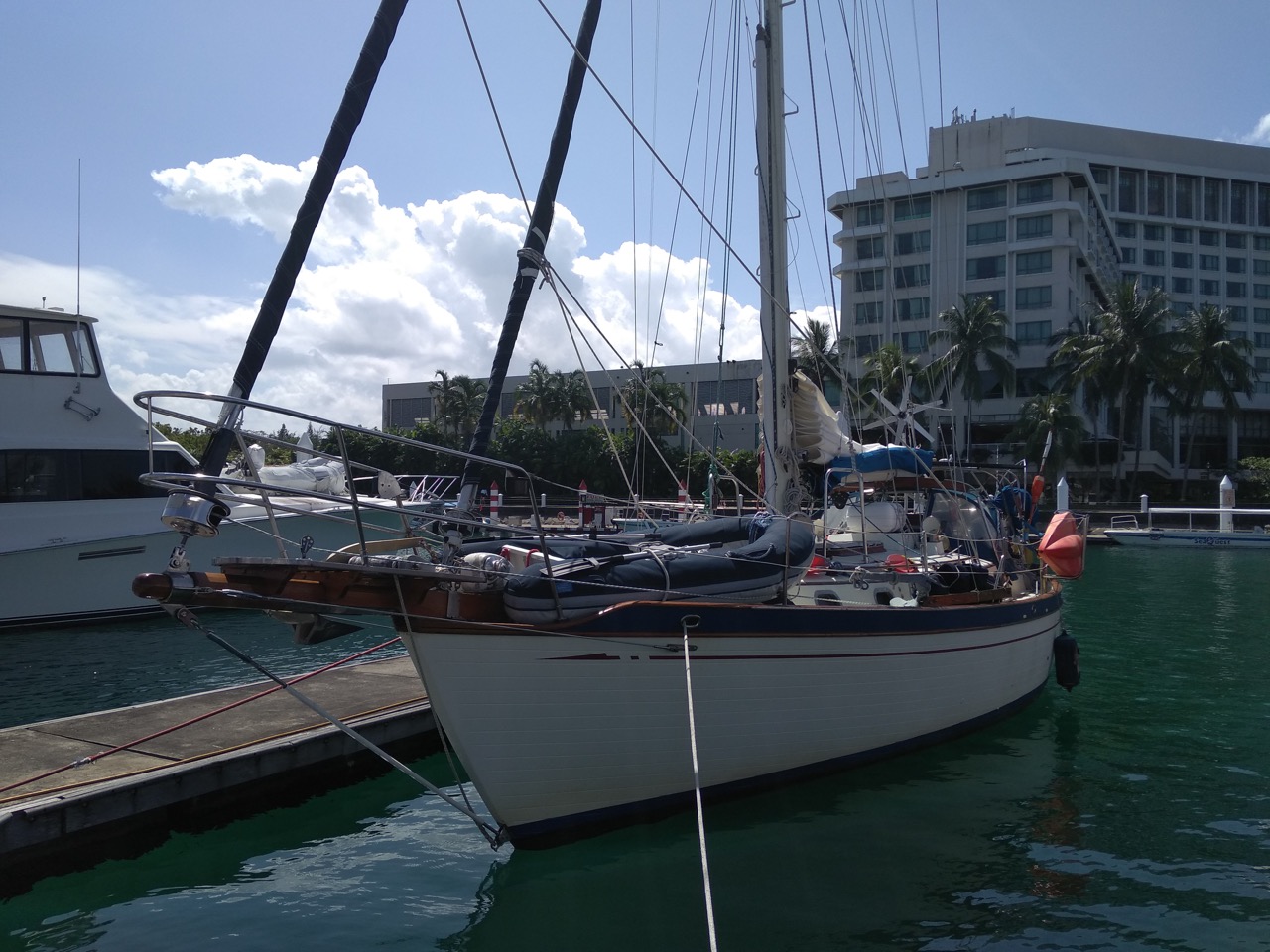
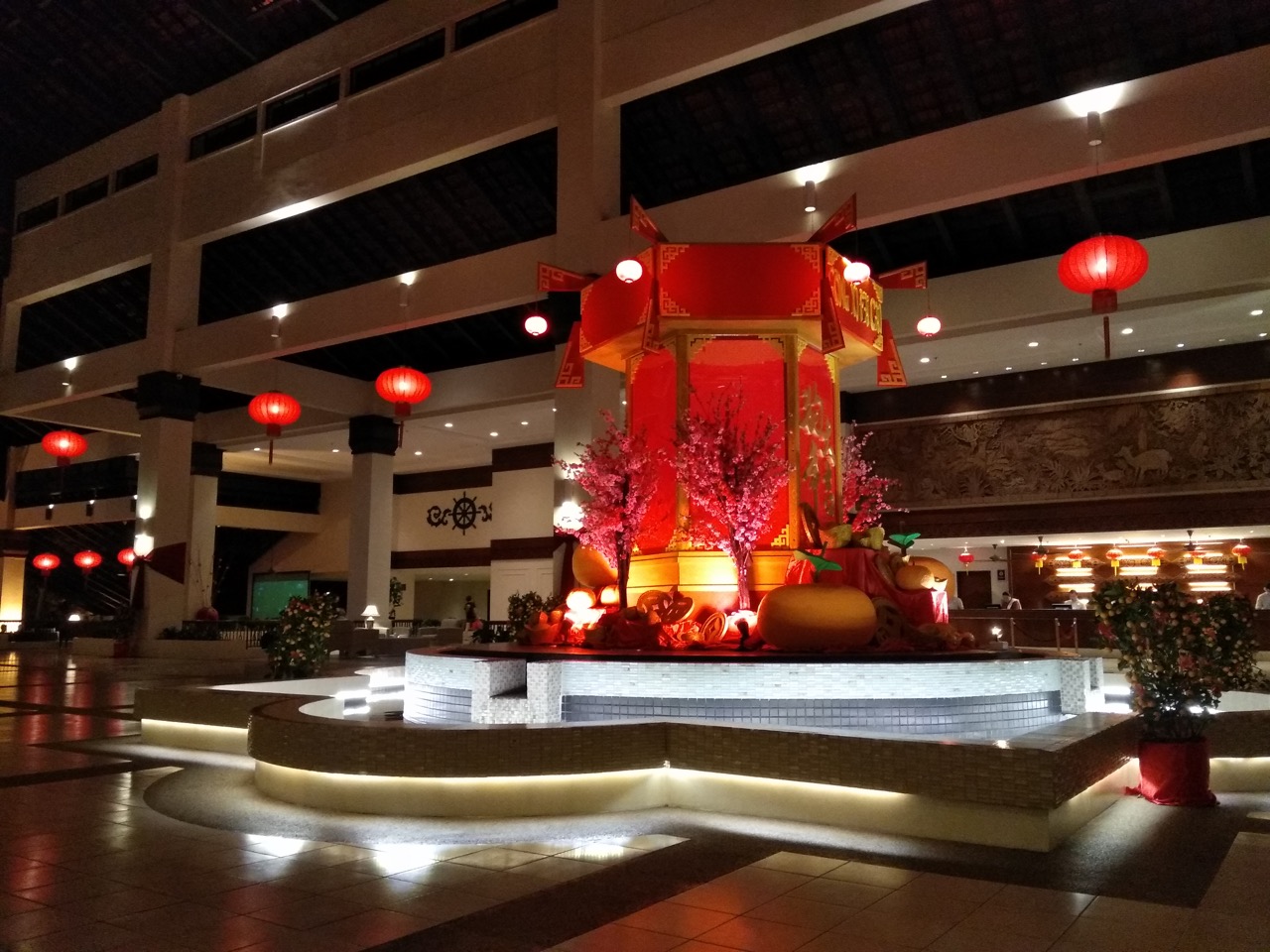
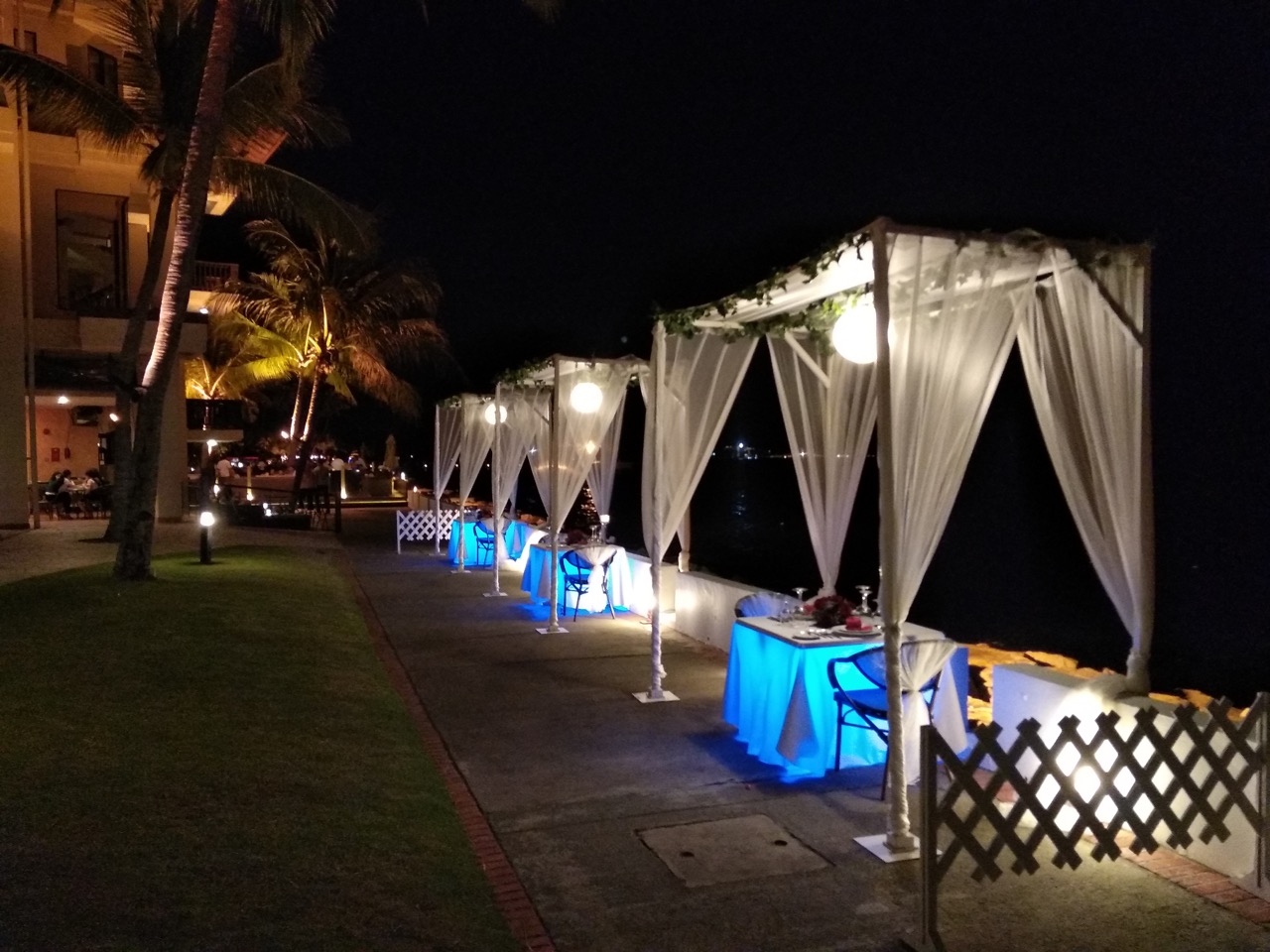
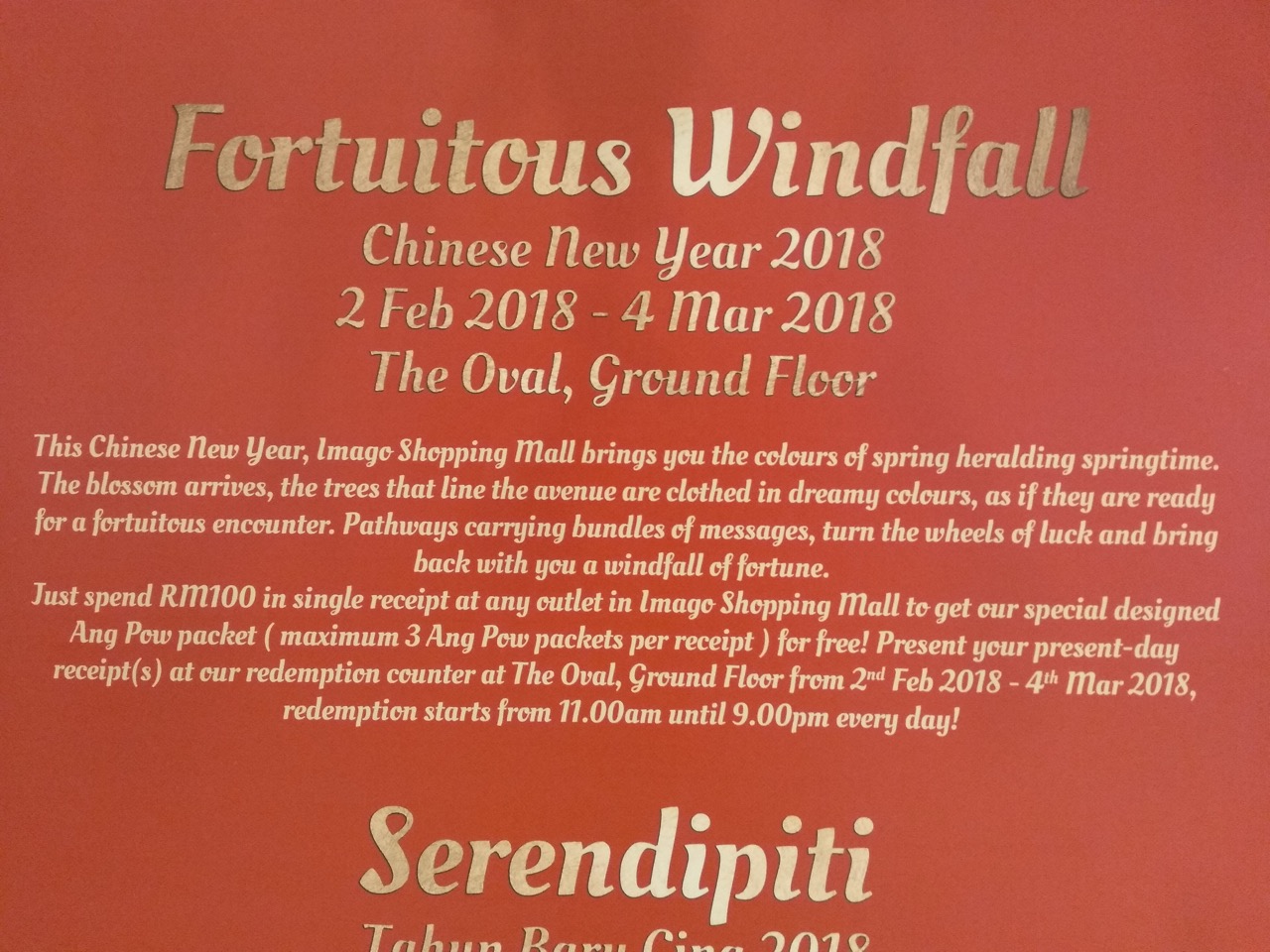
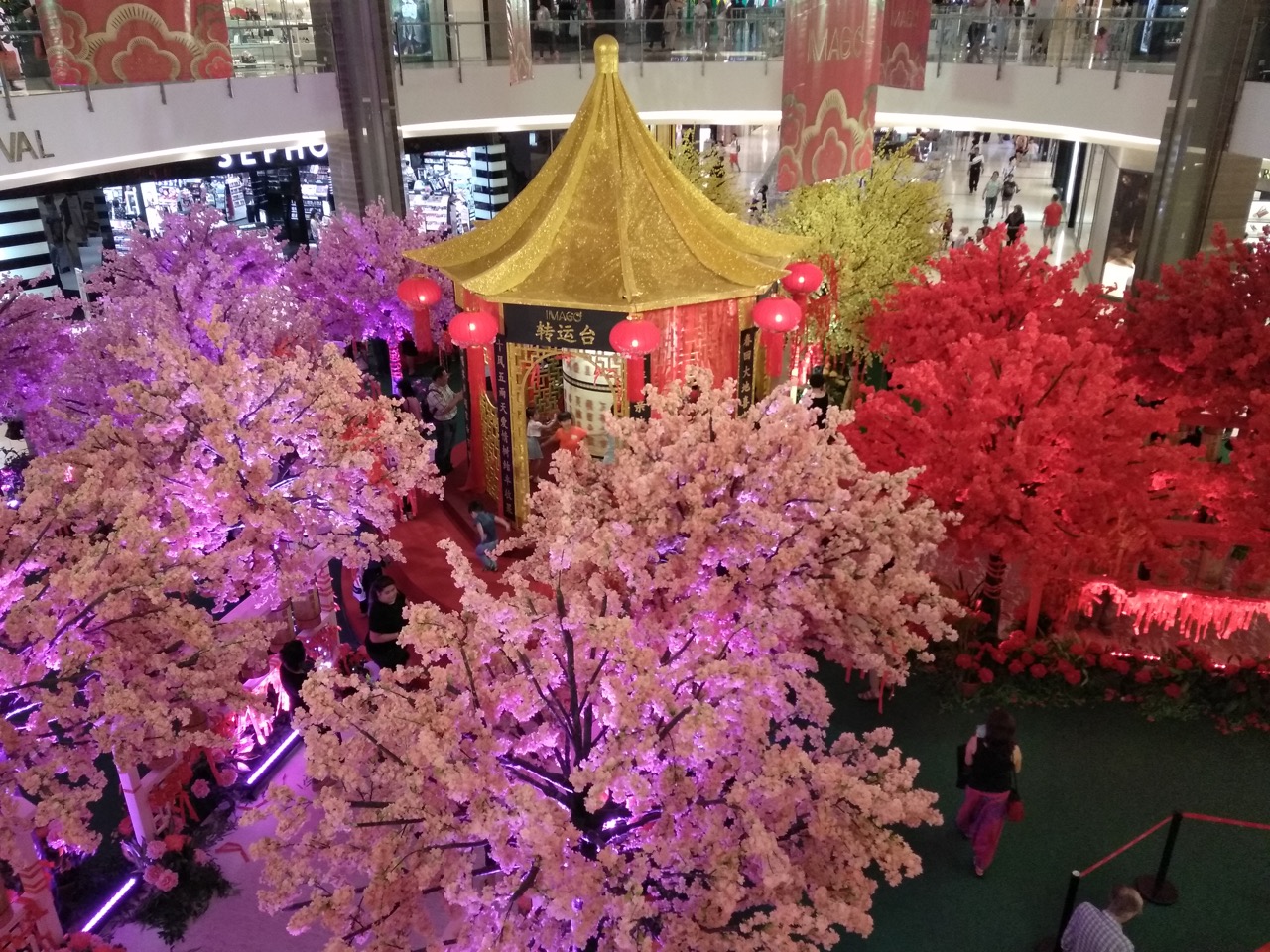
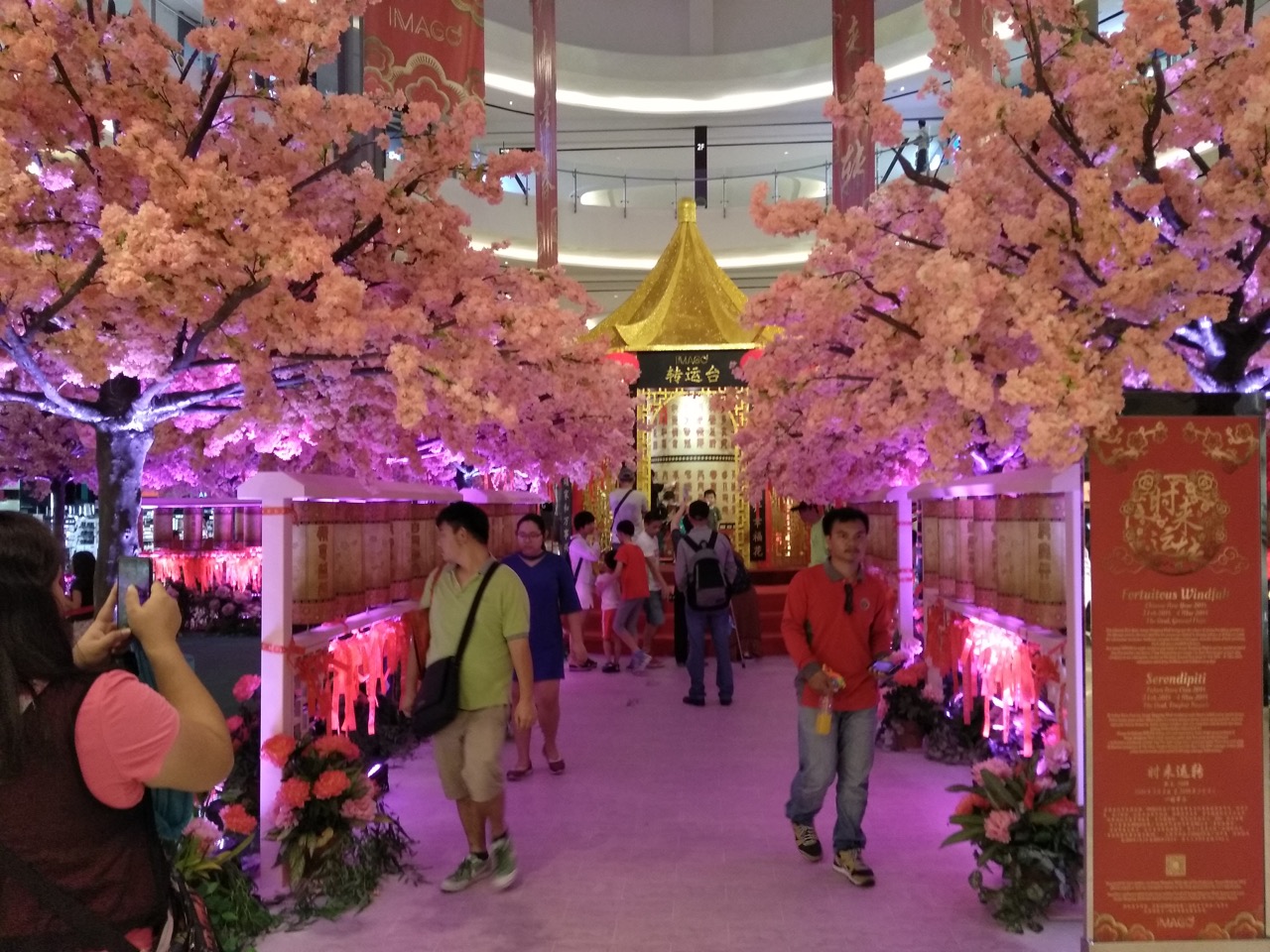
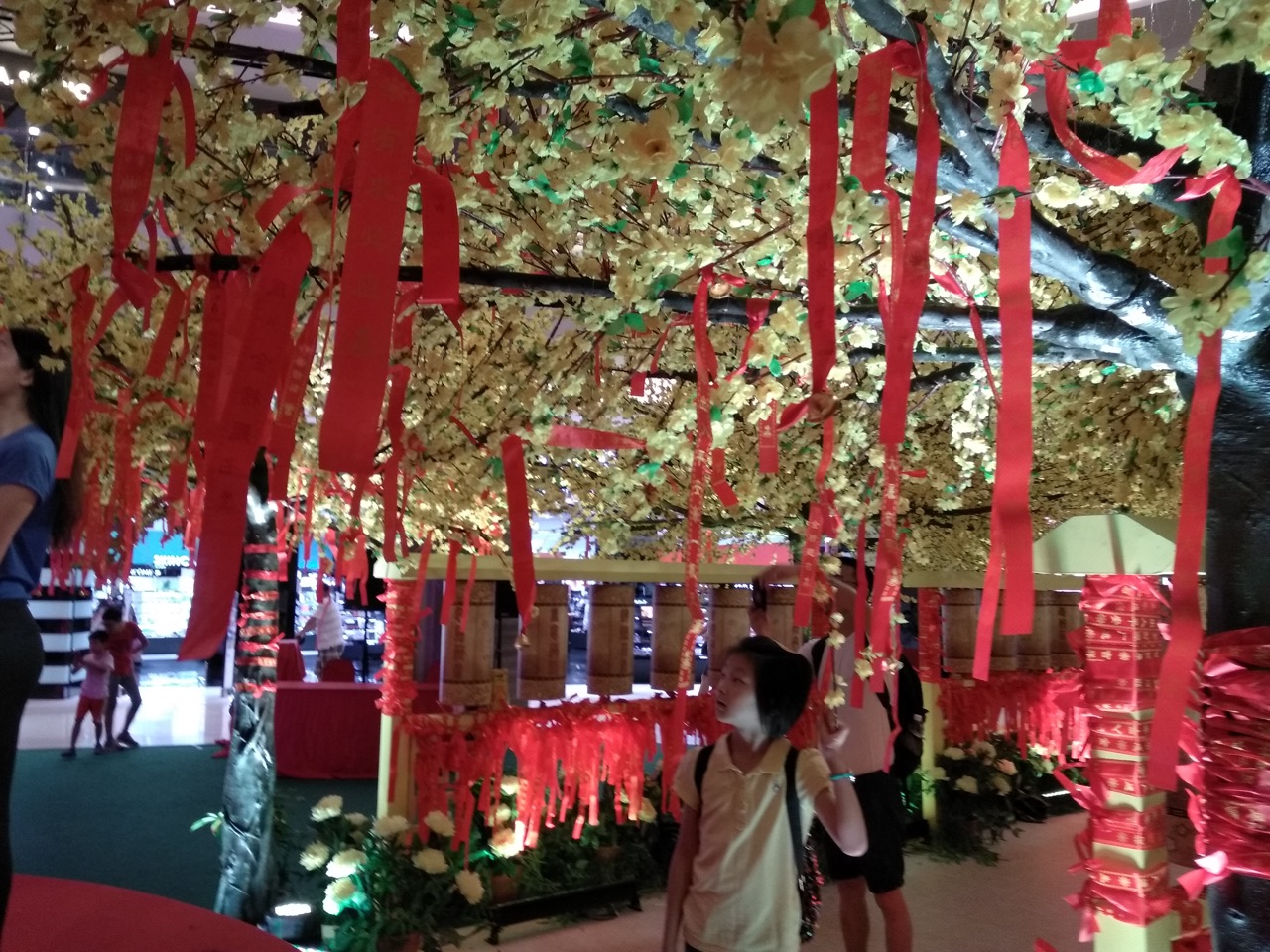
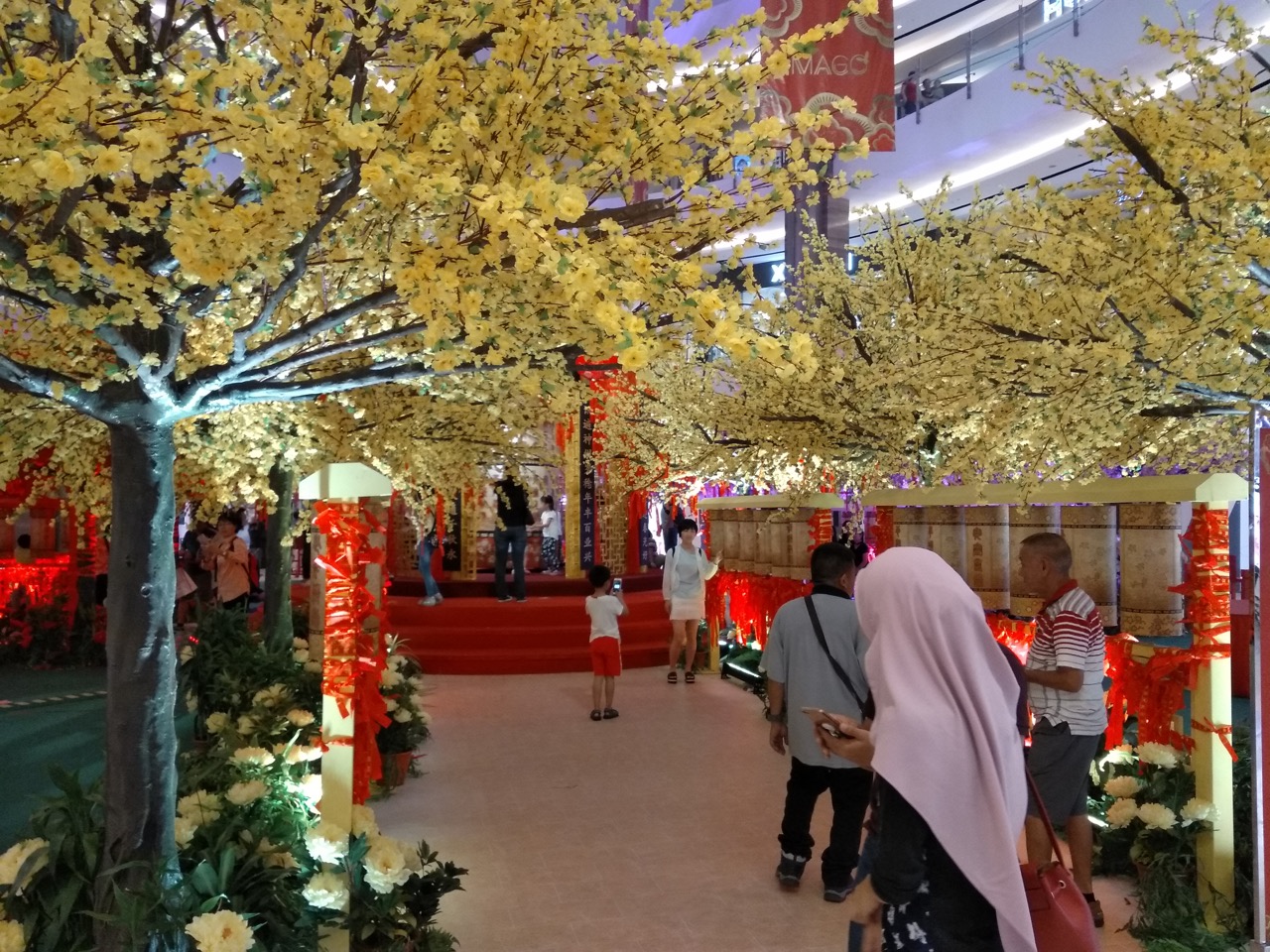

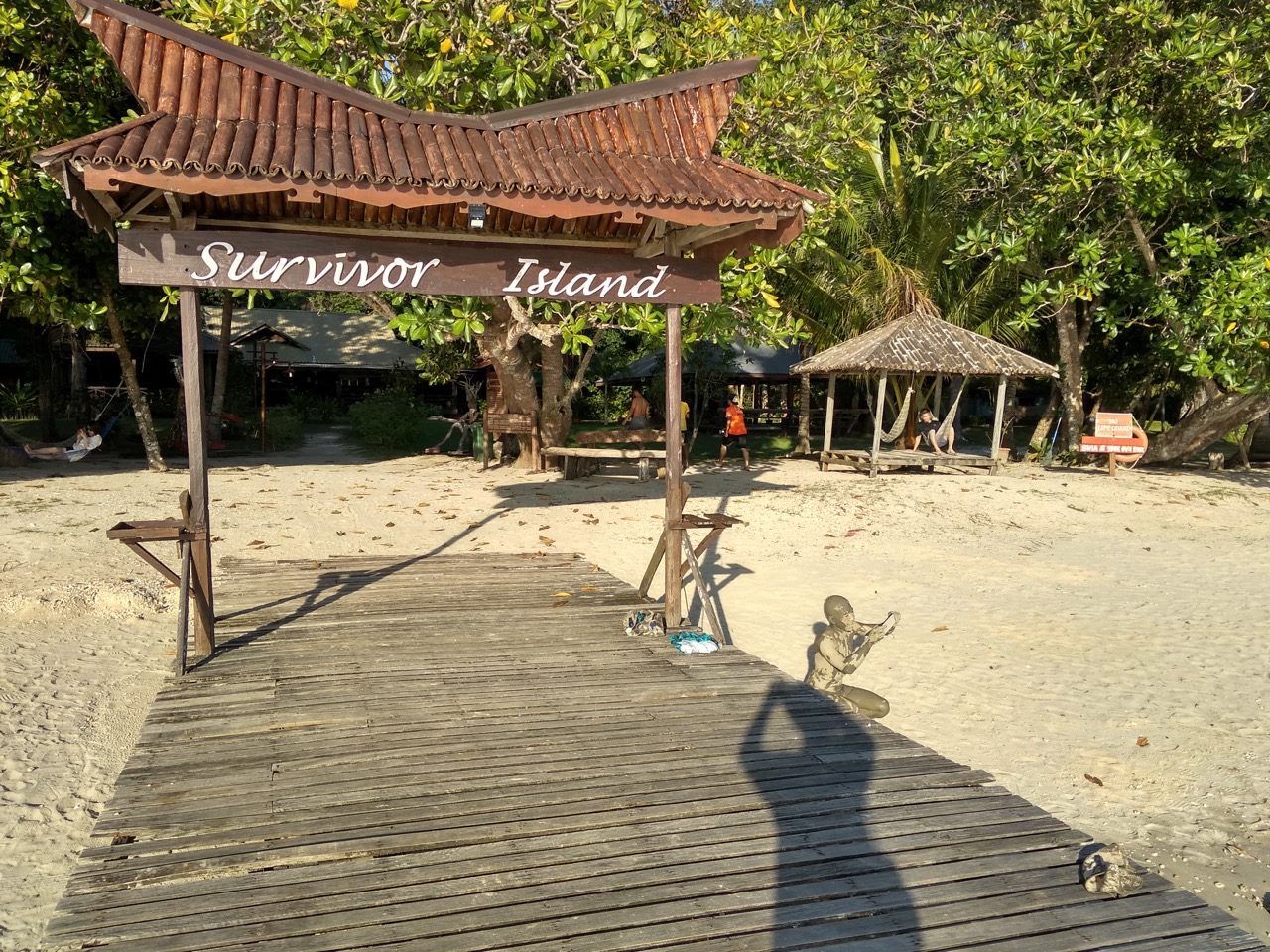
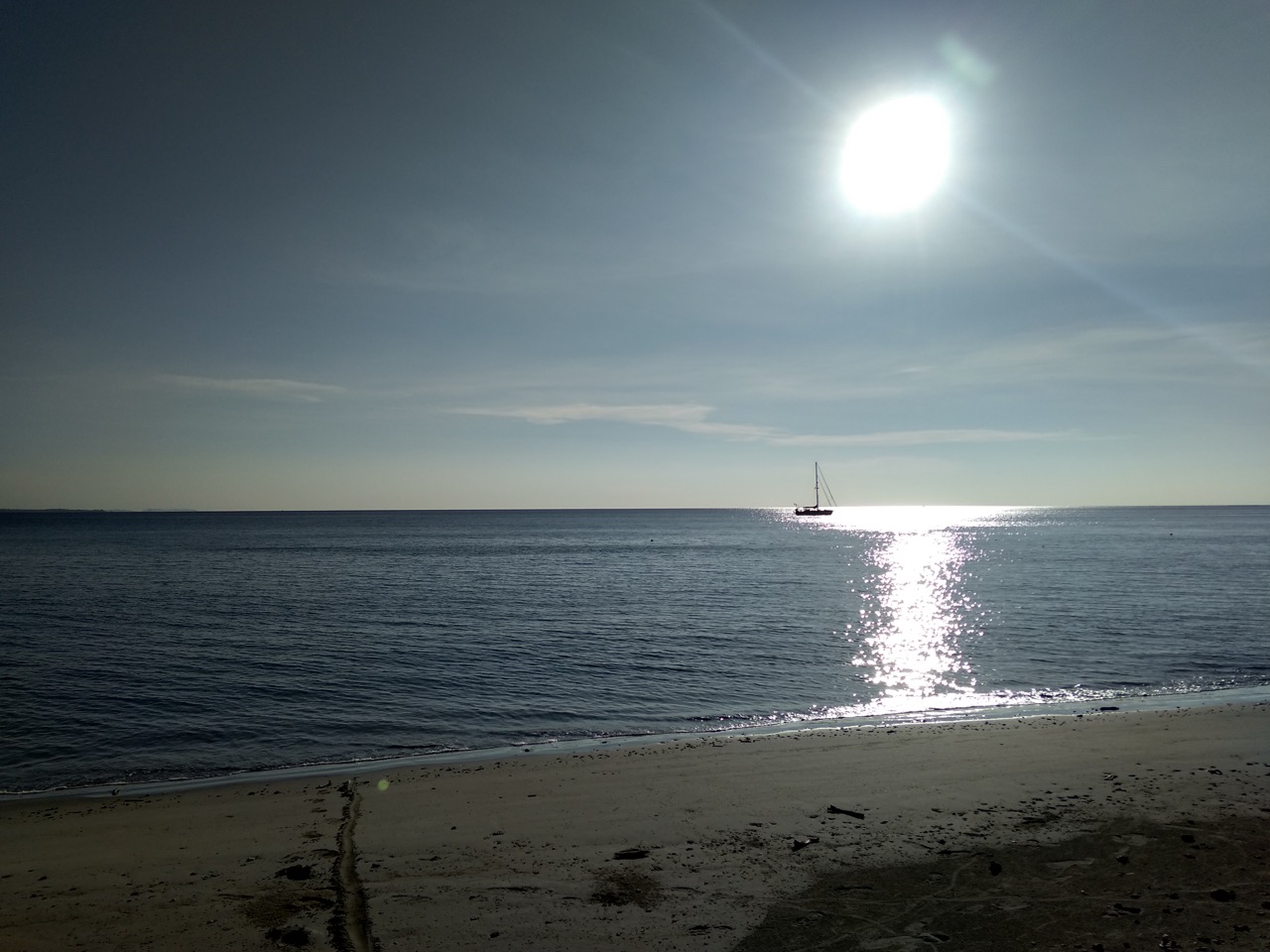
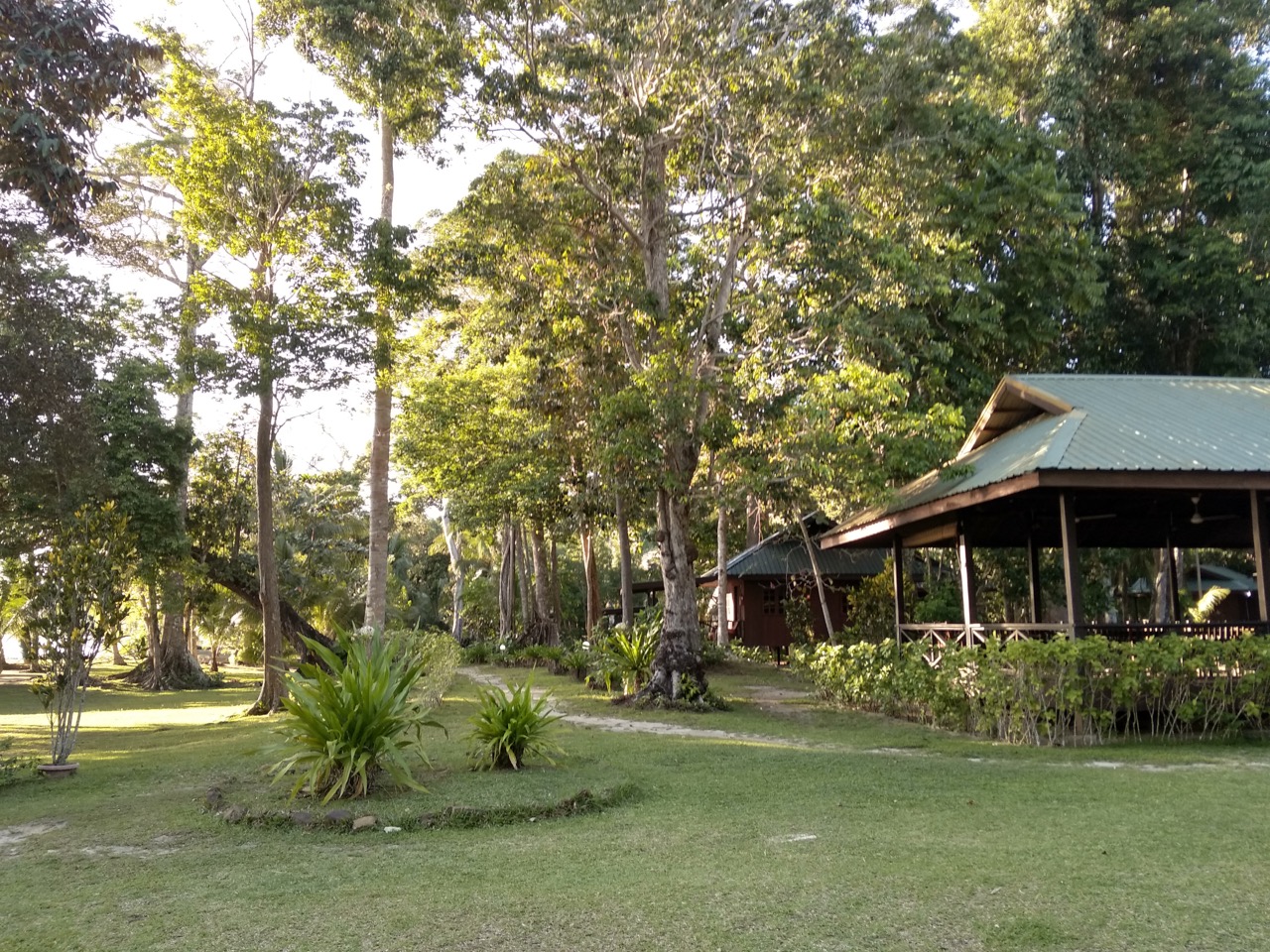
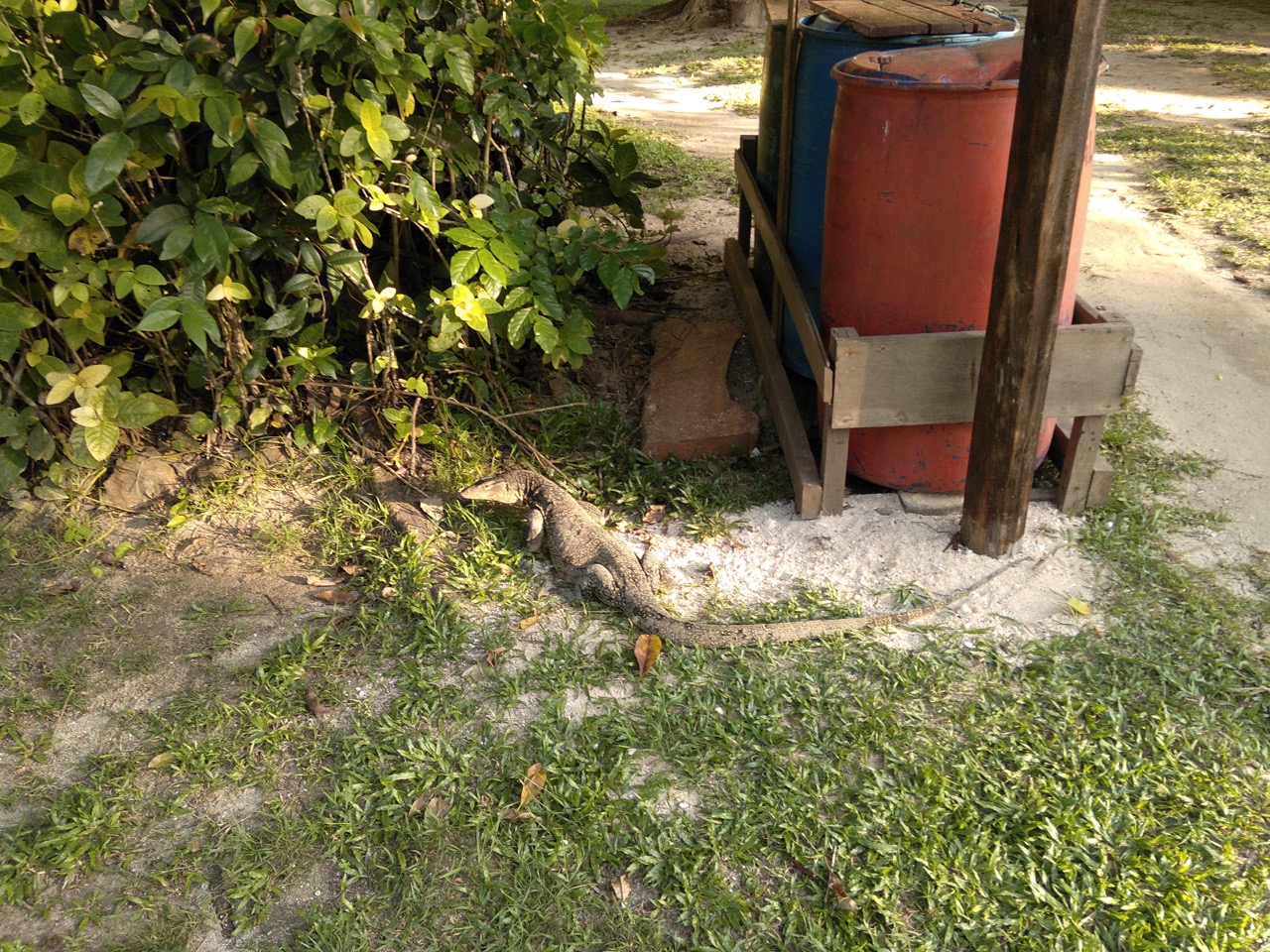
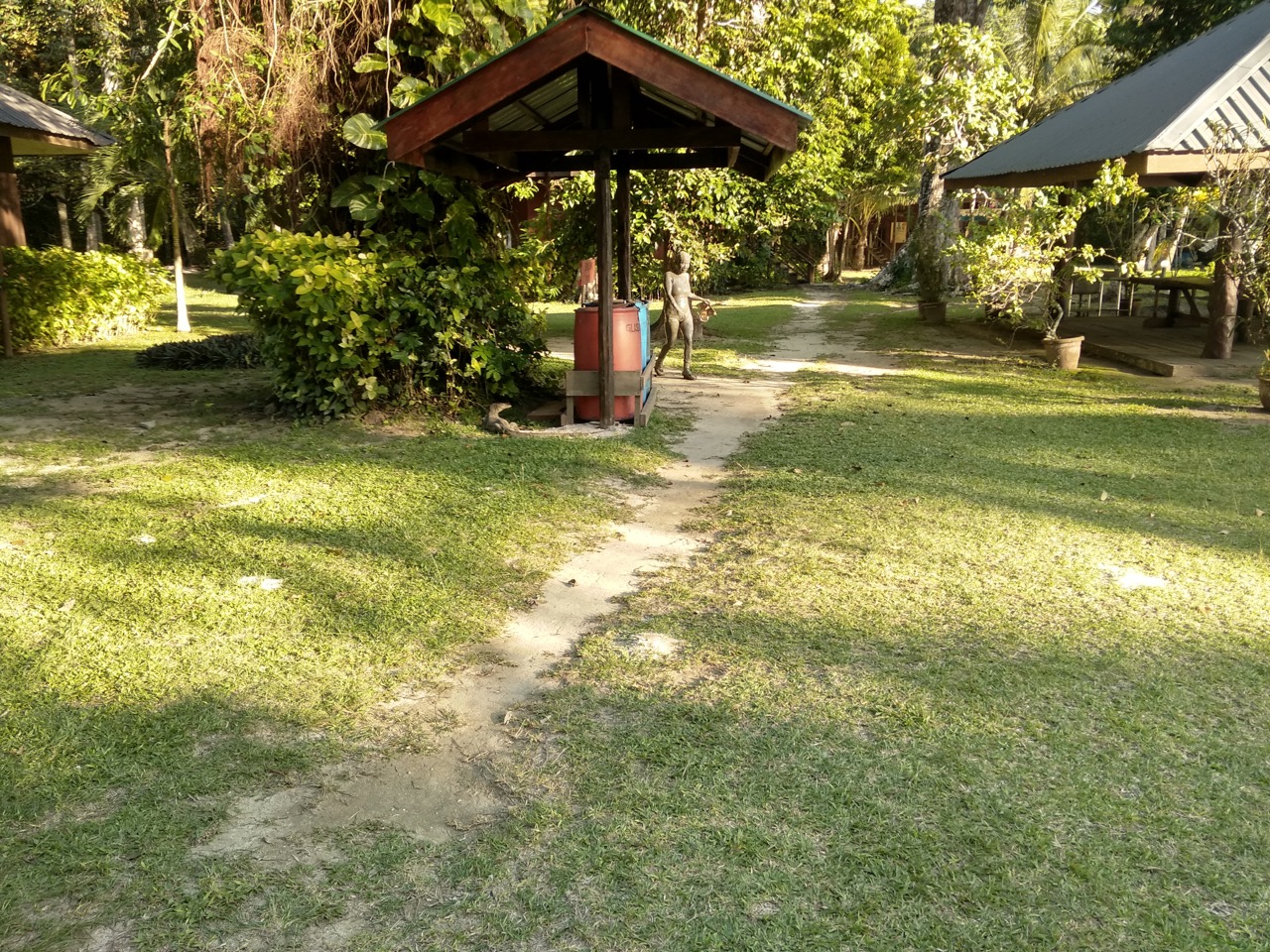
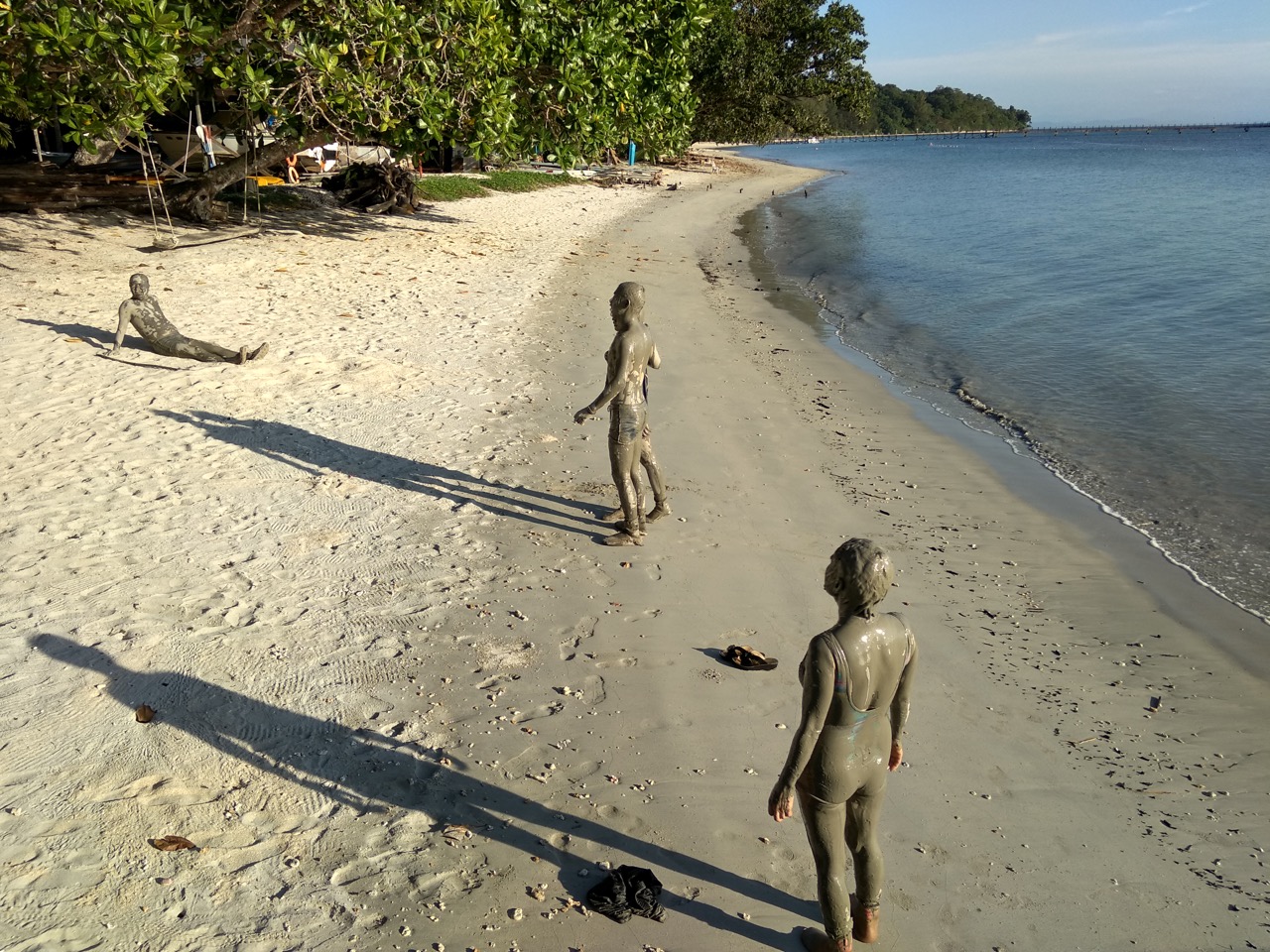 More of the monsters appeared, heading for the sea, quite surreal, they posed for selfies, then entered the sea, only to return as near humans. Apparently they will look younger and live longer now, somehow I don’t think this has been through a very thorough peer review process. But it’s cheaper than buying ‘No 7’ or whatever the current trend is.
More of the monsters appeared, heading for the sea, quite surreal, they posed for selfies, then entered the sea, only to return as near humans. Apparently they will look younger and live longer now, somehow I don’t think this has been through a very thorough peer review process. But it’s cheaper than buying ‘No 7’ or whatever the current trend is.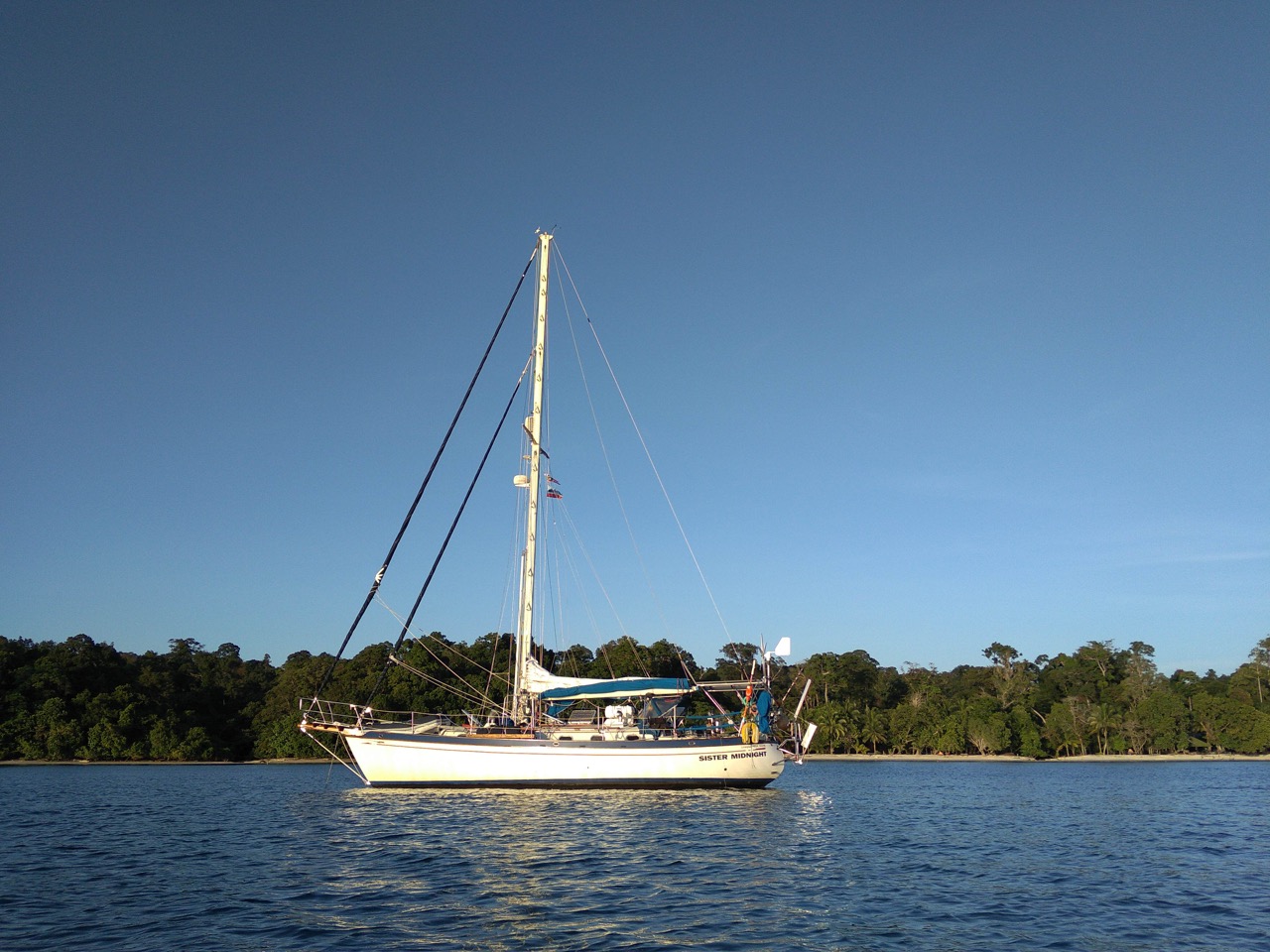


 The travel lift arrived bang on time at 8AM, and I was in the water 20 minutes later, doing the old reversing the wrong way trick. still I missed all the hard concrete piles and got out just fine. I would have had a lot
The travel lift arrived bang on time at 8AM, and I was in the water 20 minutes later, doing the old reversing the wrong way trick. still I missed all the hard concrete piles and got out just fine. I would have had a lot
 they are joined together by pushing steel rods through the hoops at the end. Human ingenuity never ceases to delight me.
they are joined together by pushing steel rods through the hoops at the end. Human ingenuity never ceases to delight me.



 At this point I lose my internet connection, so I’m finishing this off from Sutera harbour.
At this point I lose my internet connection, so I’m finishing this off from Sutera harbour. The north side of the bay looked lovely in the morning sunrise light
The north side of the bay looked lovely in the morning sunrise light Now below you can see my course to leave the bay, The Khaki is the land, and the green is underwater mud/sand which is less than 0.5 mtrs deep.
Now below you can see my course to leave the bay, The Khaki is the land, and the green is underwater mud/sand which is less than 0.5 mtrs deep.  I left the anchorage on the bottom right and set the autohelm to slowly take me out, using my eye to work out the course, as you can see it wasnt a good idea, I was going very slow, about 1 knot, so I could secure the anchor to the boat, while doing this I looked over the side to see the bottom of the sea was quite close, it looked to be about 2-3 foot, but it’s usually deeper, is that parallax, or some other effect, either way we were going to go aground for sure, and before I had time to react the boat made a small gravelly sound and stopped. Bugger, not again, a quick sprint to the wheel, a blast in reverse and we motored back without any effort, yet the wheel wouldn’t turn, it seemed jammed, I’m thinking has the grounding damaged it, could the rudder be in mud still somehow, what to do. Then I remembered, the computer was steering, so quickly turning the autopilot off, and we were away. You really wouldn’t know there was a shallow there without the navionics chart, which is nearly always wrong on these matters anyway. My Cmap chart has the water as being 8 mtrs deep there. Attention to detail is required, or even just attention would help!
I left the anchorage on the bottom right and set the autohelm to slowly take me out, using my eye to work out the course, as you can see it wasnt a good idea, I was going very slow, about 1 knot, so I could secure the anchor to the boat, while doing this I looked over the side to see the bottom of the sea was quite close, it looked to be about 2-3 foot, but it’s usually deeper, is that parallax, or some other effect, either way we were going to go aground for sure, and before I had time to react the boat made a small gravelly sound and stopped. Bugger, not again, a quick sprint to the wheel, a blast in reverse and we motored back without any effort, yet the wheel wouldn’t turn, it seemed jammed, I’m thinking has the grounding damaged it, could the rudder be in mud still somehow, what to do. Then I remembered, the computer was steering, so quickly turning the autopilot off, and we were away. You really wouldn’t know there was a shallow there without the navionics chart, which is nearly always wrong on these matters anyway. My Cmap chart has the water as being 8 mtrs deep there. Attention to detail is required, or even just attention would help!
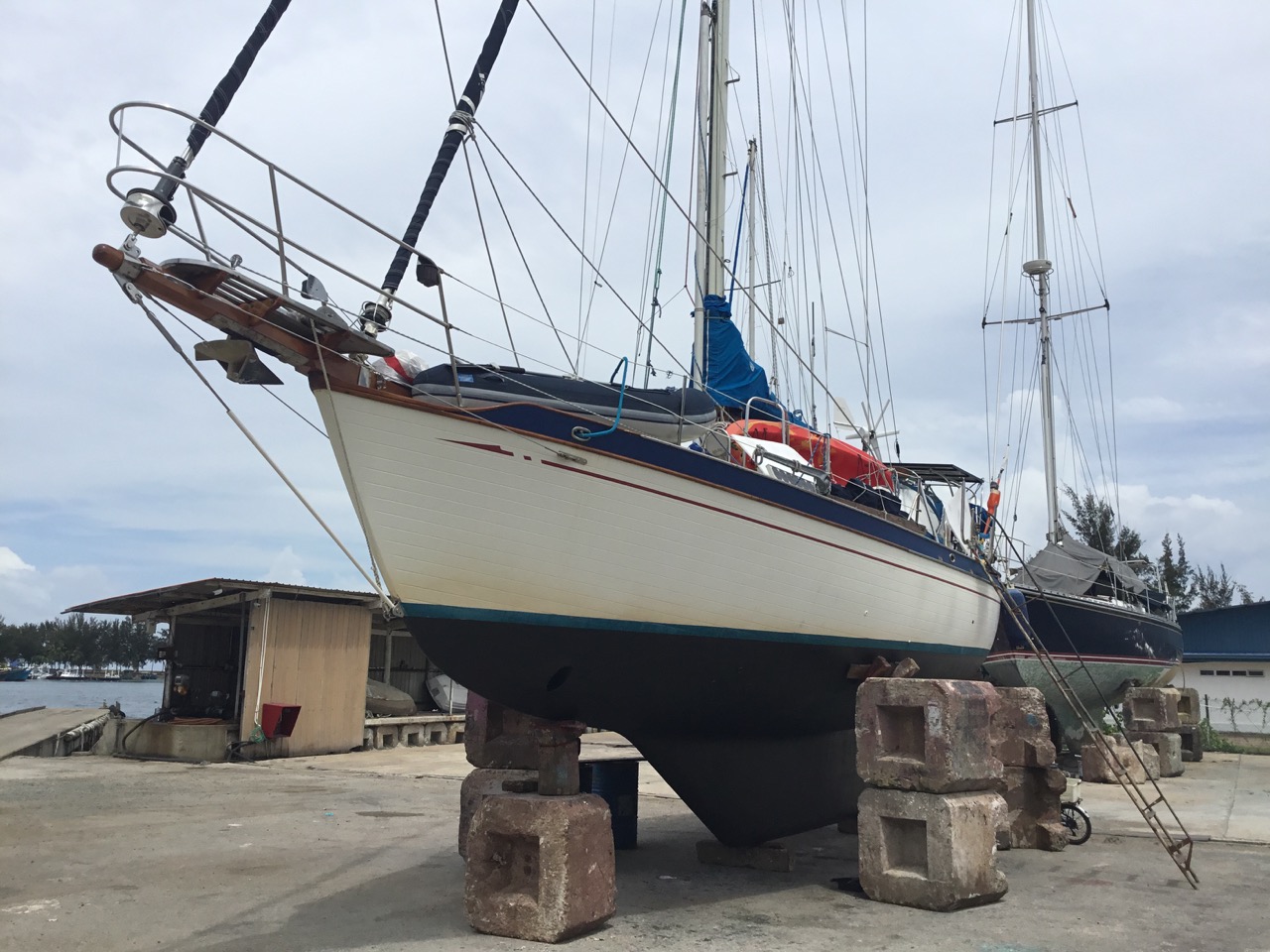 The faulty seacock and one way valve is working fine now,
The faulty seacock and one way valve is working fine now, 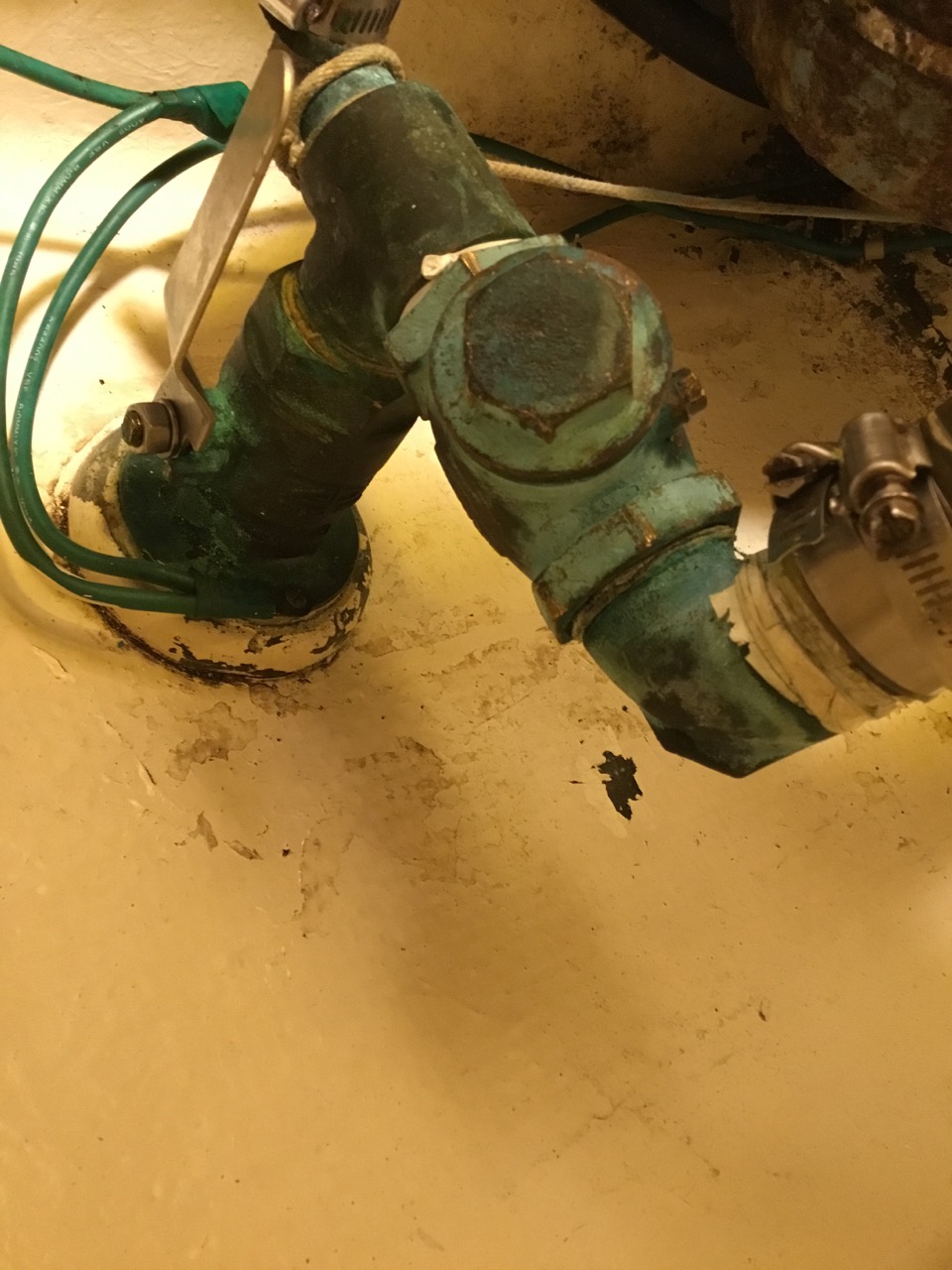 and I’m just going to do a few cosmetic jobs, like patching some scrapes along the waterline / boot top, then have a relaxing weekend before launching on Tuesday. I decided not to replace the hull zincs, although they look worn down, there’s still a substantial amount of zinc there, and given the rate of decay, they should be good for another year. One of my jobs is to redo the earthing wires inside the boat, several have broken off the seacocks so, this might increase the anode decay.
and I’m just going to do a few cosmetic jobs, like patching some scrapes along the waterline / boot top, then have a relaxing weekend before launching on Tuesday. I decided not to replace the hull zincs, although they look worn down, there’s still a substantial amount of zinc there, and given the rate of decay, they should be good for another year. One of my jobs is to redo the earthing wires inside the boat, several have broken off the seacocks so, this might increase the anode decay.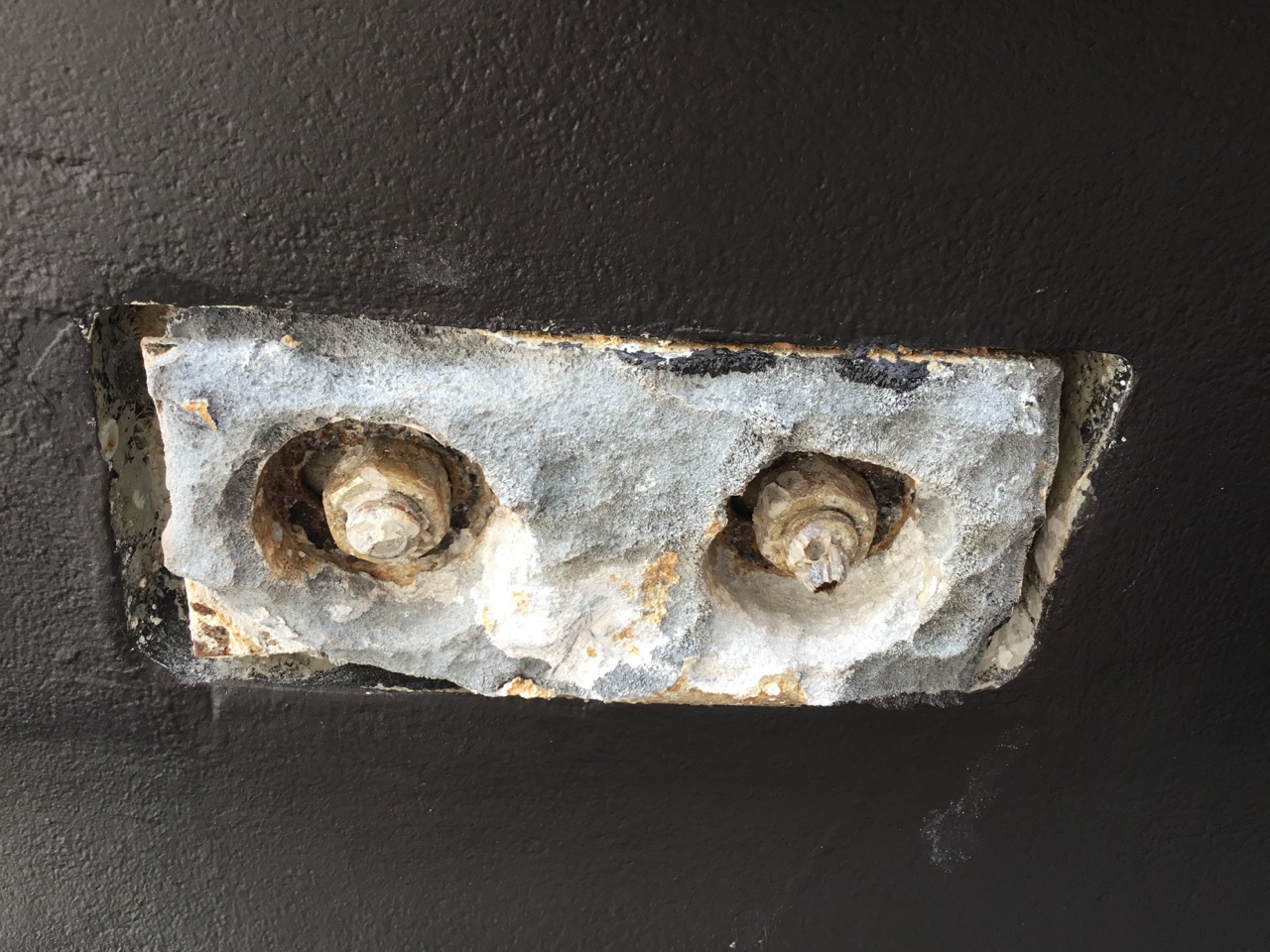
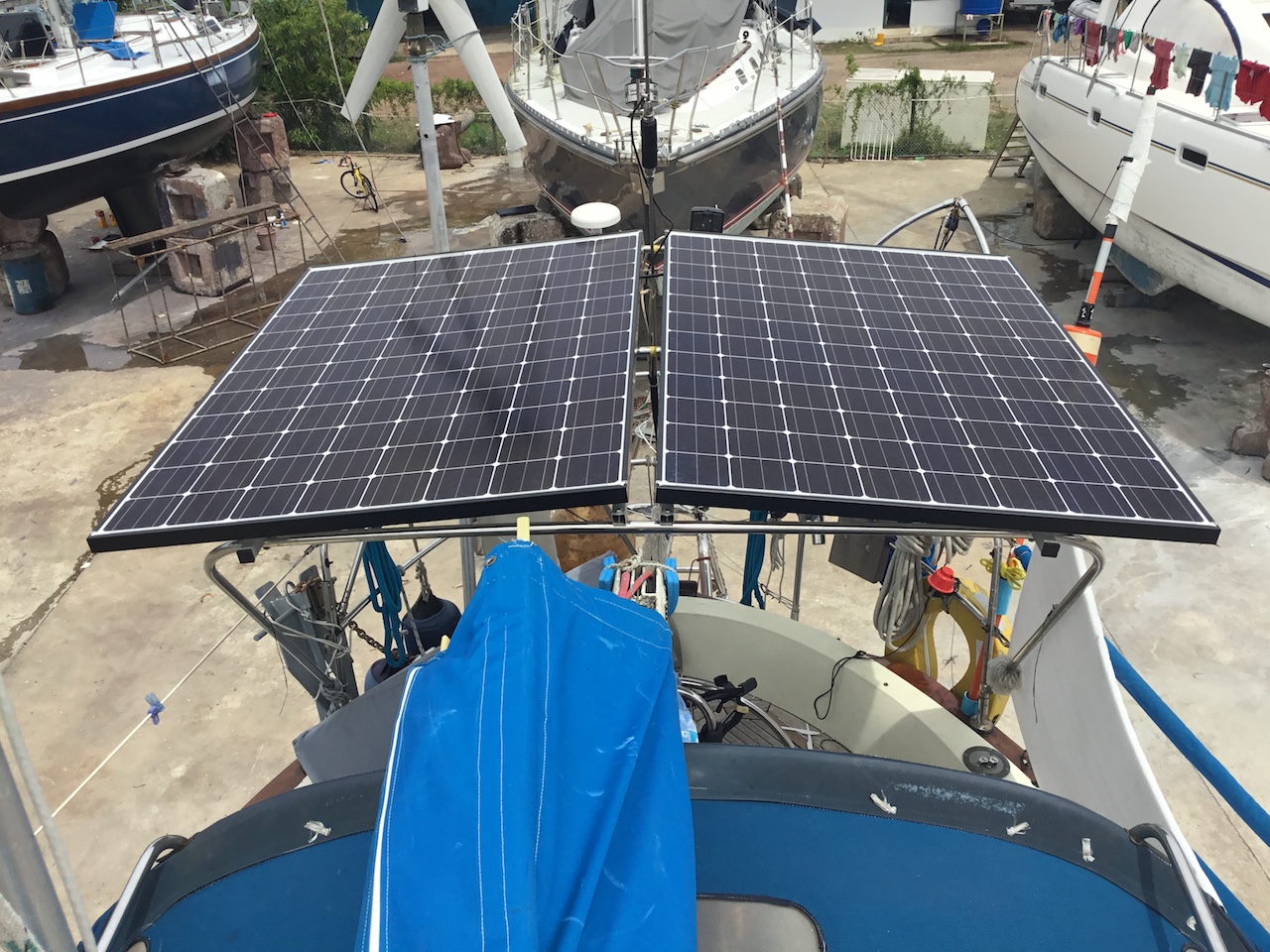
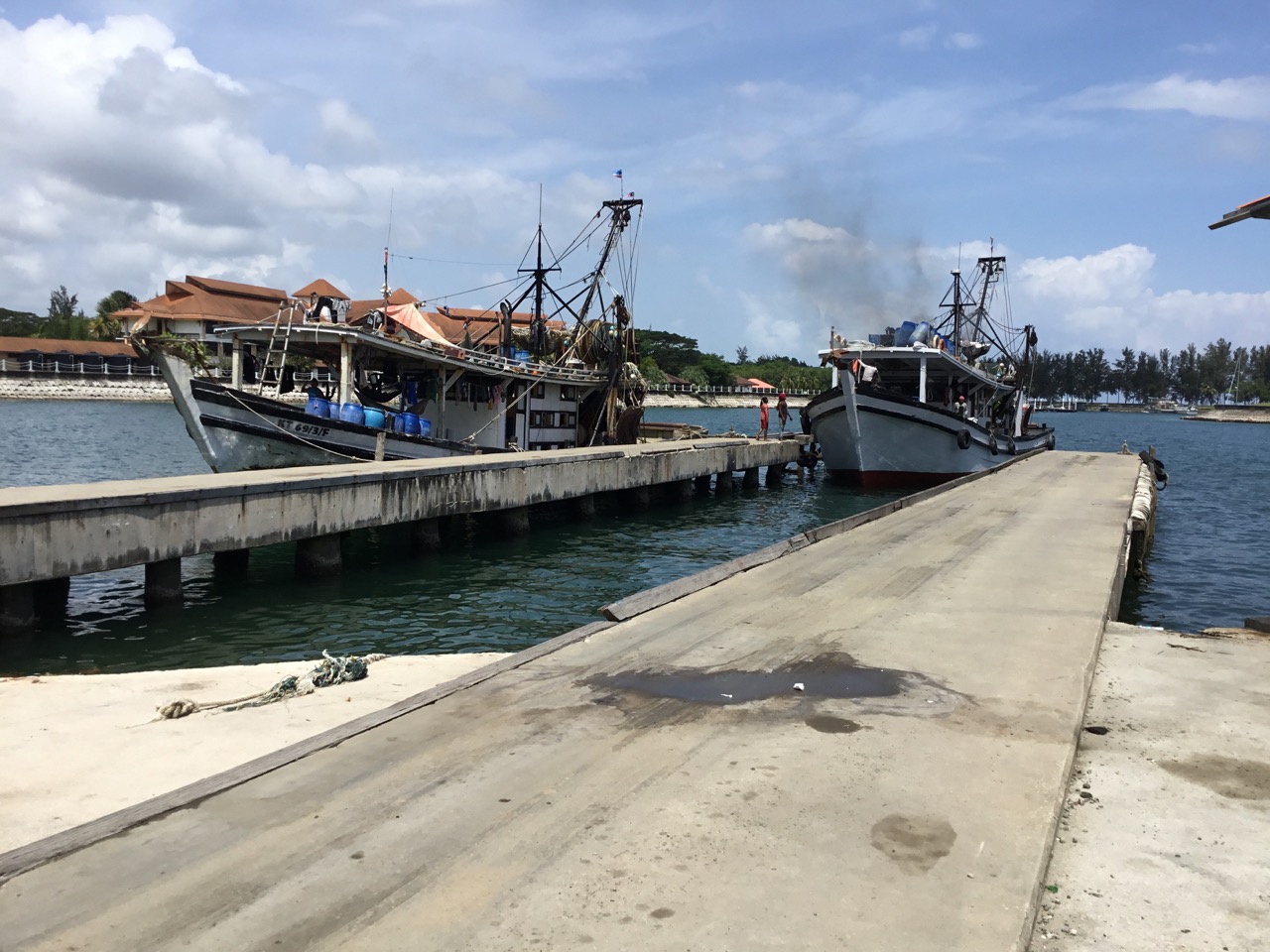
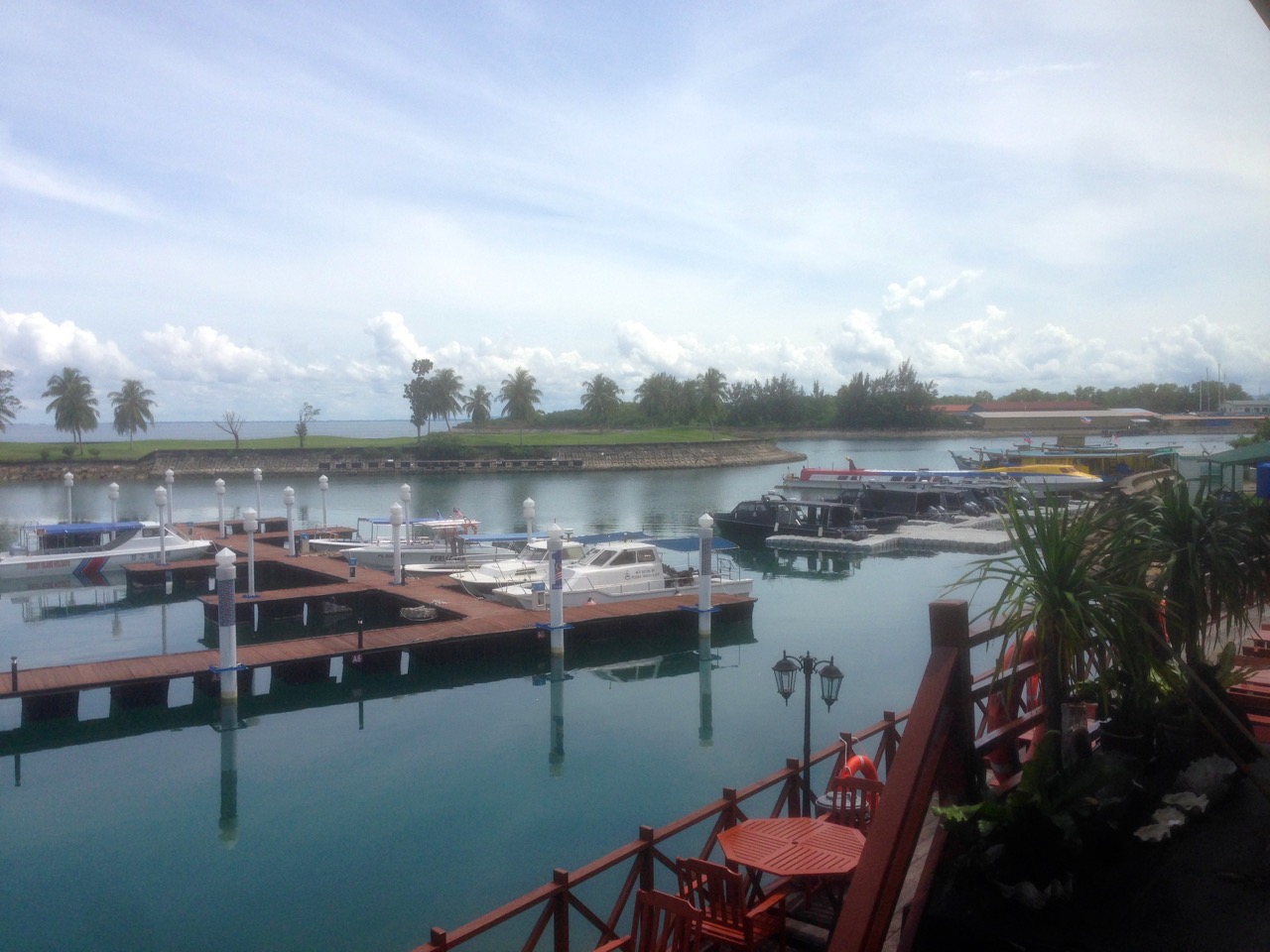 There’s a lovely little marina at the other end from the yard, and you can tie up to mooring bouys here for free. It’s very laid back, the marina has a nice little cafe, and a few berths, but it’s a low key affair.
There’s a lovely little marina at the other end from the yard, and you can tie up to mooring bouys here for free. It’s very laid back, the marina has a nice little cafe, and a few berths, but it’s a low key affair.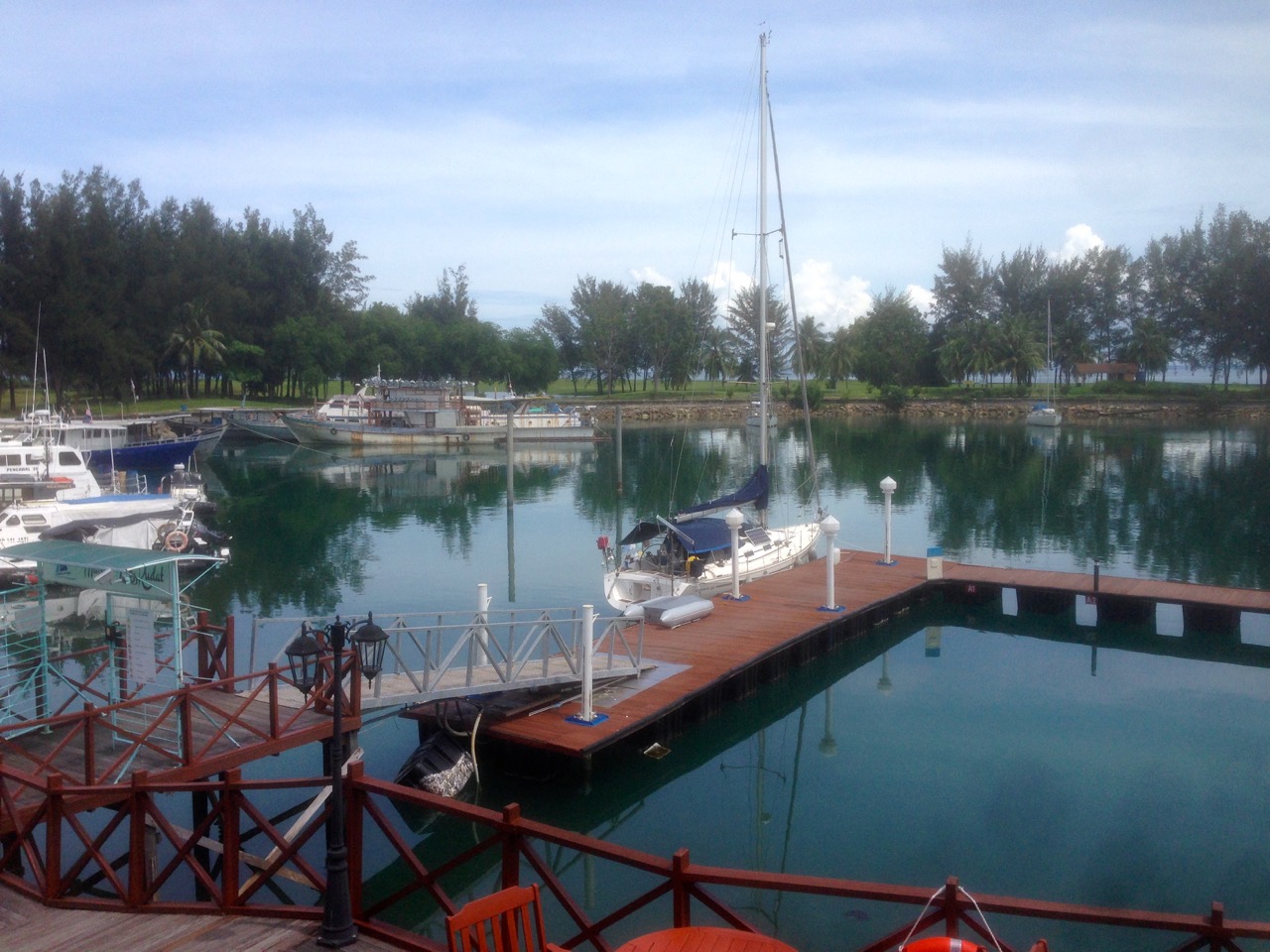


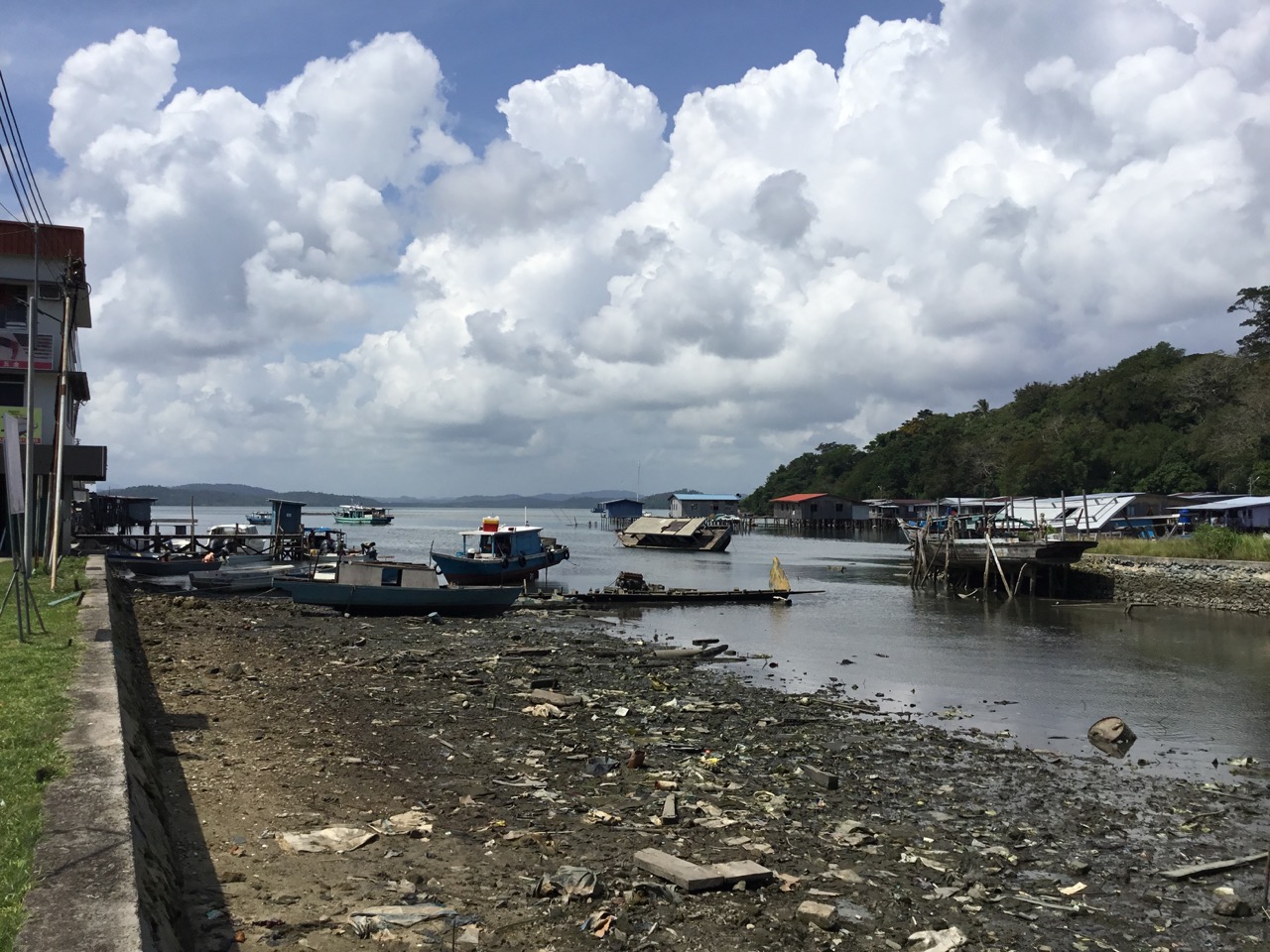 Mostly the town is home to a fleet of fishing boats, many of them squid boats. I had one of the crew help me choose the best lure for catching Squid today. I have restocked on lures, lines, wires, hooks etc. I fully expect to have a full freezer of fish by the time I arrive in Labuan in a weeks time.
Mostly the town is home to a fleet of fishing boats, many of them squid boats. I had one of the crew help me choose the best lure for catching Squid today. I have restocked on lures, lines, wires, hooks etc. I fully expect to have a full freezer of fish by the time I arrive in Labuan in a weeks time.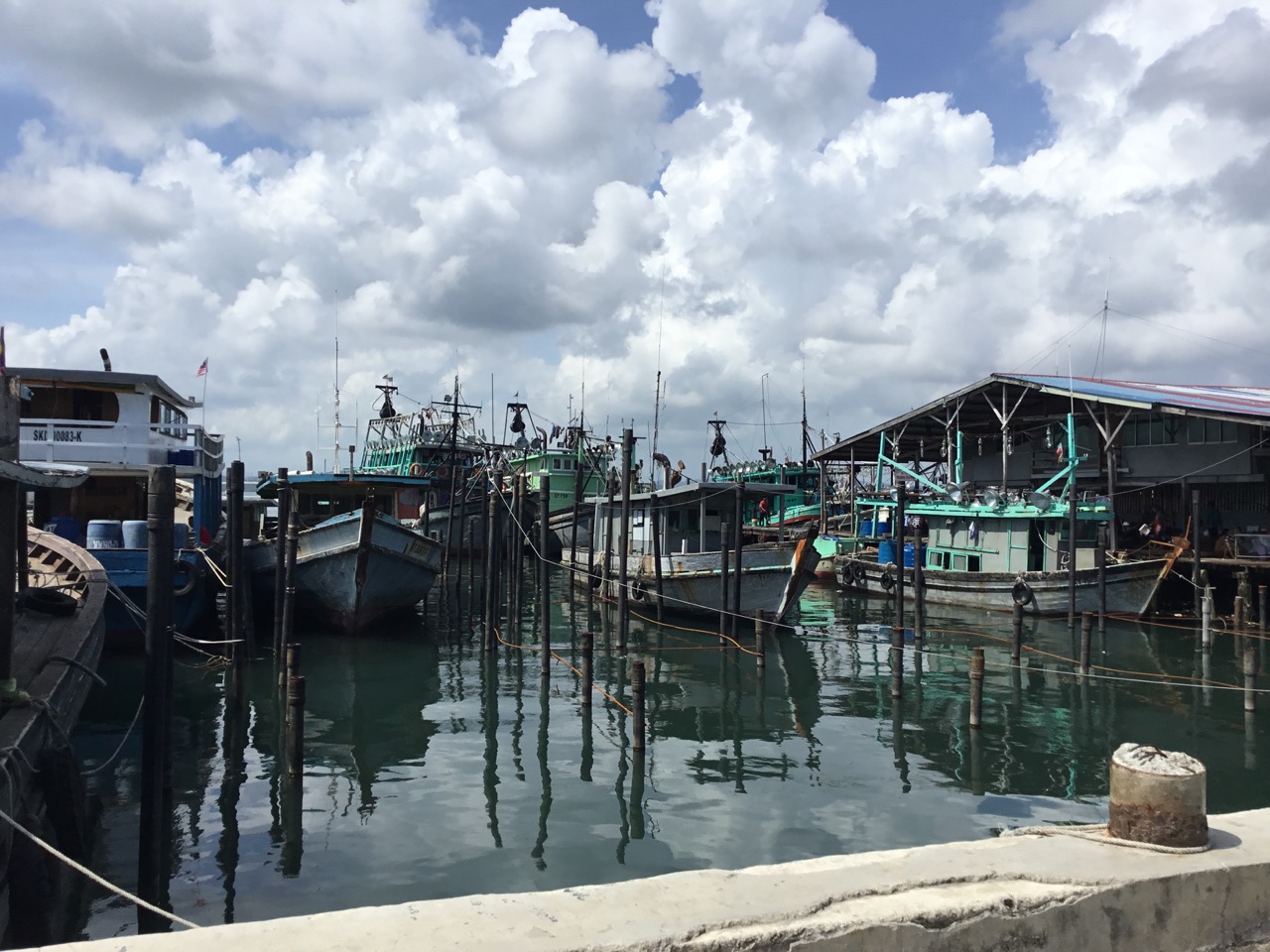
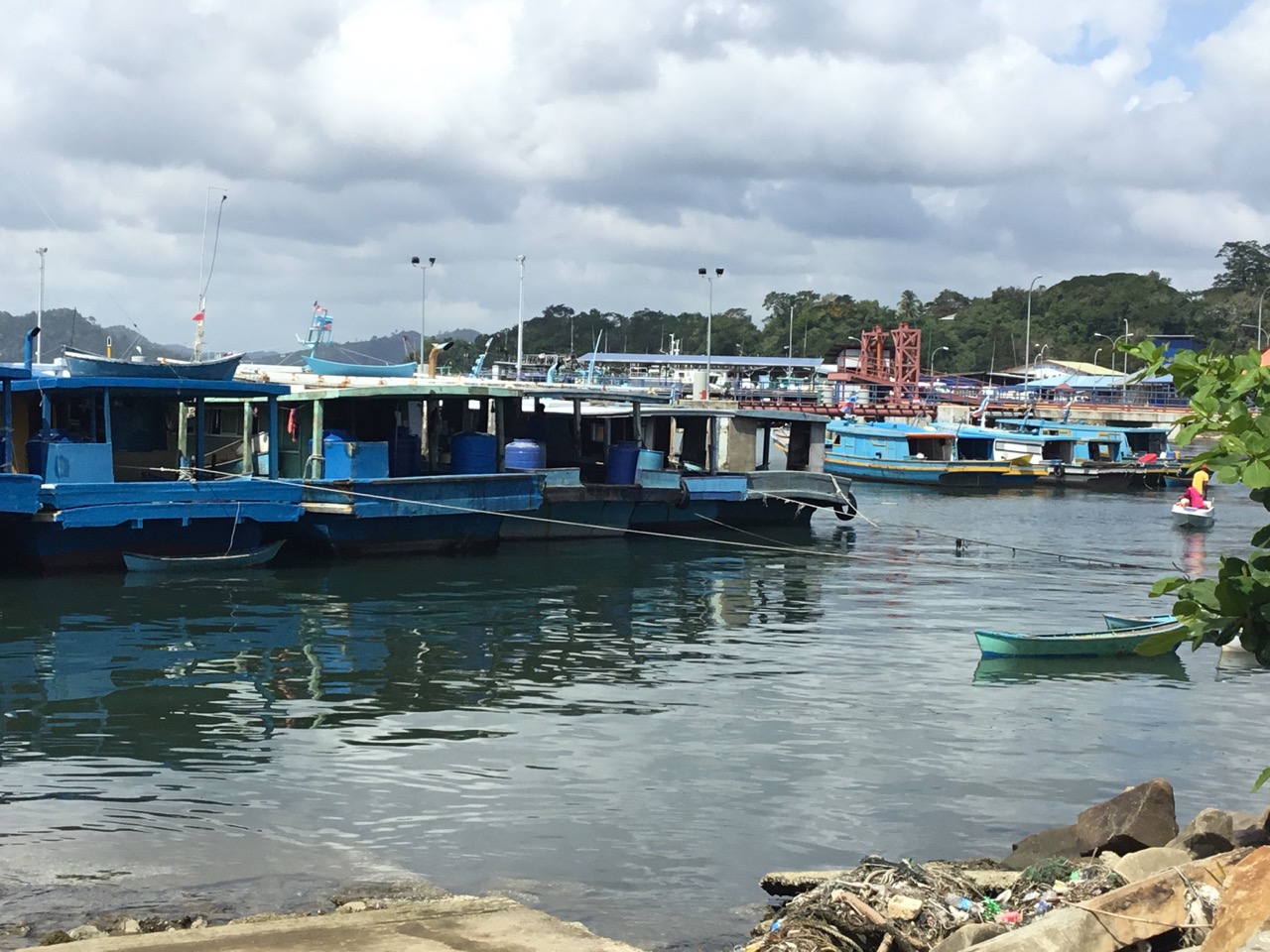
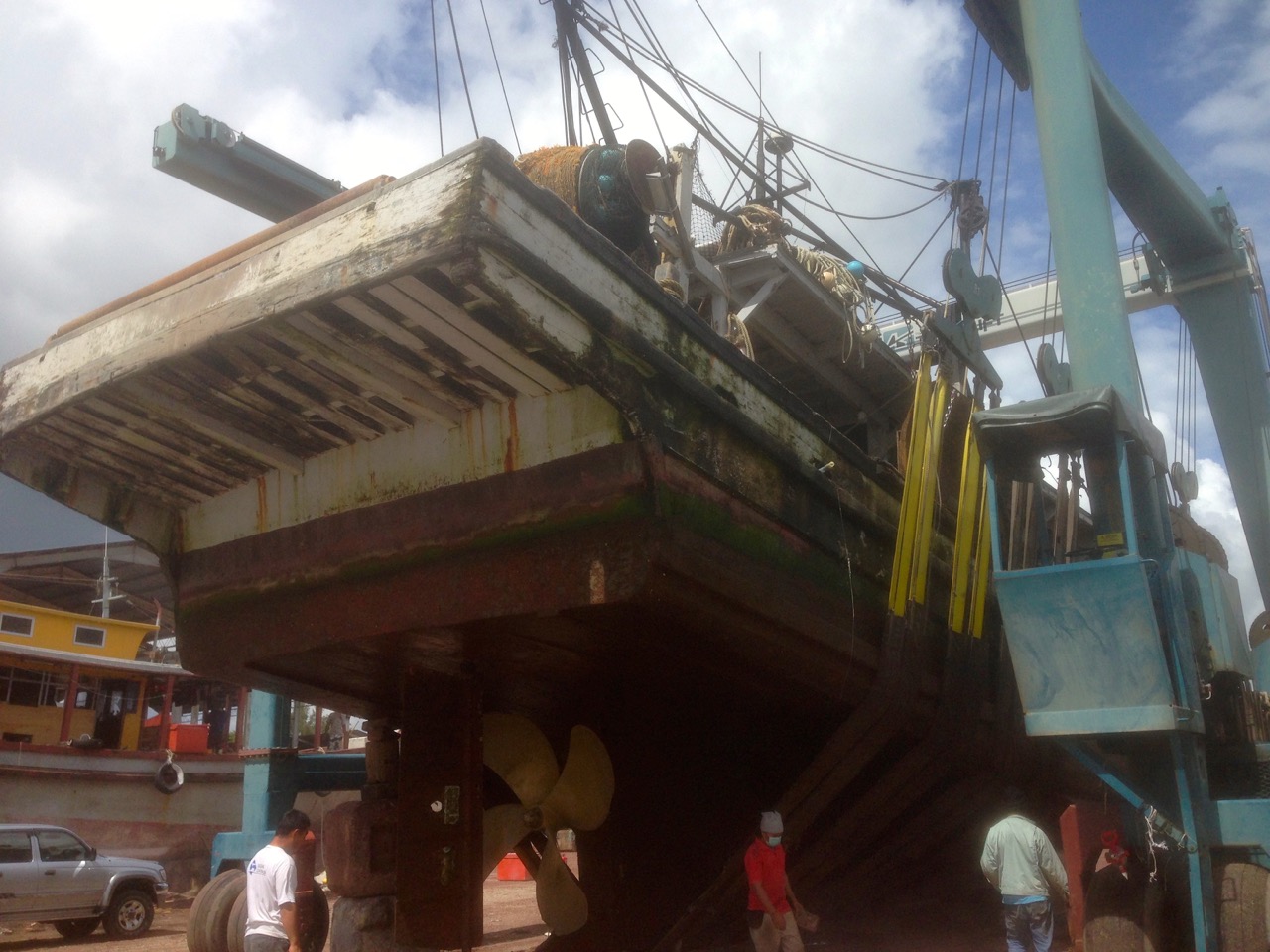 Of course, the boat has been quite a tip the last week, but all the jobs are done now, so I can start tidying up. I gave my three old solar panels away to some French cruisers who are in the yard here.
Of course, the boat has been quite a tip the last week, but all the jobs are done now, so I can start tidying up. I gave my three old solar panels away to some French cruisers who are in the yard here.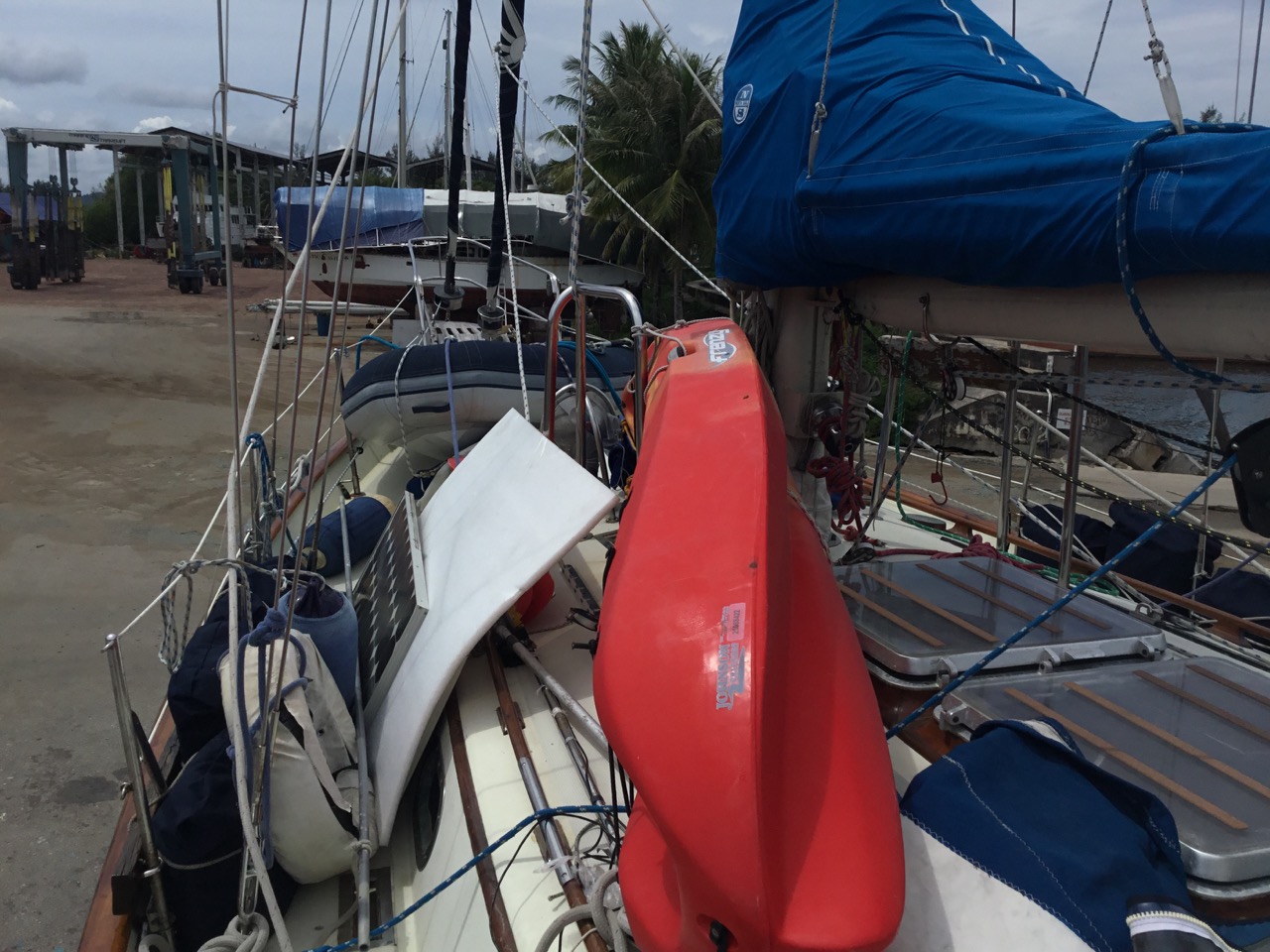 So I built a mockup of the frame for the solar panels to sit on first, I found a double glazing shop that sold me a stack of aluminium extrusion, box shape, which I used. I had planned to have it welded together, but the hardware store next door had a good supply of stainless steel bolts at a very very reasonable price, so I bolted it all together, with the thought of maybe welding it later. I have since decided that bolts are better, and will have more give than a weld as the frame comes under stress.
So I built a mockup of the frame for the solar panels to sit on first, I found a double glazing shop that sold me a stack of aluminium extrusion, box shape, which I used. I had planned to have it welded together, but the hardware store next door had a good supply of stainless steel bolts at a very very reasonable price, so I bolted it all together, with the thought of maybe welding it later. I have since decided that bolts are better, and will have more give than a weld as the frame comes under stress.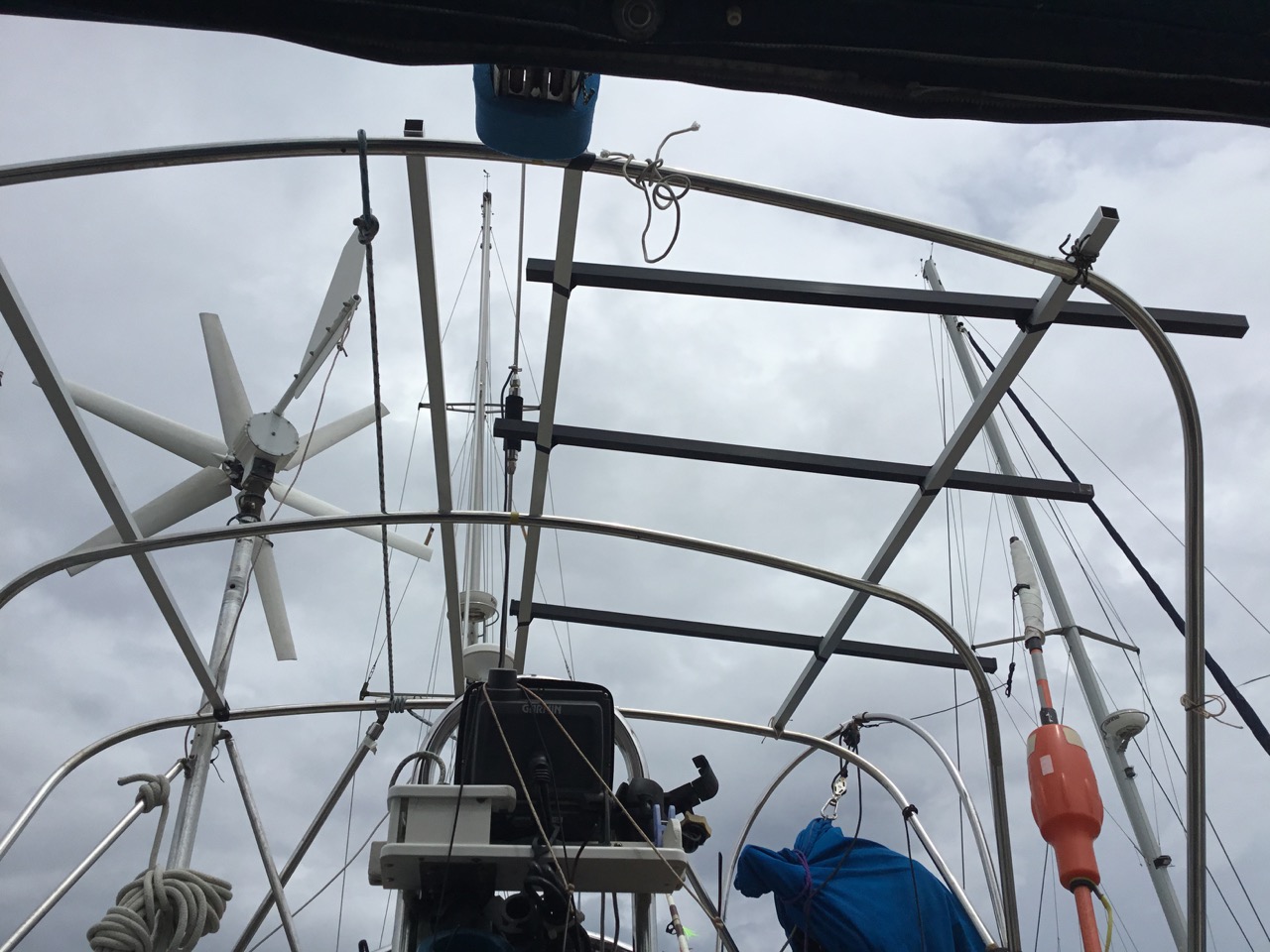 With a little help from Brent, a Brit on the catamaran behind me, I got the new panels mounted and bolted down. I can’t find supply of jointing compound anywhere. I hope they have some in America 😉
With a little help from Brent, a Brit on the catamaran behind me, I got the new panels mounted and bolted down. I can’t find supply of jointing compound anywhere. I hope they have some in America 😉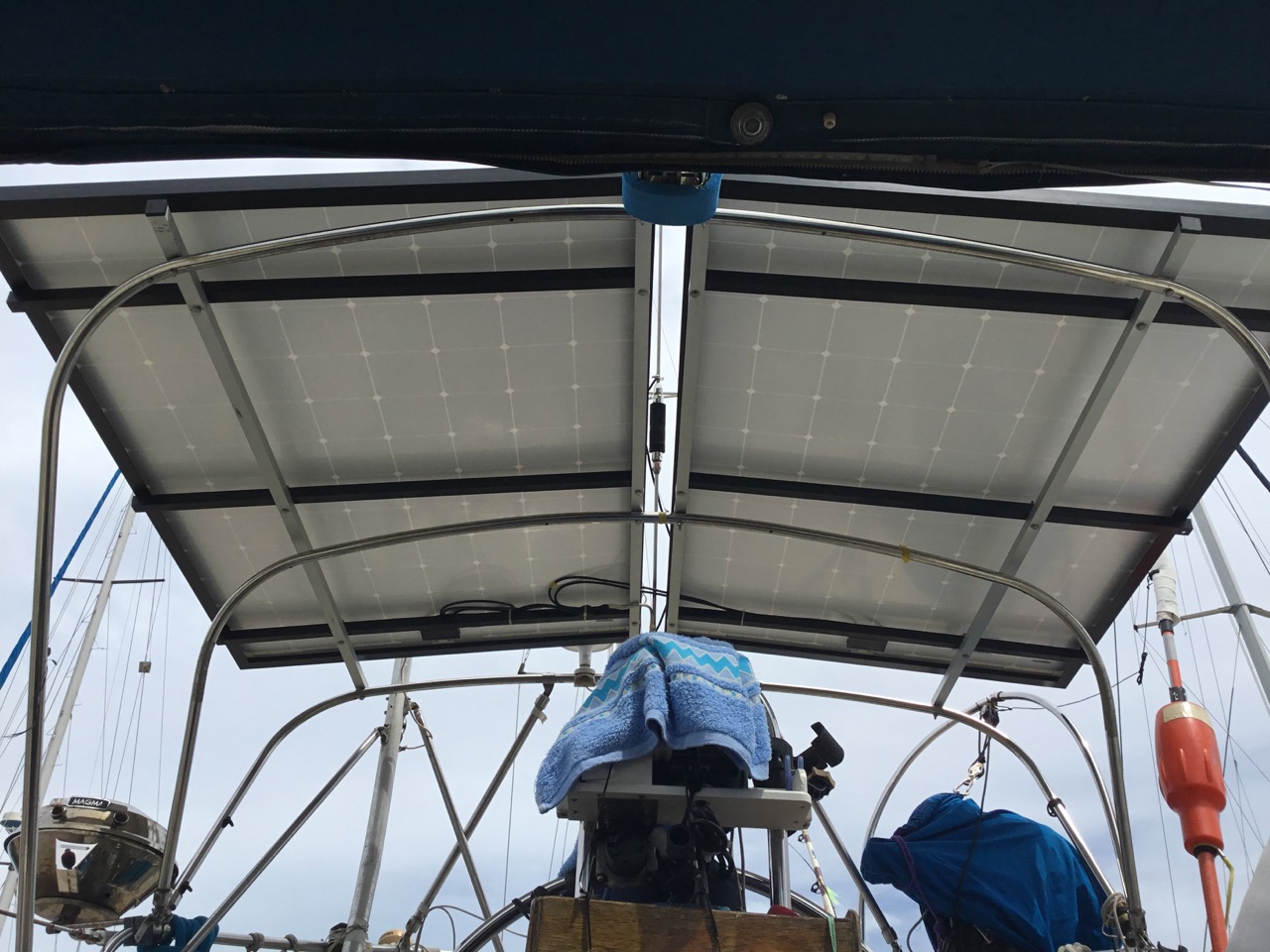
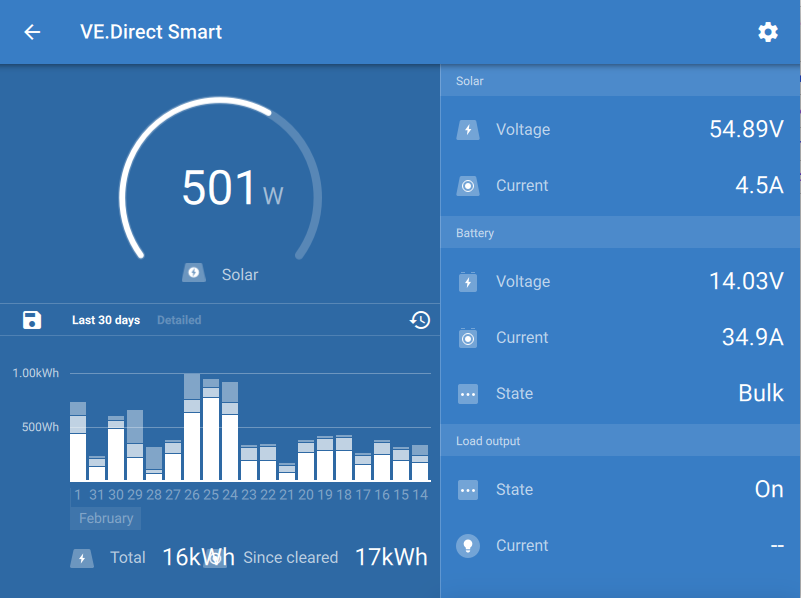 The panels are pumping 35A into the boat, I had to put every 12V device on, lights, deck lights, radar, fans fridge etc to get this up, as the batteries wouldn’t take more than 20-25A. I expect I could get 40A if needed, but at the moment, I have had the mains charger turned off for a few days, and I find the batteries are fully recharged from the evening/nights drain by about 10AM. At 07:30, not long after sunrise, with the sun low in the sky, they are providing 10A. I expect that in the northern latitudes, they will perform less well, but will be more than enough. I’m keen to find out.
The panels are pumping 35A into the boat, I had to put every 12V device on, lights, deck lights, radar, fans fridge etc to get this up, as the batteries wouldn’t take more than 20-25A. I expect I could get 40A if needed, but at the moment, I have had the mains charger turned off for a few days, and I find the batteries are fully recharged from the evening/nights drain by about 10AM. At 07:30, not long after sunrise, with the sun low in the sky, they are providing 10A. I expect that in the northern latitudes, they will perform less well, but will be more than enough. I’m keen to find out.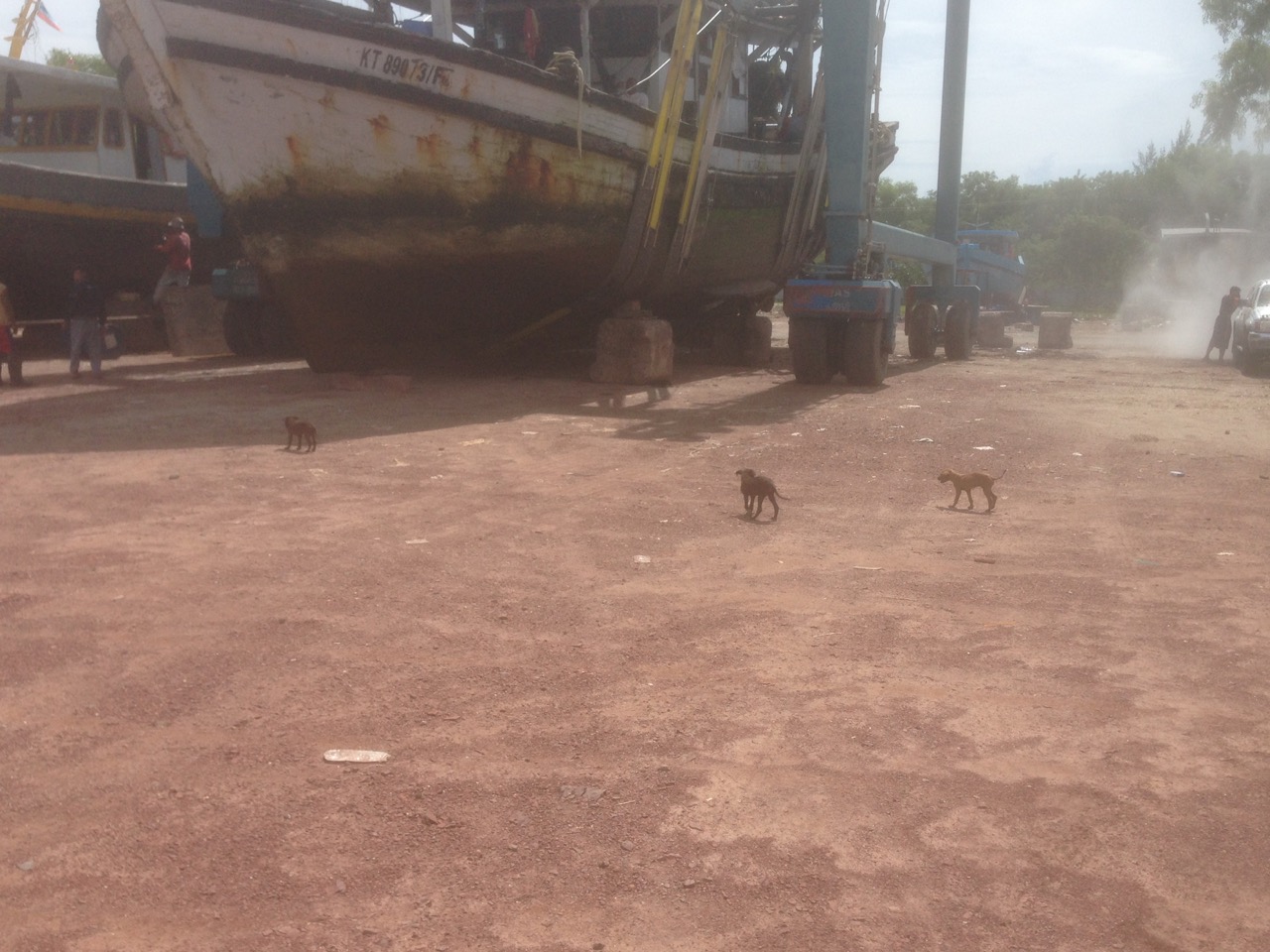 I had booked the 8 AM slot for launch on Monday, but later realised that I had to go to three offices to checkout, harbour master, immigration and customs. I have to get my passport stamped to leave Sabah to travel to Labuan, both Malaysia, but different states. I don’t think people back home fully appreciate the benefits of freedom of movement.
I had booked the 8 AM slot for launch on Monday, but later realised that I had to go to three offices to checkout, harbour master, immigration and customs. I have to get my passport stamped to leave Sabah to travel to Labuan, both Malaysia, but different states. I don’t think people back home fully appreciate the benefits of freedom of movement.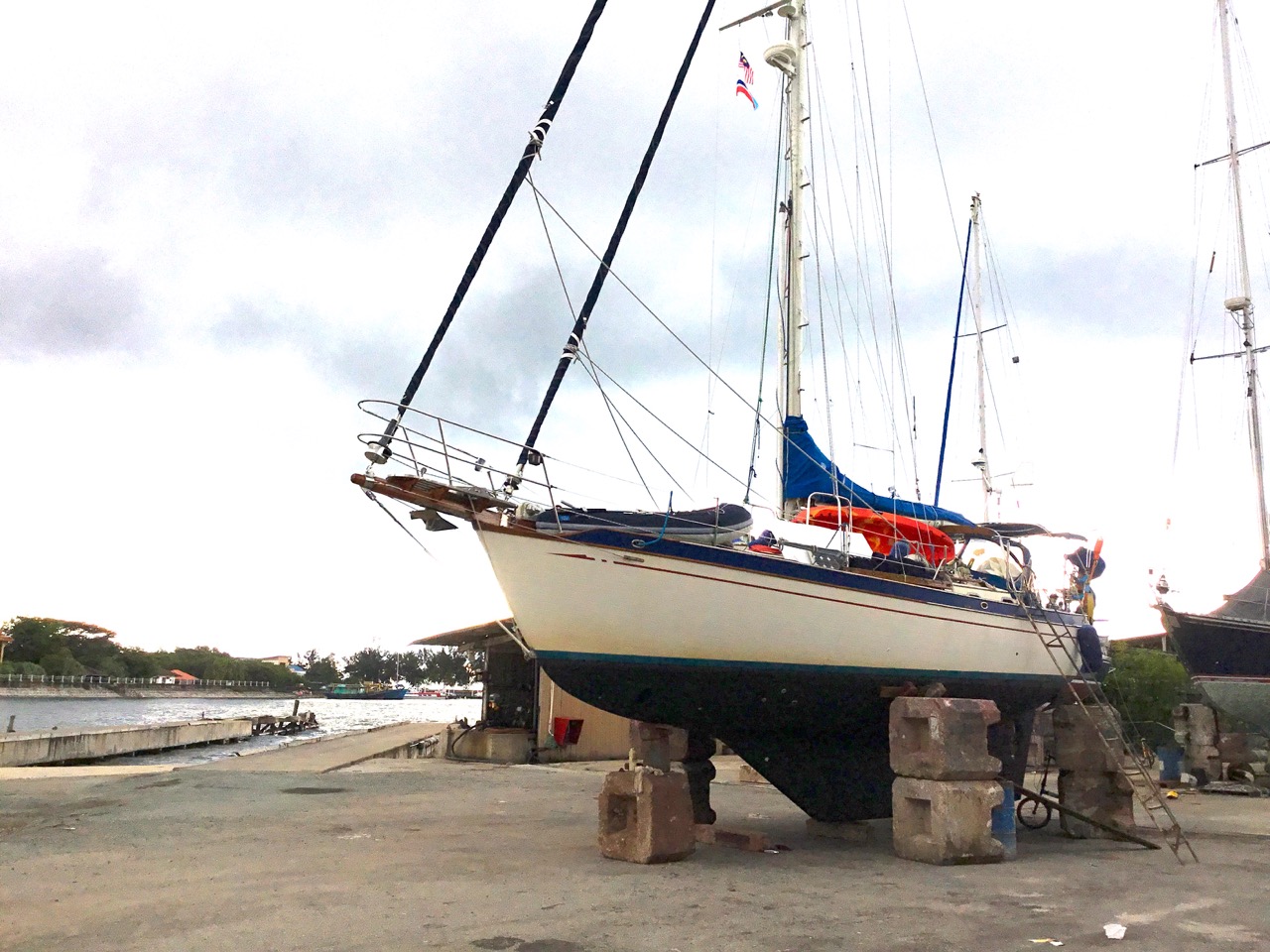

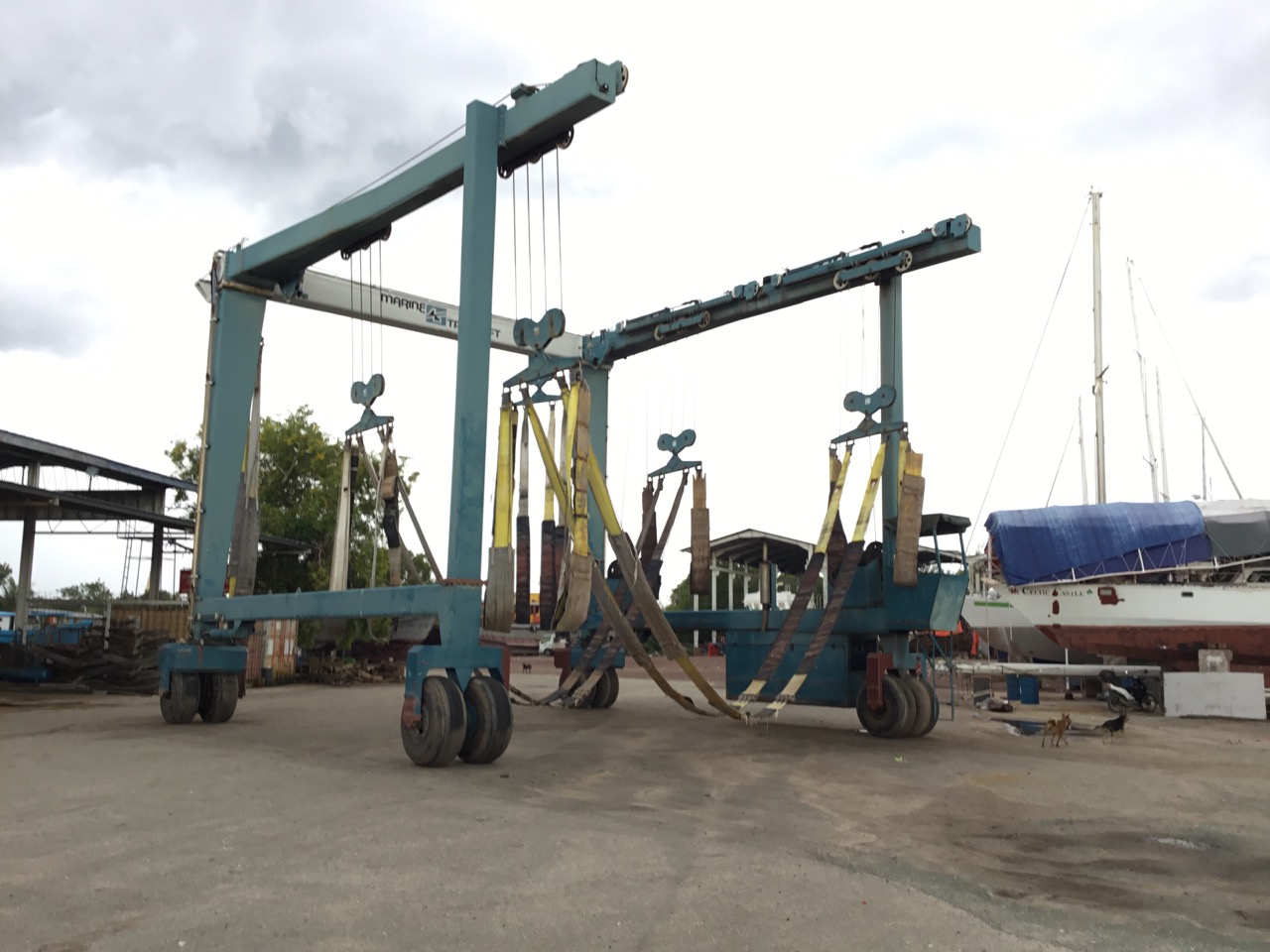 The view down the ladder, it’s a long way and I must remember not to trust the guard rails
The view down the ladder, it’s a long way and I must remember not to trust the guard rails


 exposed iron ballast
exposed iron ballast
 The Machine shop
The Machine shop

 The Prop Making machine. I have to see how this works
The Prop Making machine. I have to see how this works


 The drums below hold the resin they use
The drums below hold the resin they use





 Other boats resting here
Other boats resting here









 The workers canteen
The workers canteen



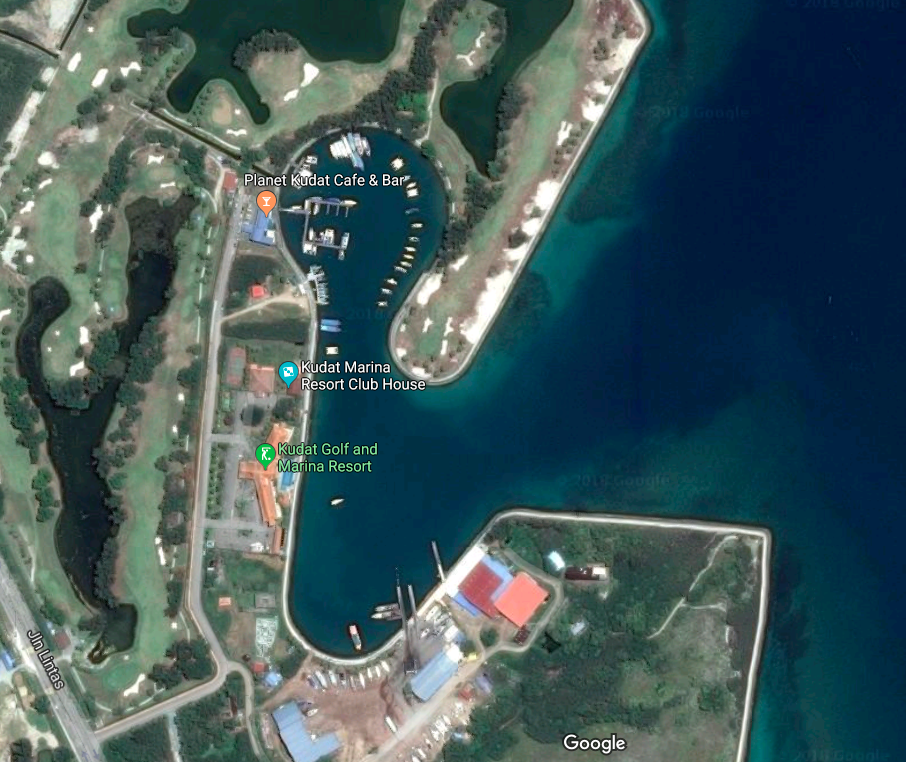 More rain, and eventually after lunch I got through to the yard who agreed to take me out in 15 minutes, which was great as I had originally booked a slot for tomorrow. All was going great, and I made it into the slings of the travel hoist without any effort at all, but I was worried that the rear sling was too far back and might be catching the rudder, I leaned over the wire lifeline in the cockpit to see if I could see it, but couldn’t, I leaned more, and further out when I suddenly find myself doing a somersault over the side of the boat and into the water, left hand immediately goes to left pocket, and sure enough my iPhone is there, bugger! looking up I can see the snapped life line dangling, I pull myself up using it, then notice both the lifelines are in the water. I have about ten people from the yard all looking down at me now. I have fallen off pontoons more than once in my life, but I think this is the first time I ever fell off a boat. How embarrassing. I had to swim around to the stern of the boat and climb back on board using the monitor wind steering frame. Then I have to act casual and make out like this is standard operating procedure for Brits arriving at a new port 🙂
More rain, and eventually after lunch I got through to the yard who agreed to take me out in 15 minutes, which was great as I had originally booked a slot for tomorrow. All was going great, and I made it into the slings of the travel hoist without any effort at all, but I was worried that the rear sling was too far back and might be catching the rudder, I leaned over the wire lifeline in the cockpit to see if I could see it, but couldn’t, I leaned more, and further out when I suddenly find myself doing a somersault over the side of the boat and into the water, left hand immediately goes to left pocket, and sure enough my iPhone is there, bugger! looking up I can see the snapped life line dangling, I pull myself up using it, then notice both the lifelines are in the water. I have about ten people from the yard all looking down at me now. I have fallen off pontoons more than once in my life, but I think this is the first time I ever fell off a boat. How embarrassing. I had to swim around to the stern of the boat and climb back on board using the monitor wind steering frame. Then I have to act casual and make out like this is standard operating procedure for Brits arriving at a new port 🙂
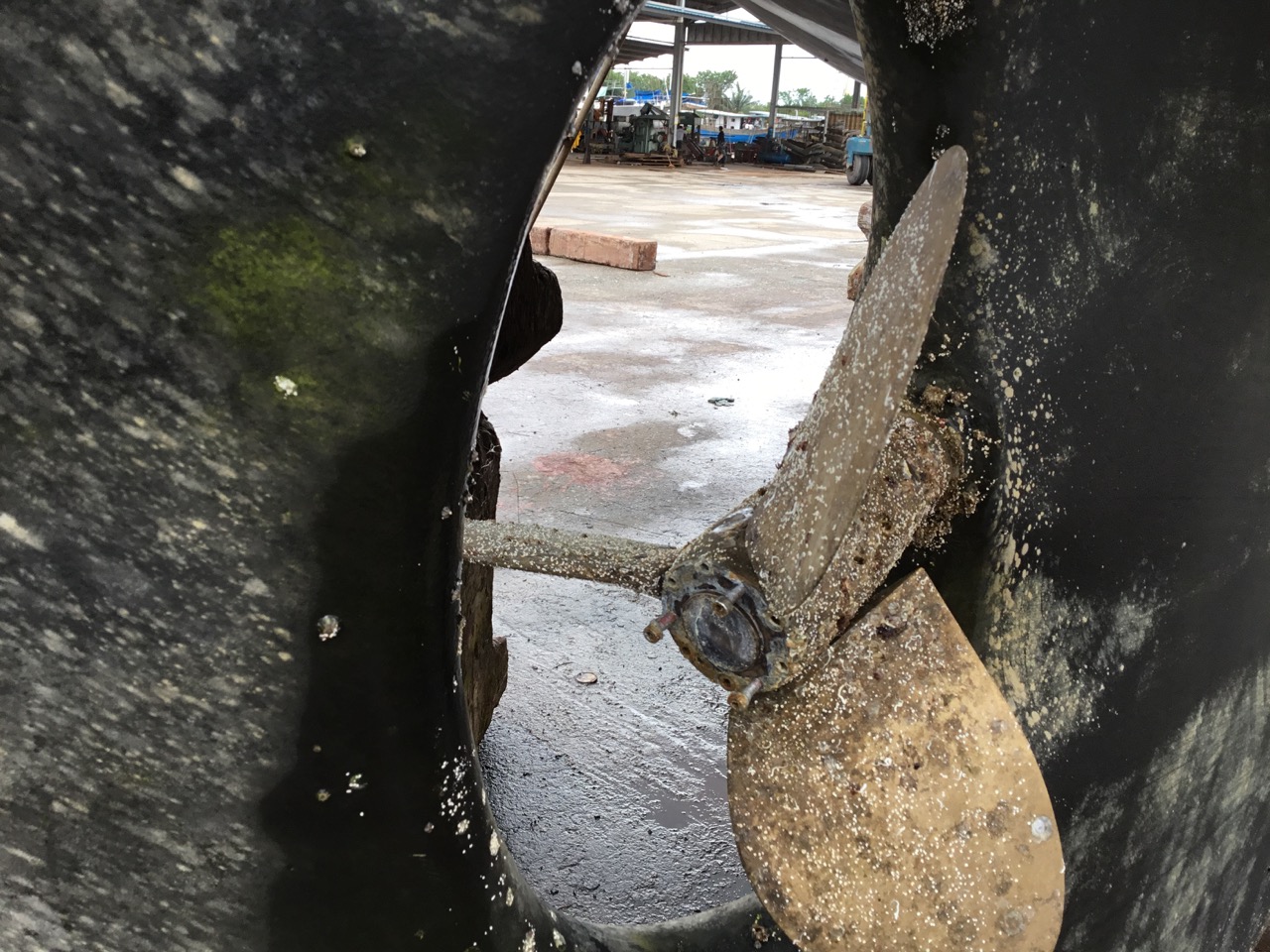
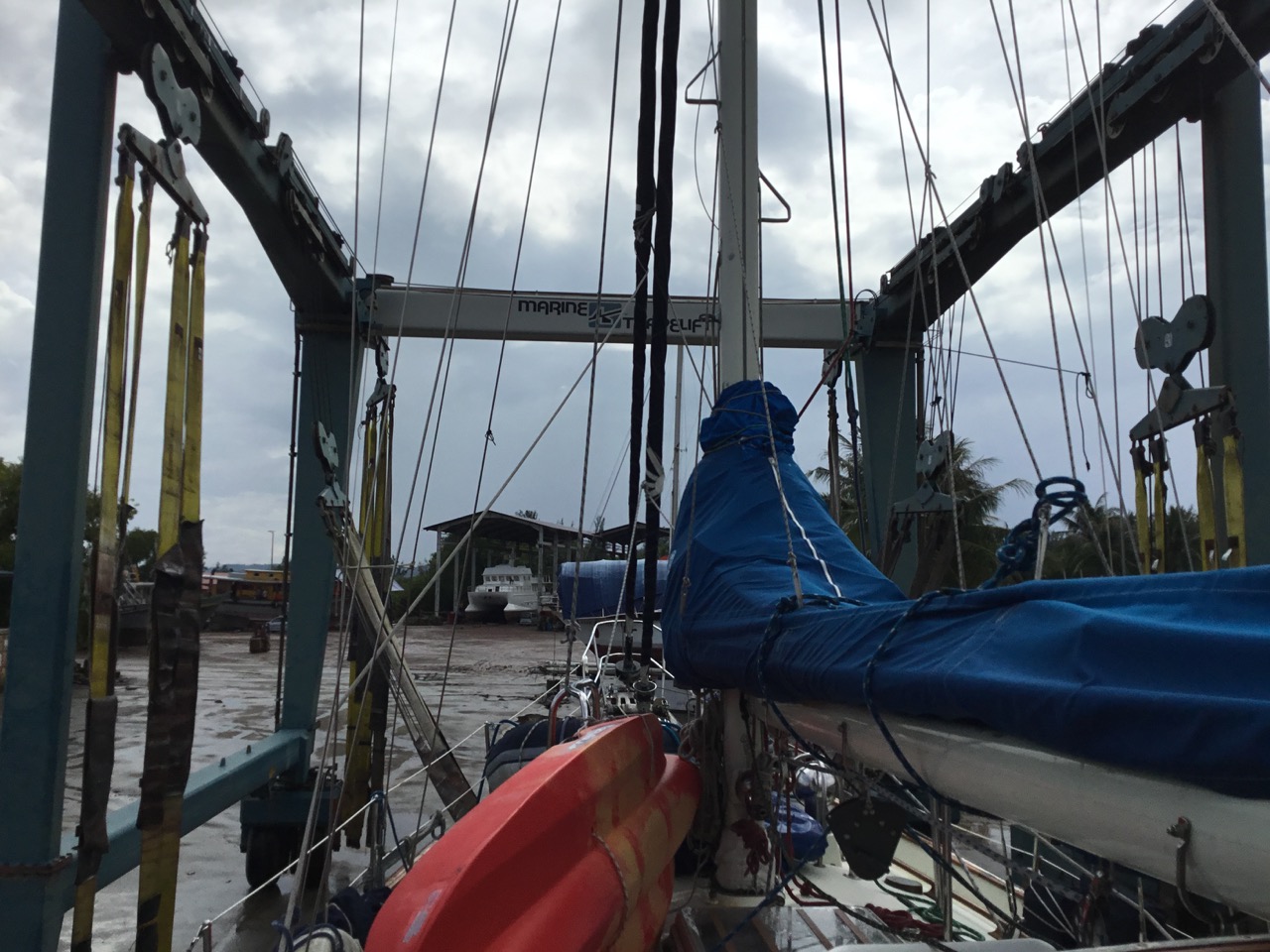

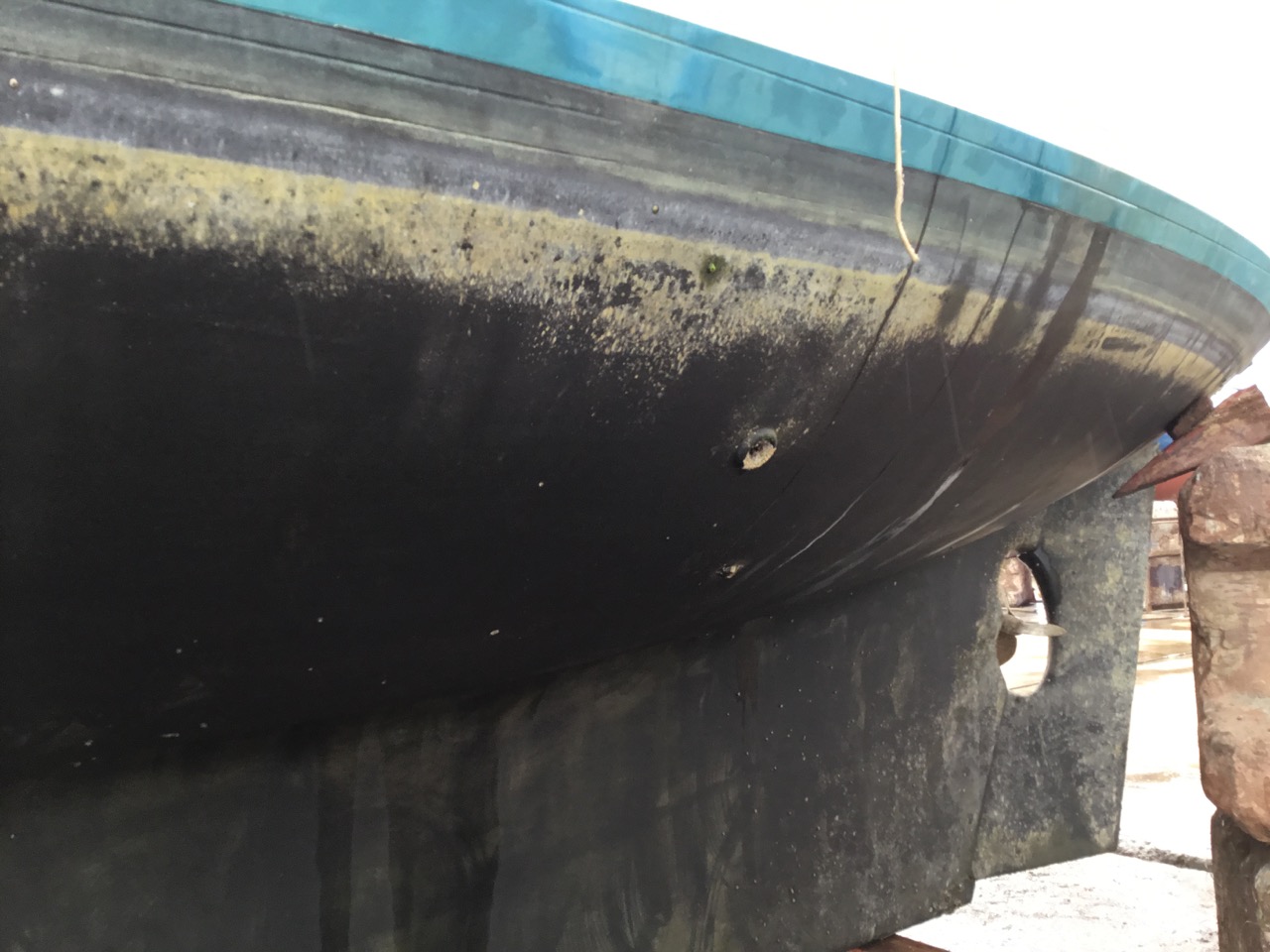
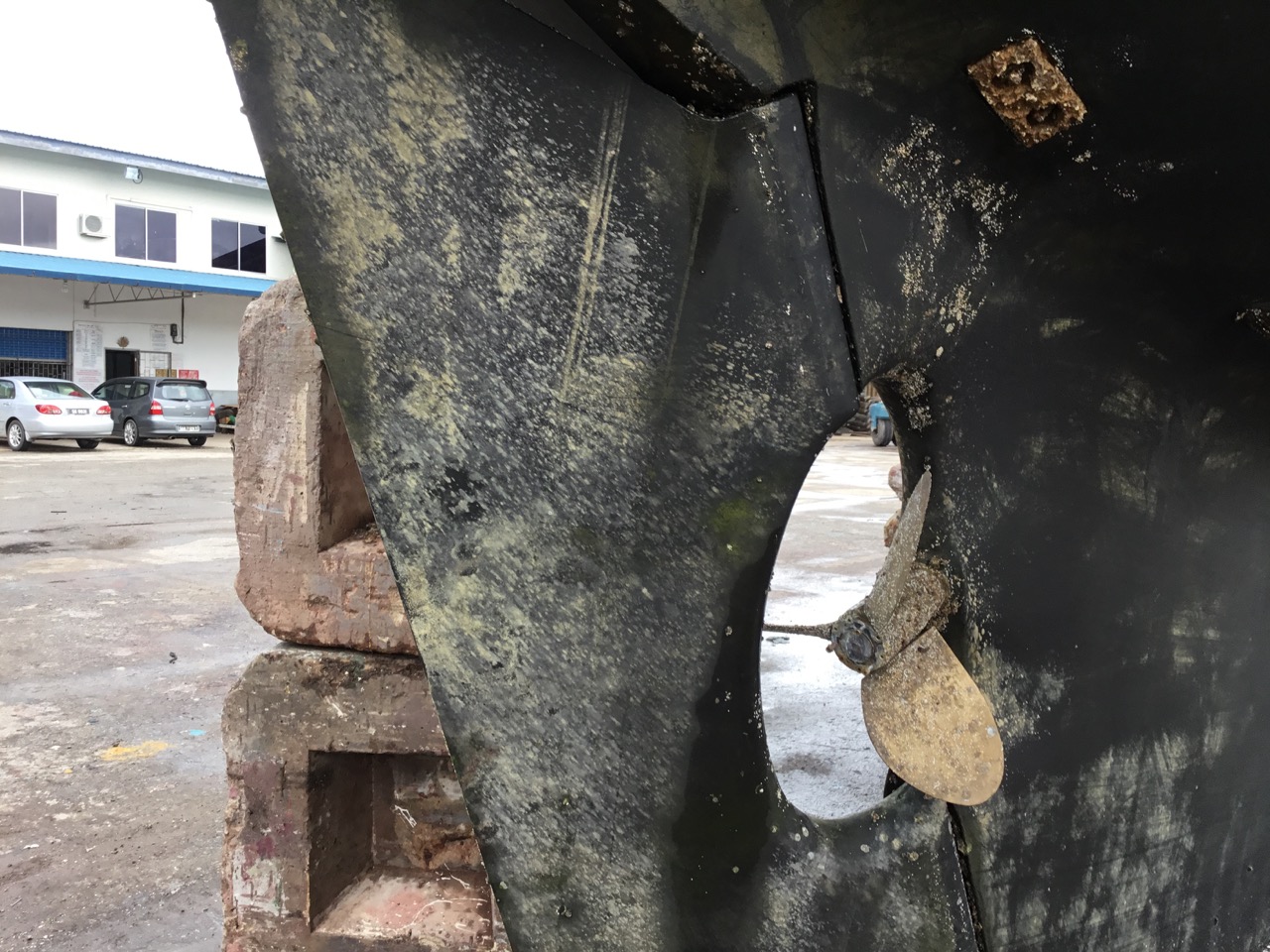
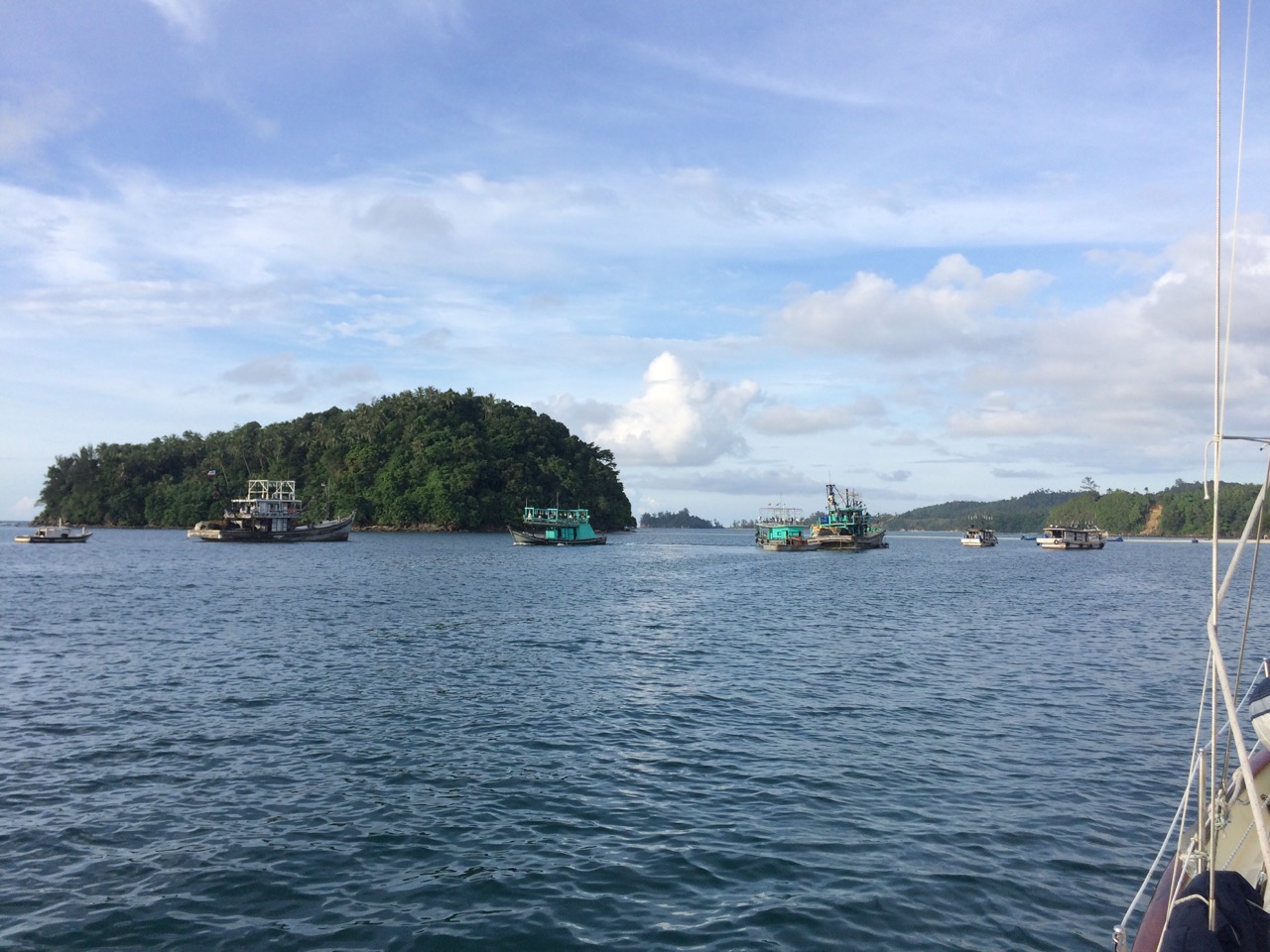
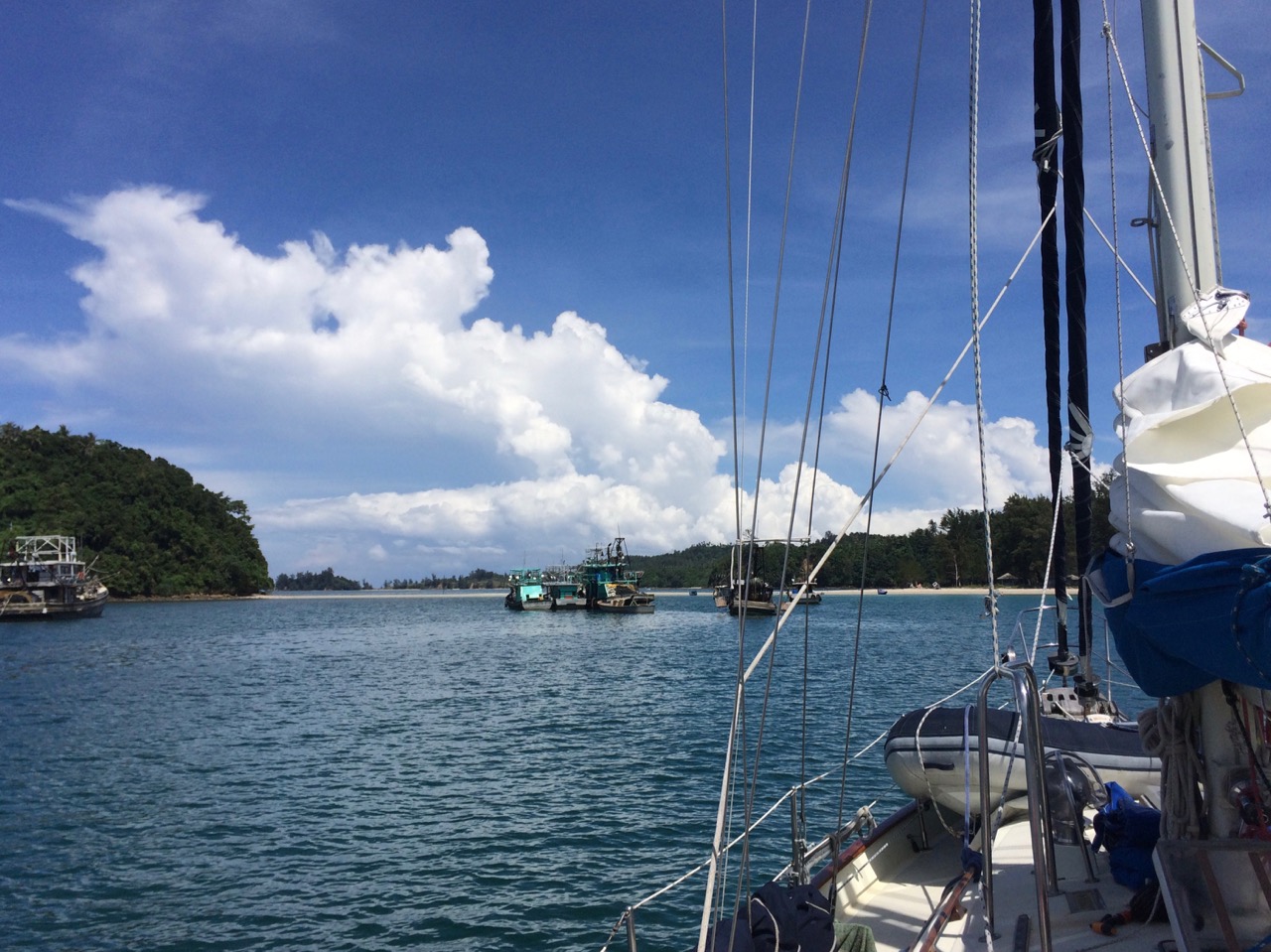
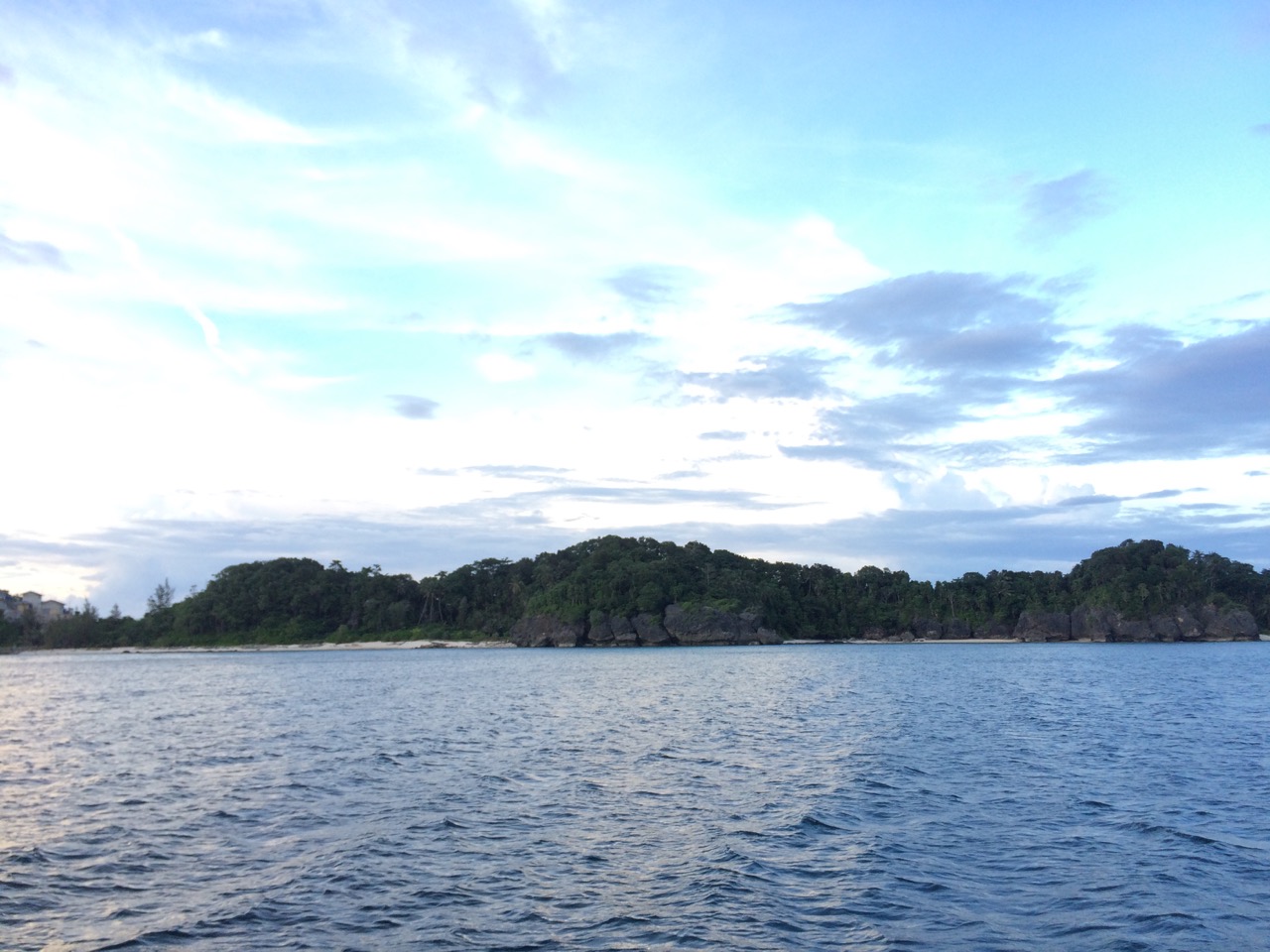 It was a bit of a slog, I left at 7am and arrived at 17:00 and spent 30 minutes trying to find a spot to anchor.
It was a bit of a slog, I left at 7am and arrived at 17:00 and spent 30 minutes trying to find a spot to anchor.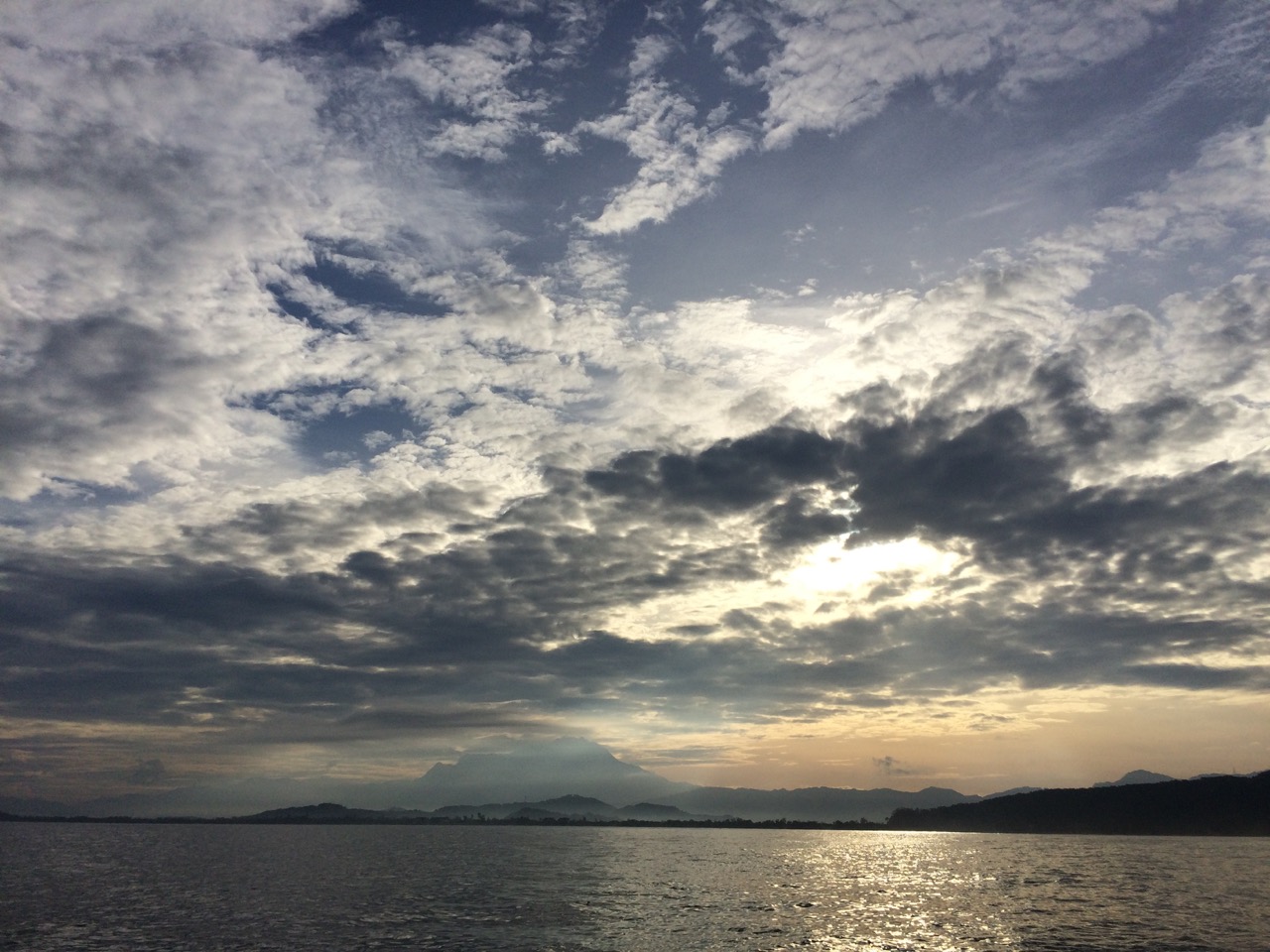 It was quite rough later on during the passage and I couldn’t motor then as the wind and waves were on the nose and slowed me to just 2 knots, so I had to tack back and forth for 4 hours, mostly steering by hand. It was while the boat was heeling heavily, and was racing along with a double reefed main and just the staysail, that I began to doubt the wind speed indicator, that was showing 10 knots of wind, and in fact, when I thought about it, it hadn’t been above 10 knots for a very long time. I expect it’s faulty and will have to be replaced.
It was quite rough later on during the passage and I couldn’t motor then as the wind and waves were on the nose and slowed me to just 2 knots, so I had to tack back and forth for 4 hours, mostly steering by hand. It was while the boat was heeling heavily, and was racing along with a double reefed main and just the staysail, that I began to doubt the wind speed indicator, that was showing 10 knots of wind, and in fact, when I thought about it, it hadn’t been above 10 knots for a very long time. I expect it’s faulty and will have to be replaced. You can see on the map below there are two islands, Besar and Kerchil, which means big and small. I went for the small one as it was recommended to anchor south of the lighthouse, however there isn’t a lighthouse here anymore, did they mean the new radar station? You can see on the google map how the two islands sit on a big oval lump of rock,.Closer to the shore, its solid shallow coral. I have a sonar depth sensor which shows me the sea floor surface, and I can usually spot rocky areas, and eventually I found a very flat area, dropped the hook, and went about setting it in, it was looking good until I upped the revs to test it, then it dragged along rock, and quickly came to a stop. It’s dug in now, but is it under a rock, or worse has the chain wrapped around a rock? I quickly dived over the side with my snorkel, but the light had almost gone, and I couldn’t see much, but it did look mostly sandy there with a few rocky bits. We shall see tomorrow at 7am, when I try to leave.
You can see on the map below there are two islands, Besar and Kerchil, which means big and small. I went for the small one as it was recommended to anchor south of the lighthouse, however there isn’t a lighthouse here anymore, did they mean the new radar station? You can see on the google map how the two islands sit on a big oval lump of rock,.Closer to the shore, its solid shallow coral. I have a sonar depth sensor which shows me the sea floor surface, and I can usually spot rocky areas, and eventually I found a very flat area, dropped the hook, and went about setting it in, it was looking good until I upped the revs to test it, then it dragged along rock, and quickly came to a stop. It’s dug in now, but is it under a rock, or worse has the chain wrapped around a rock? I quickly dived over the side with my snorkel, but the light had almost gone, and I couldn’t see much, but it did look mostly sandy there with a few rocky bits. We shall see tomorrow at 7am, when I try to leave.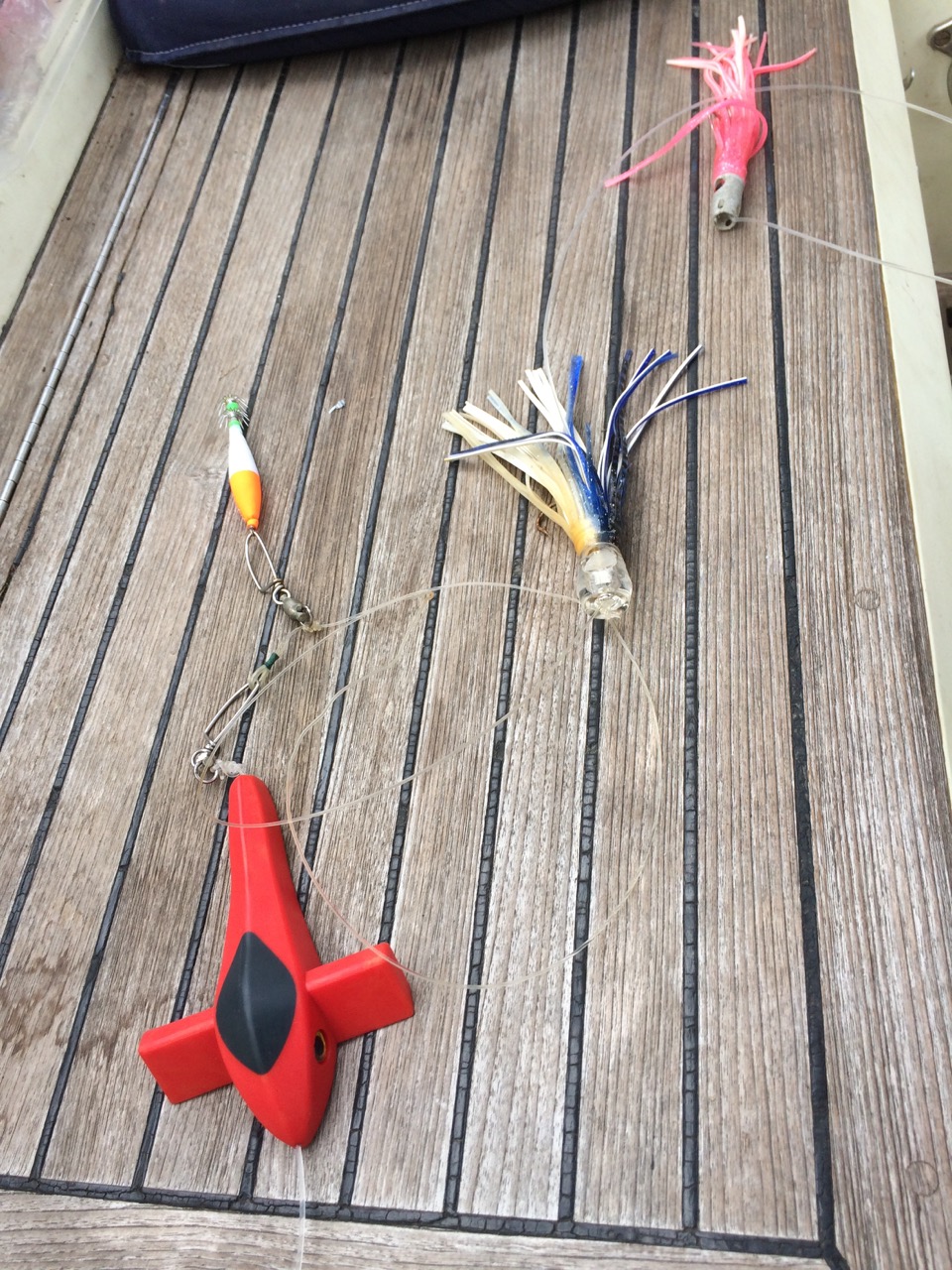 As you can see I have an assortment of plastic fish, but now the secret weapon is being deployed…
As you can see I have an assortment of plastic fish, but now the secret weapon is being deployed…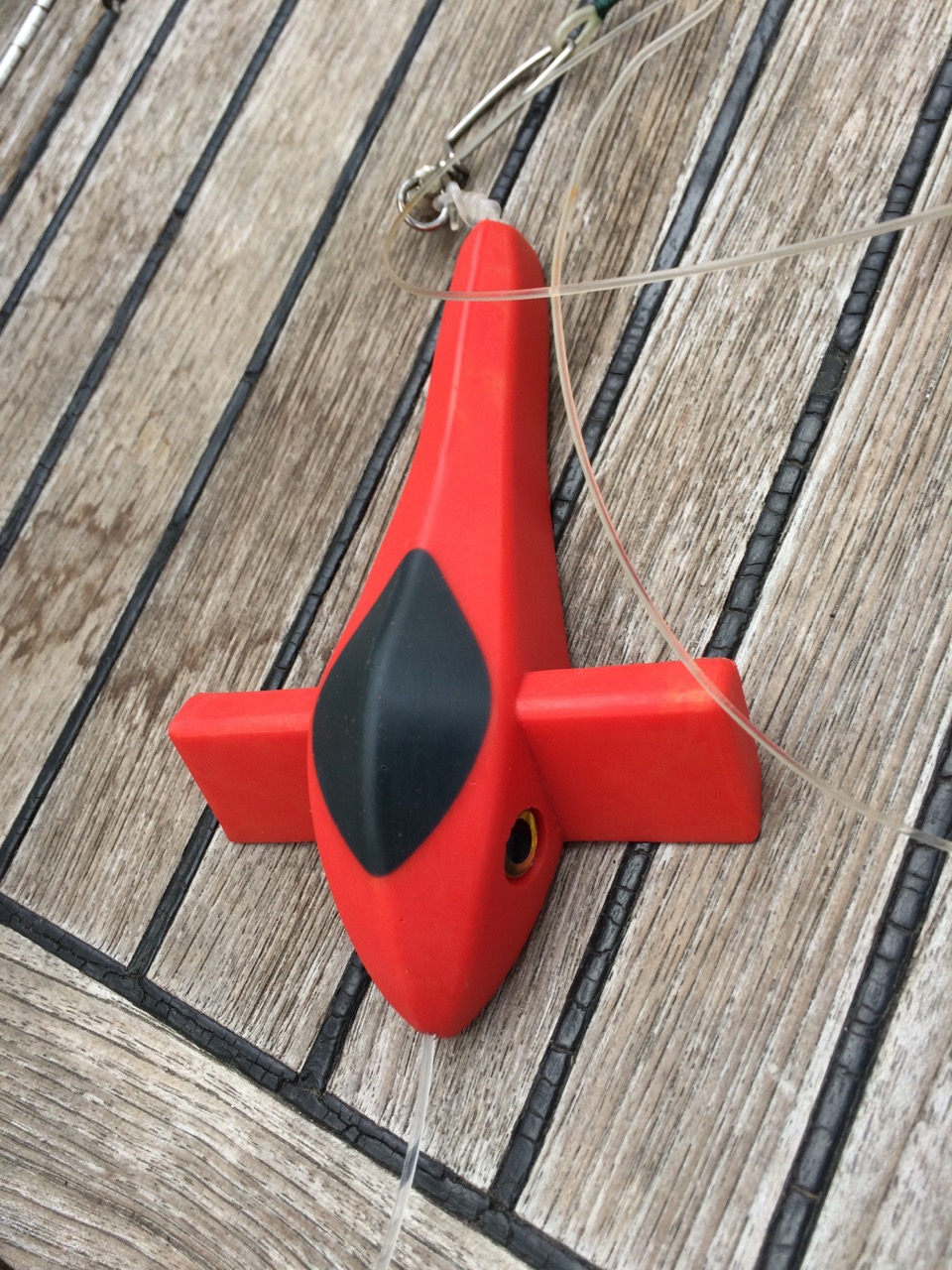 The aeroplane! I have been assured this will do the trick. I have three of them, so no more buying fish for me.
The aeroplane! I have been assured this will do the trick. I have three of them, so no more buying fish for me.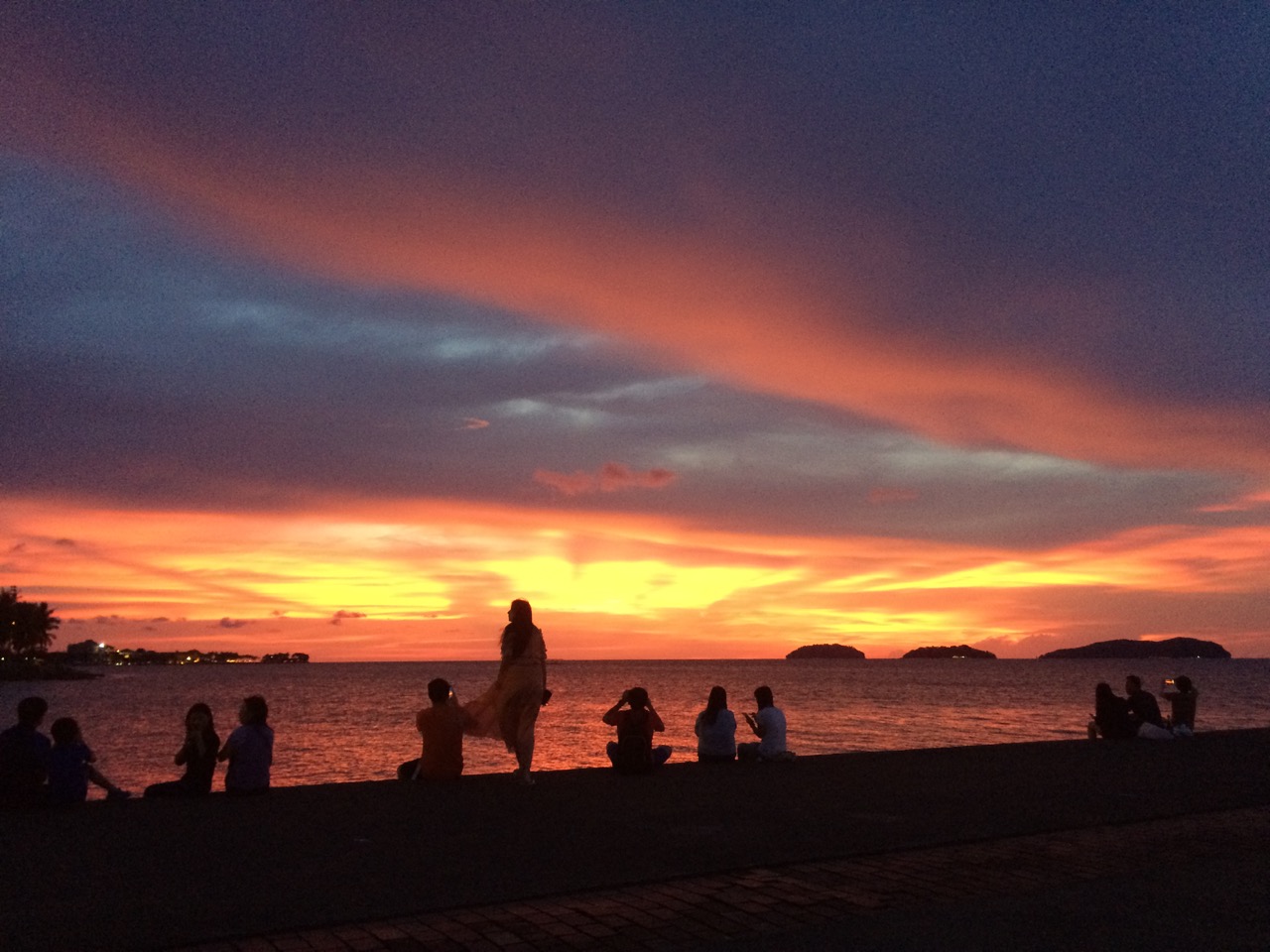

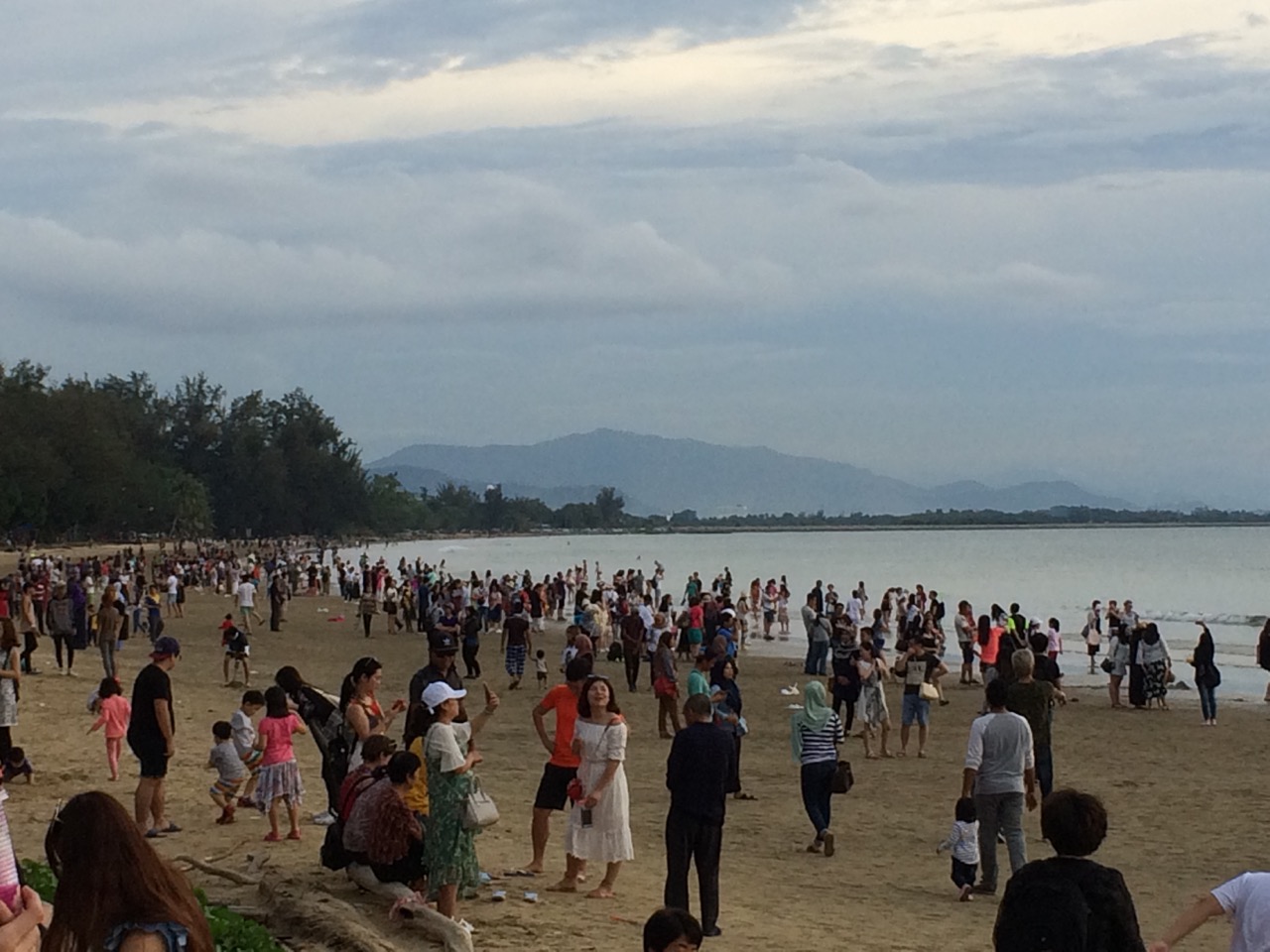 I wondered if many of them come from inland China and hadn’t seen a beach before. I noticed new arrivals here at the resort often get quite excited when they see the fish swimming in the marina!
I wondered if many of them come from inland China and hadn’t seen a beach before. I noticed new arrivals here at the resort often get quite excited when they see the fish swimming in the marina!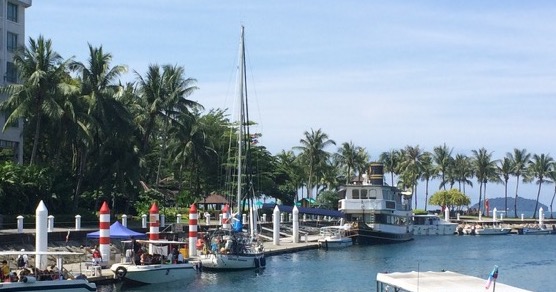 Not so good if the dock is on the starboard side. As soon as I fuelled up I left for the short 3 hour journey to my current location, in a little sandy cove just NE of the main port of KK
Not so good if the dock is on the starboard side. As soon as I fuelled up I left for the short 3 hour journey to my current location, in a little sandy cove just NE of the main port of KK The islands look lovely, but crowded with fast day-tripper boats razzing around everywhere.
The islands look lovely, but crowded with fast day-tripper boats razzing around everywhere.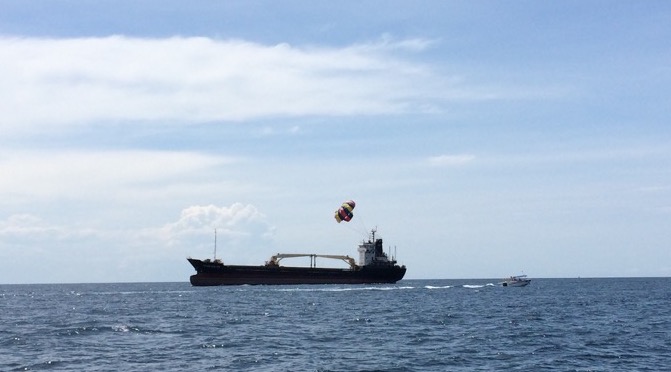 One cut right across my bow, and I wondered what might happen should he misjudge things and the poor lass in the parachute found her line wrapped around my mast.
One cut right across my bow, and I wondered what might happen should he misjudge things and the poor lass in the parachute found her line wrapped around my mast. 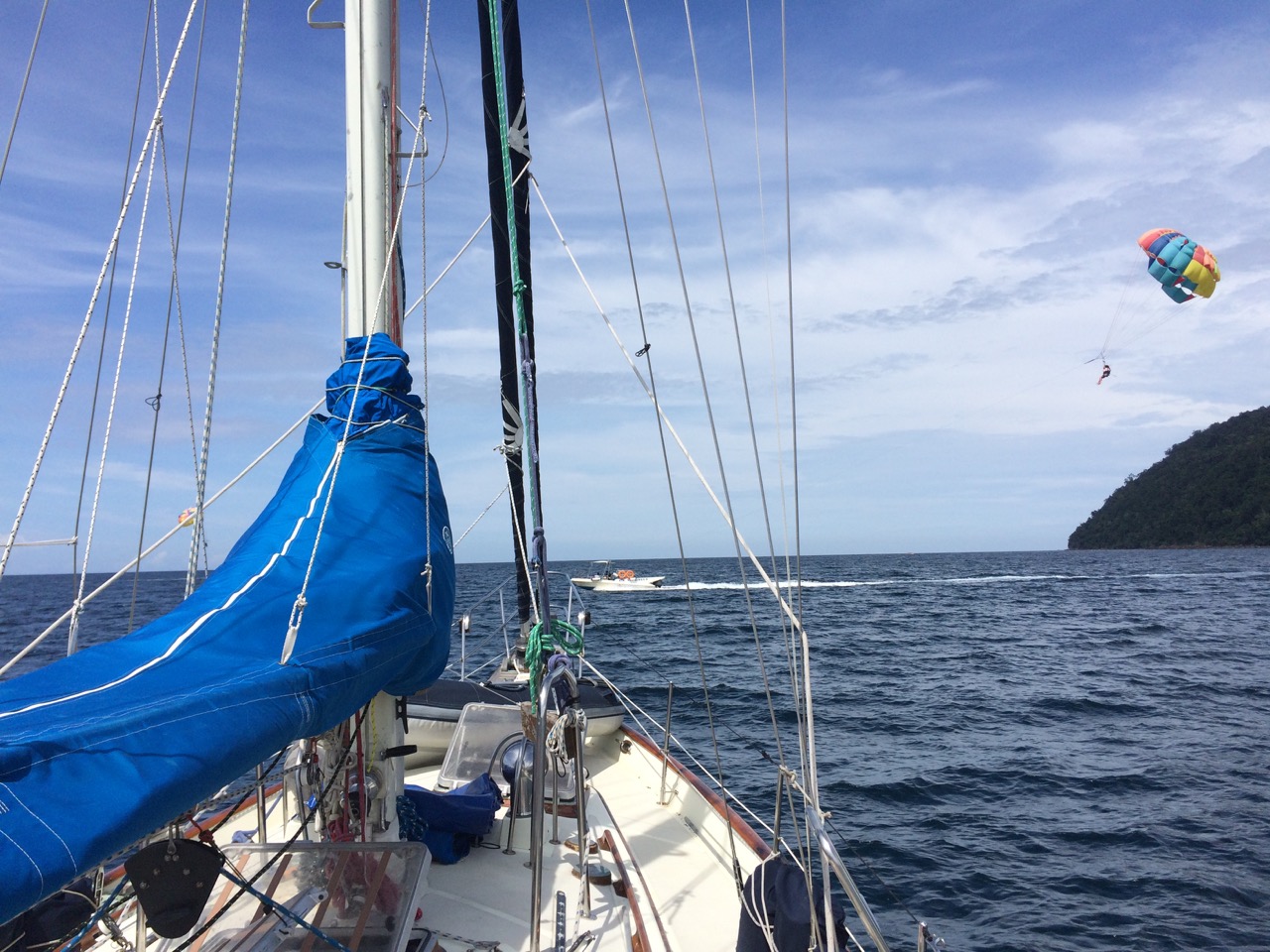 I don’t think we covered that on the RYA Yacht Master course.
I don’t think we covered that on the RYA Yacht Master course.